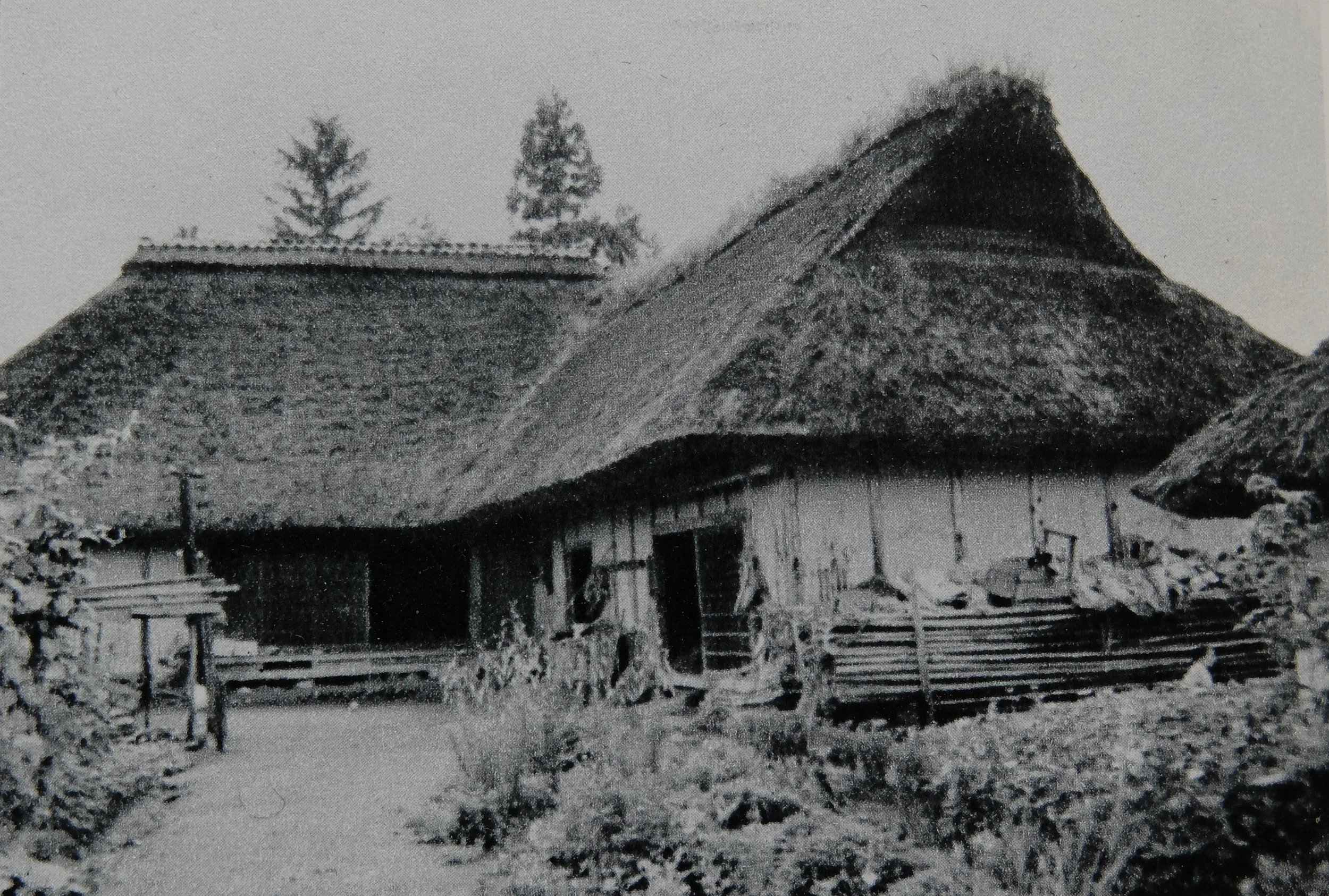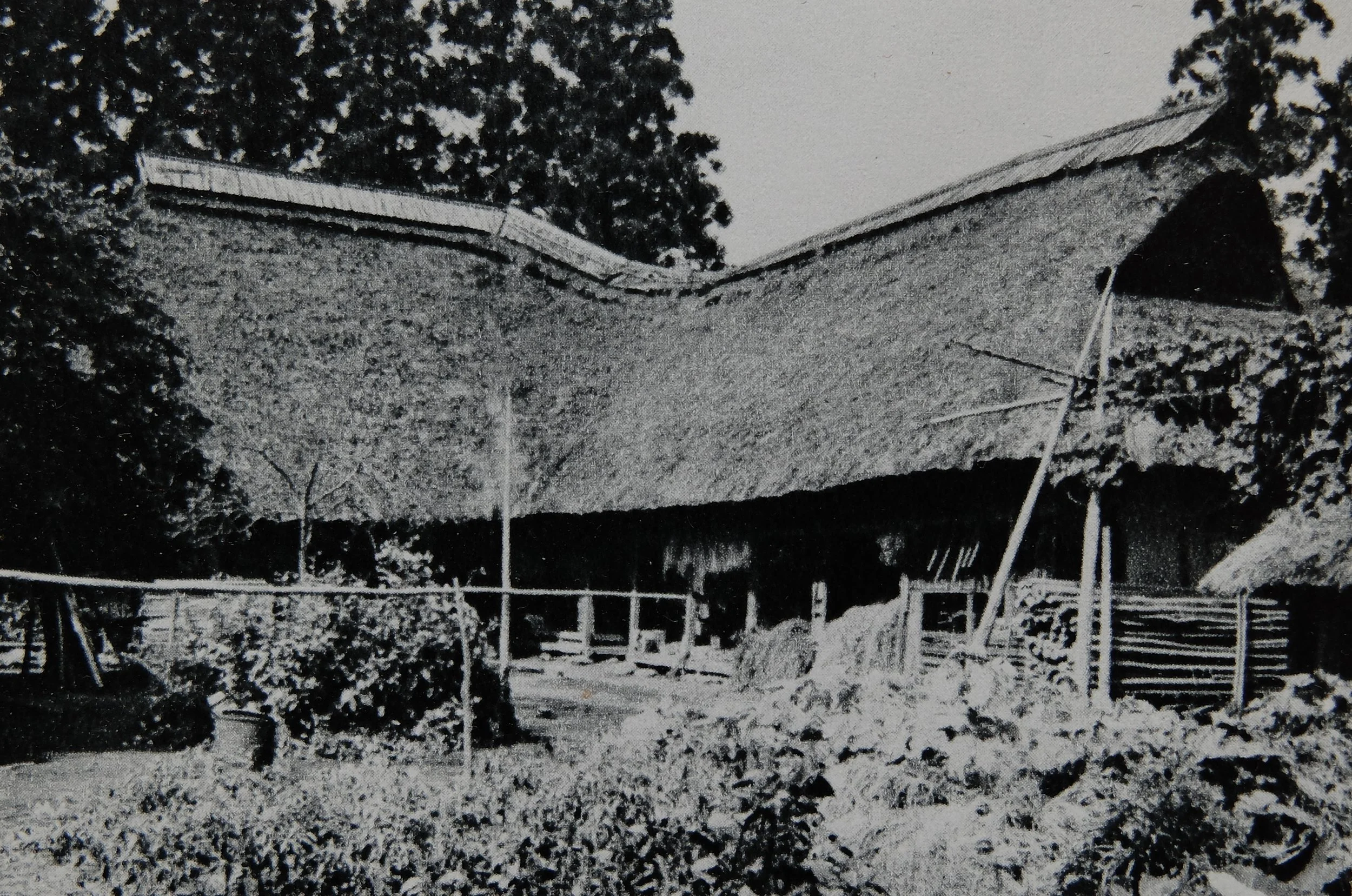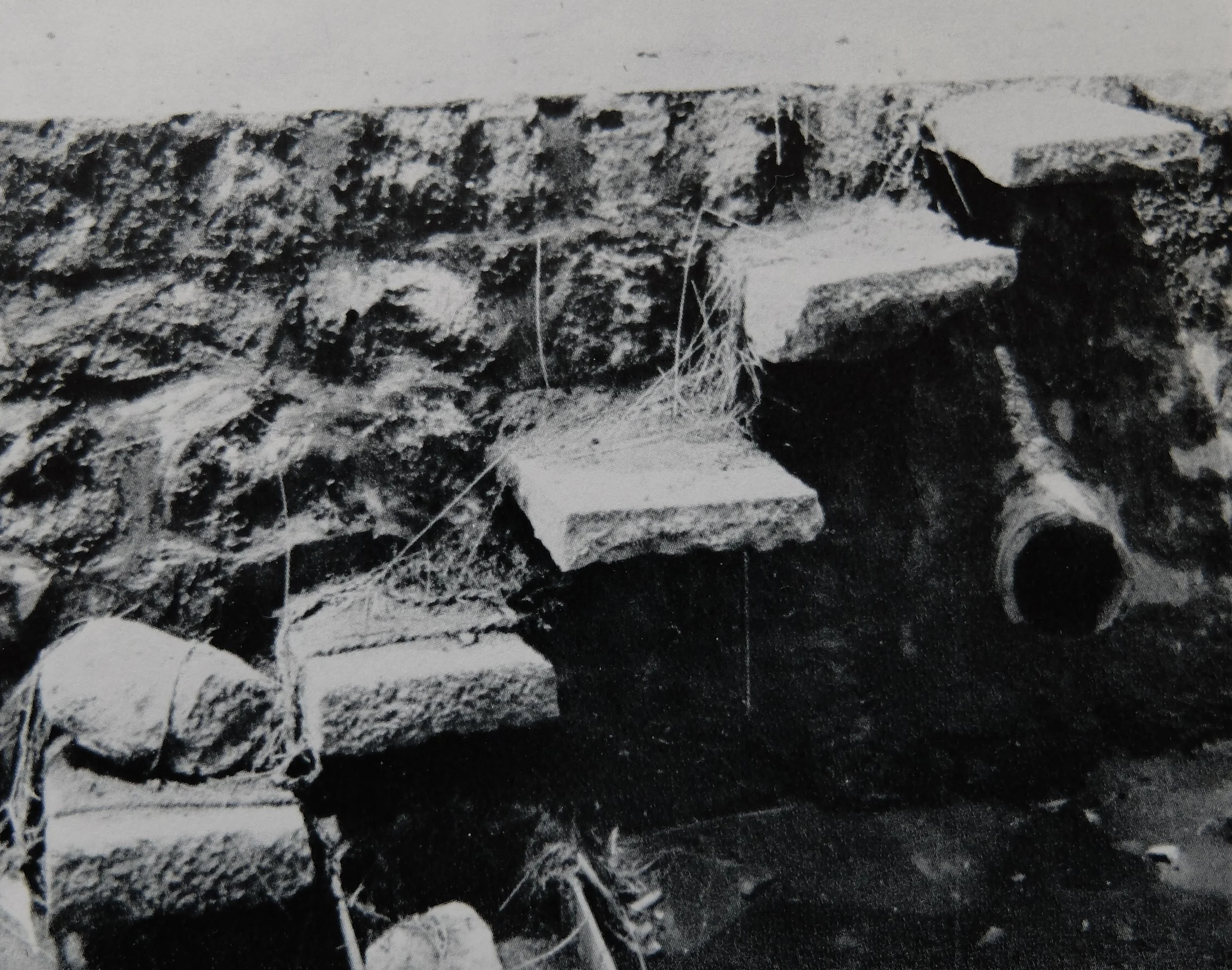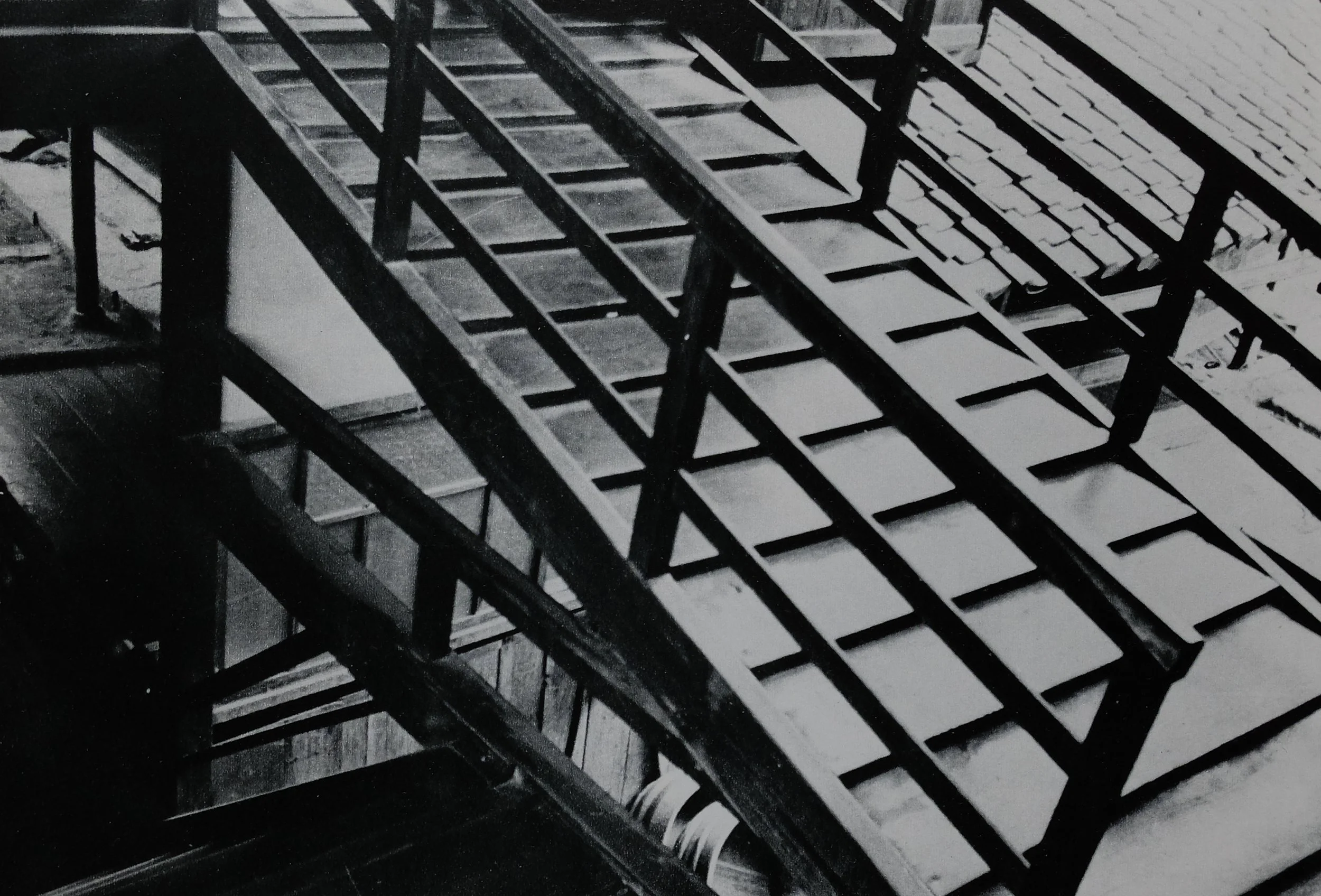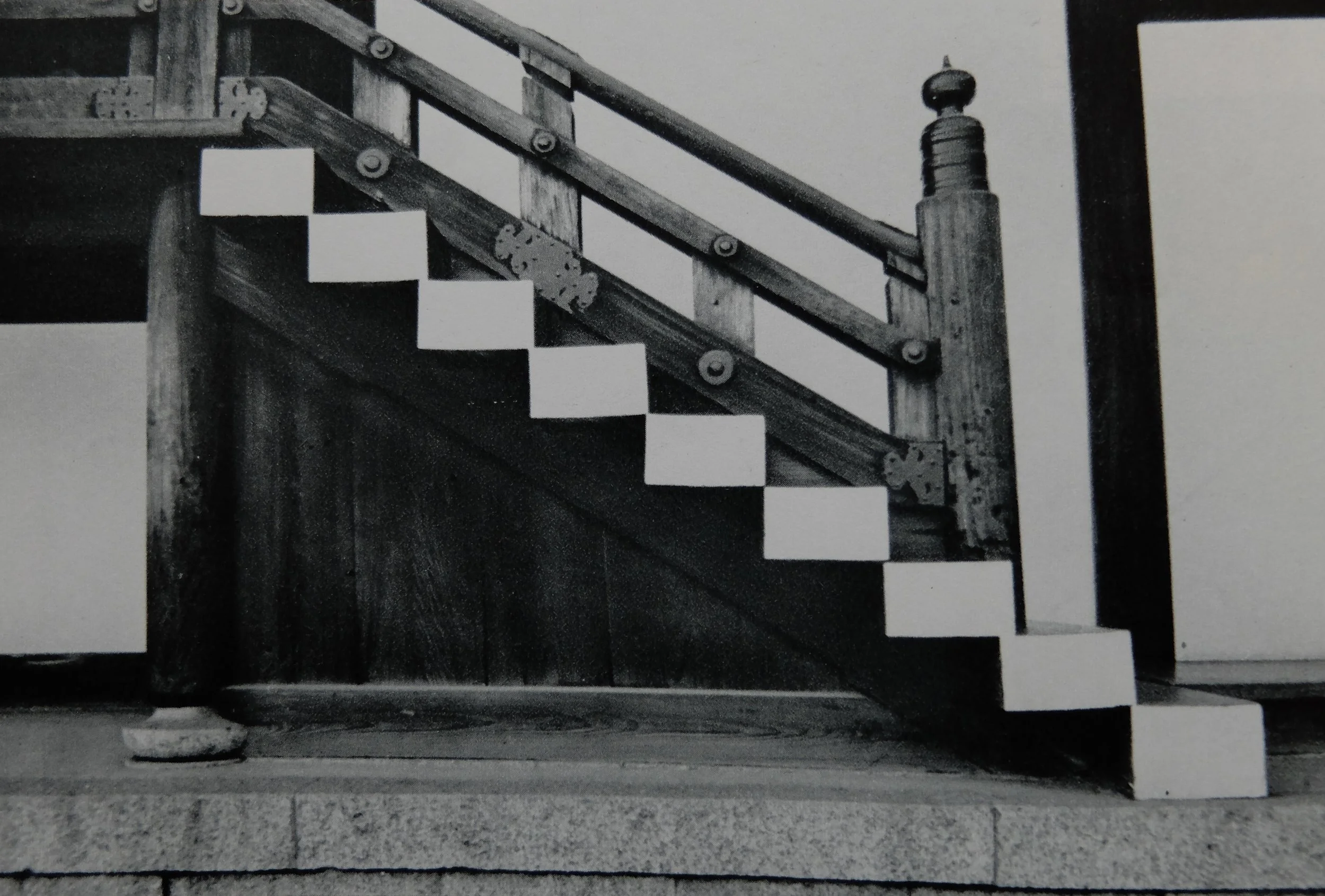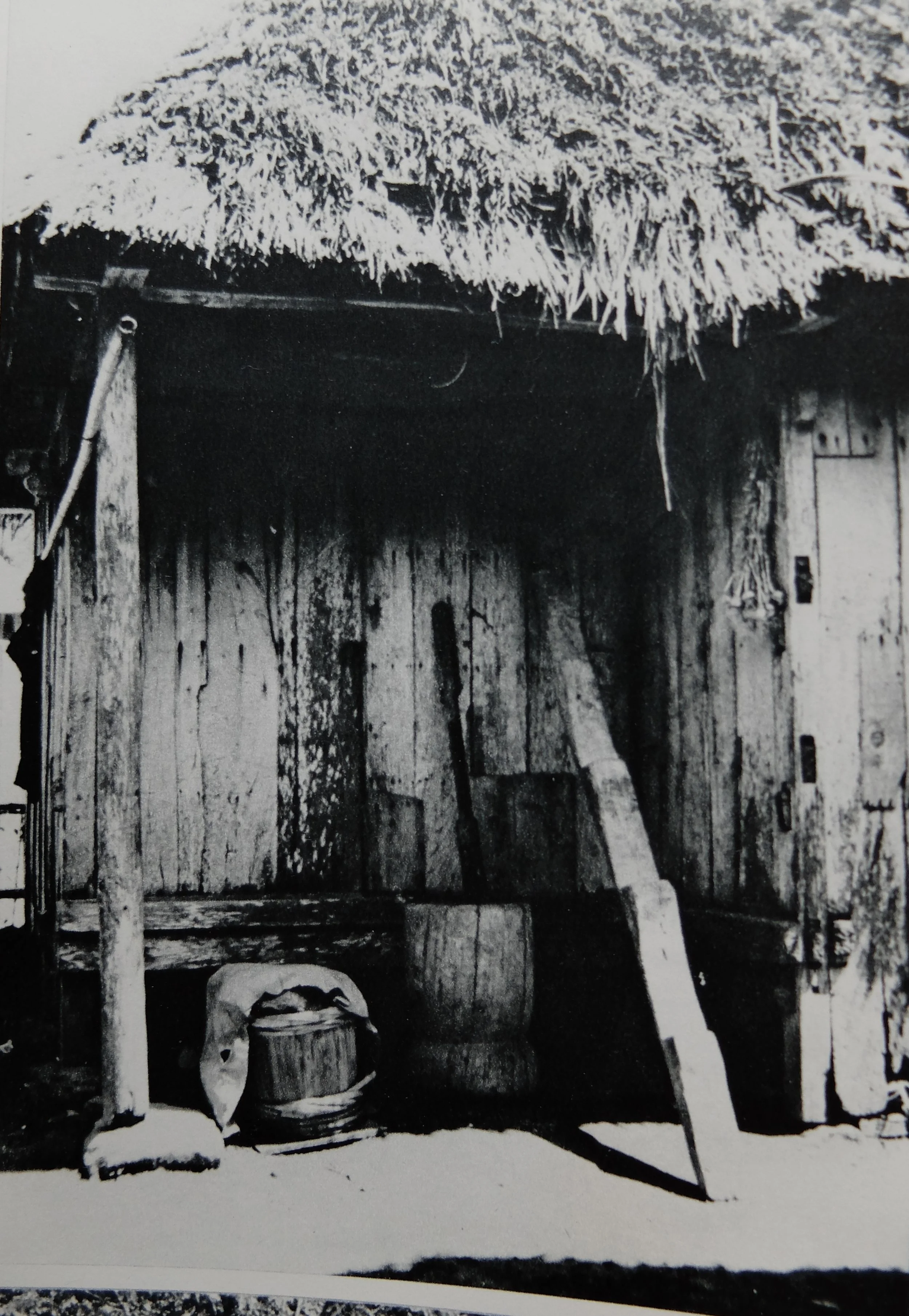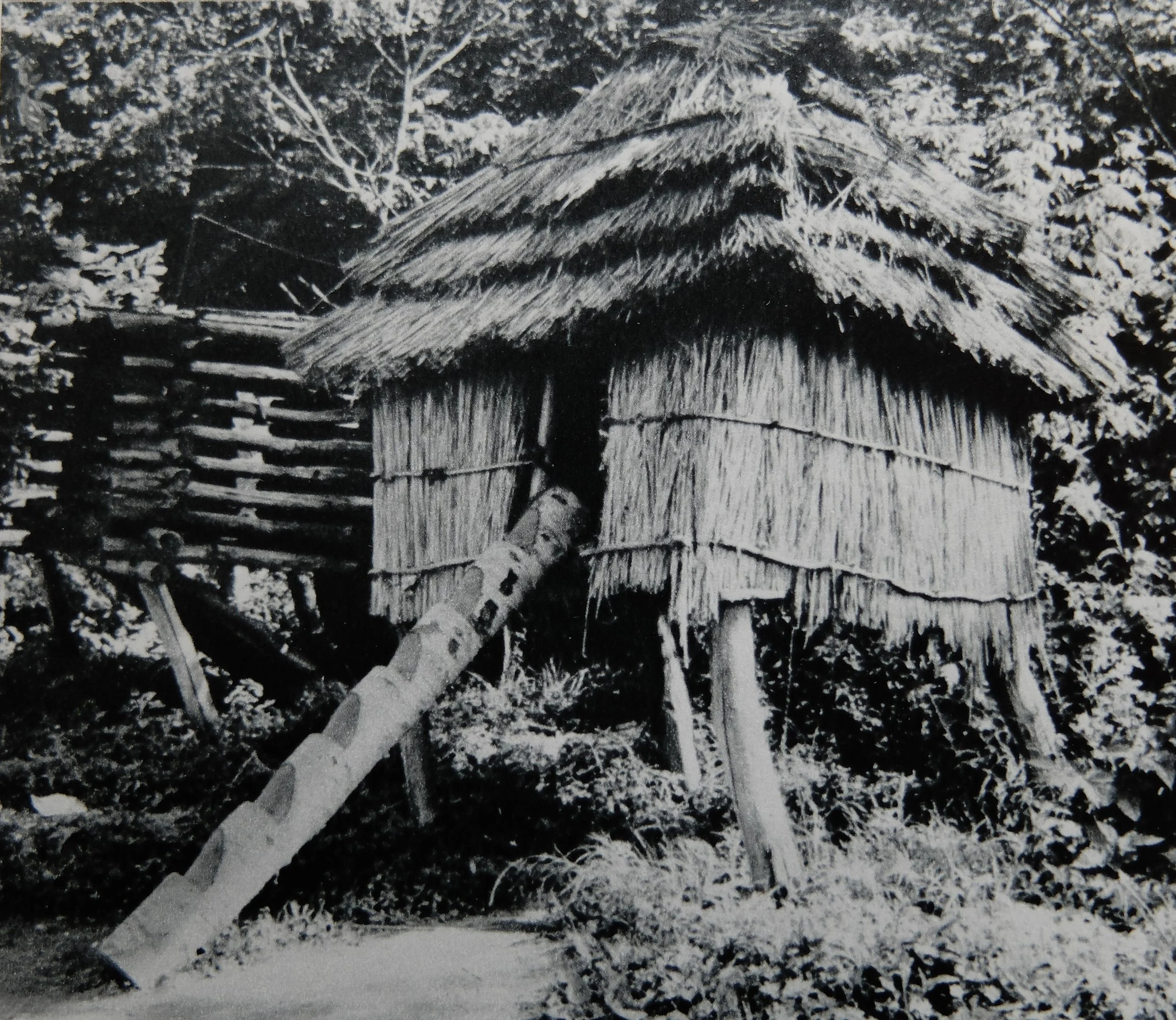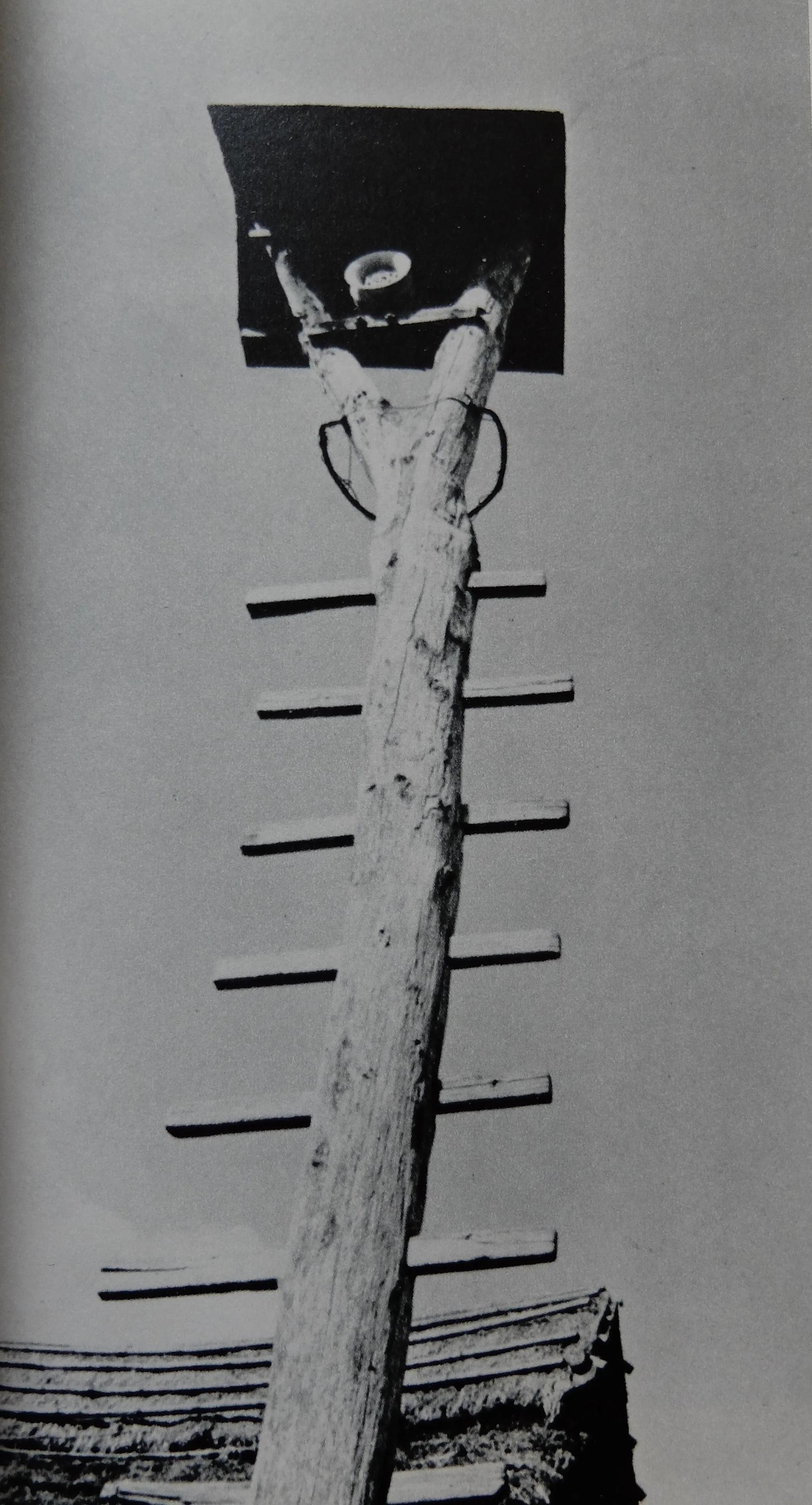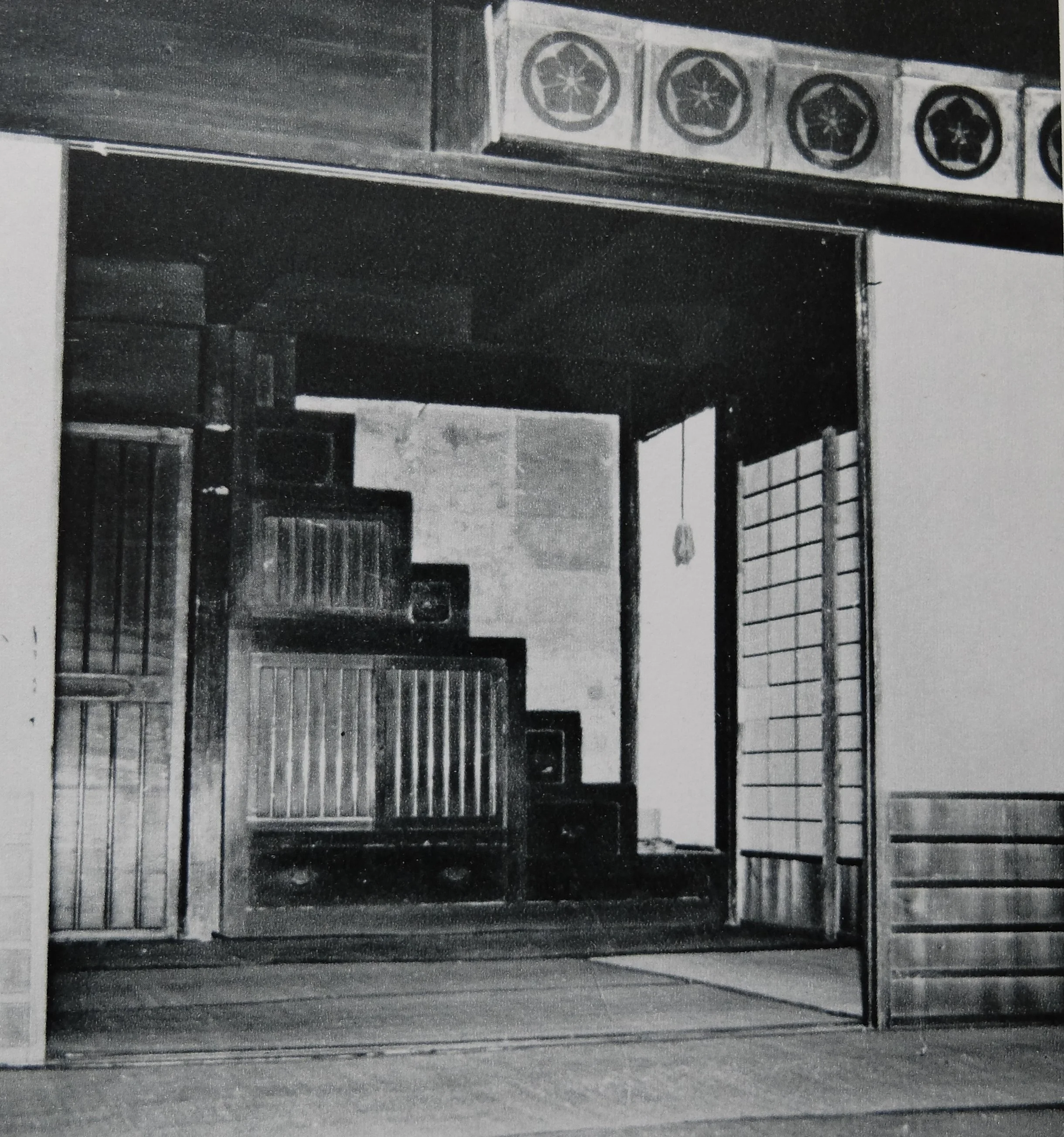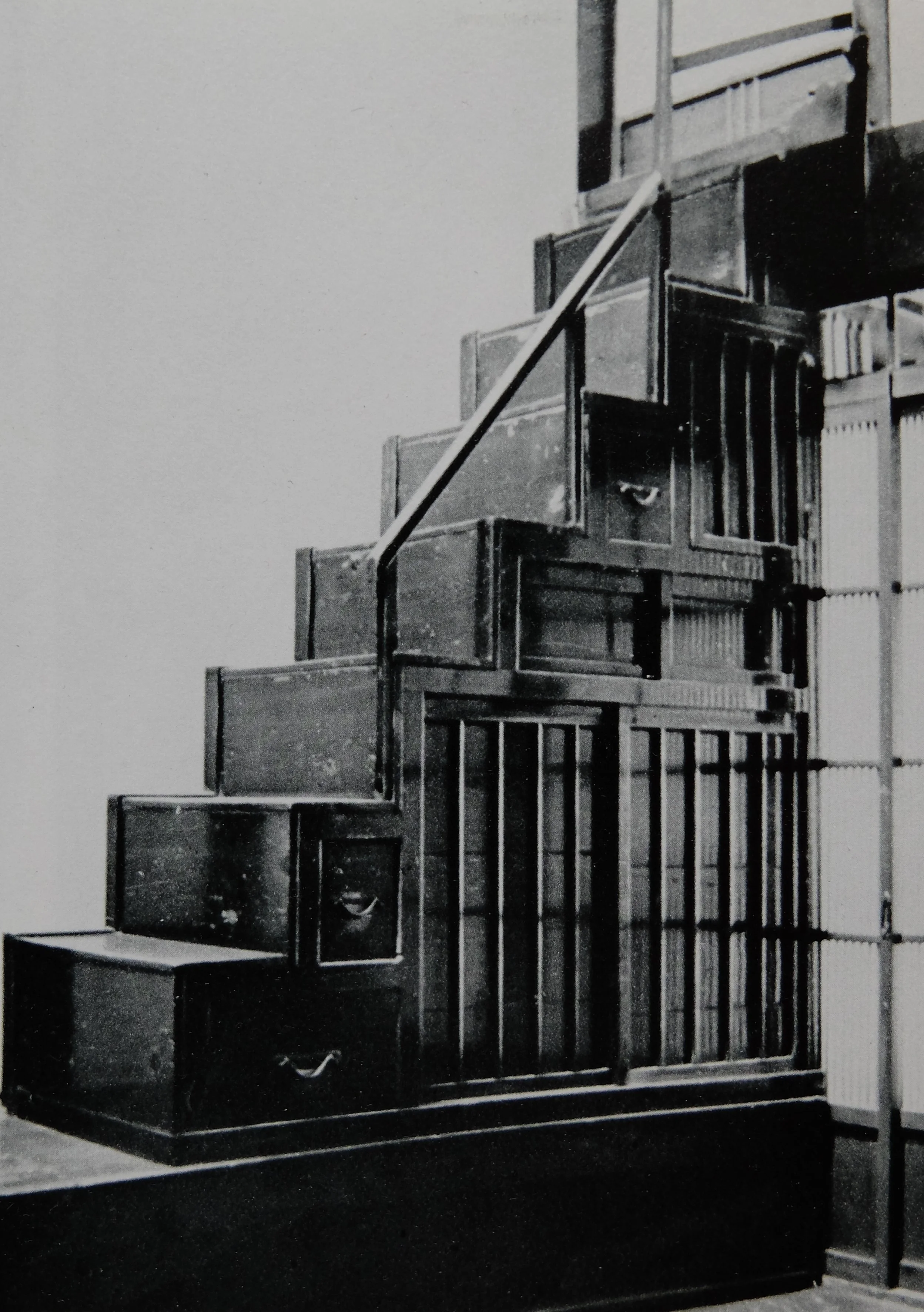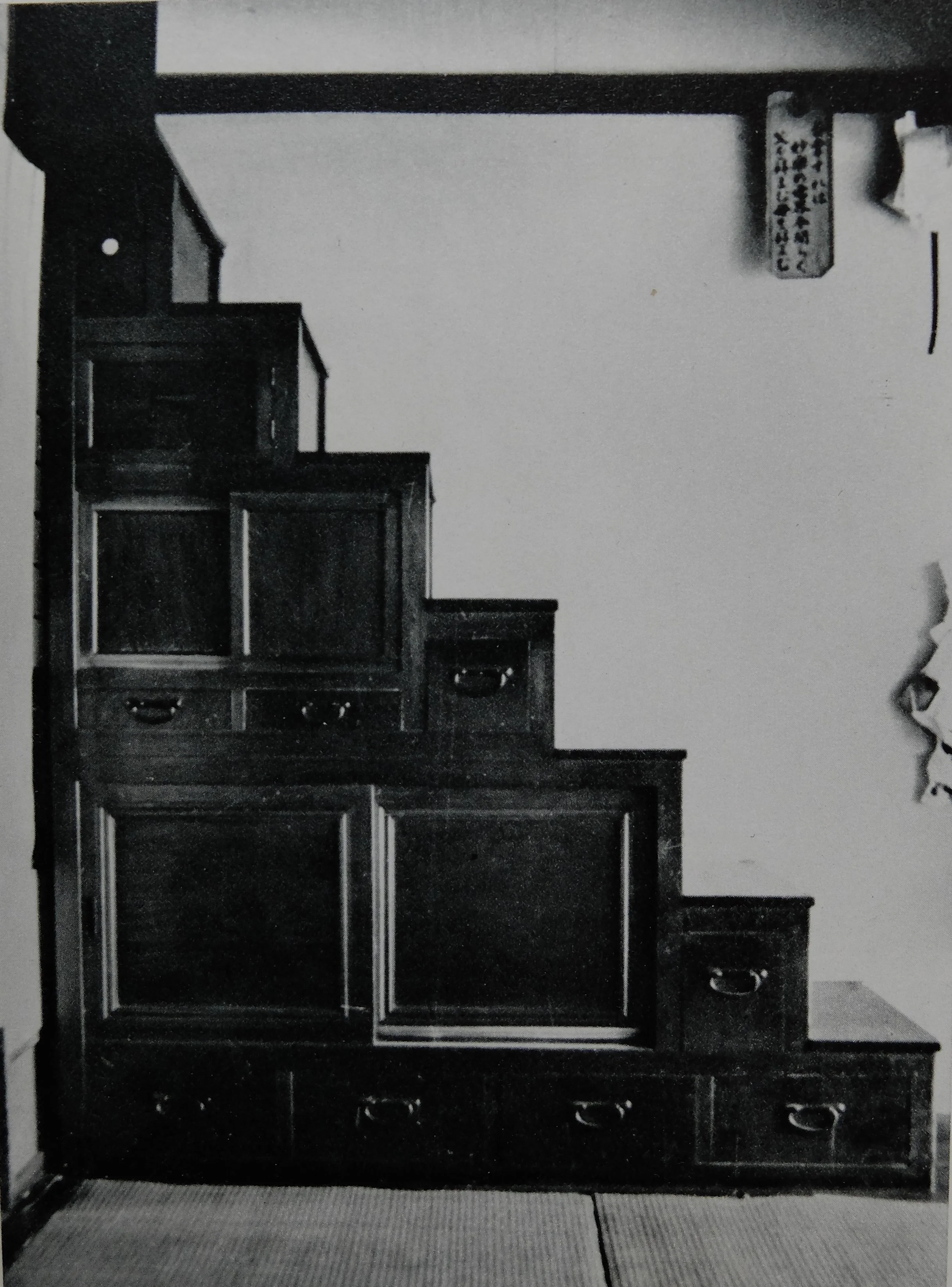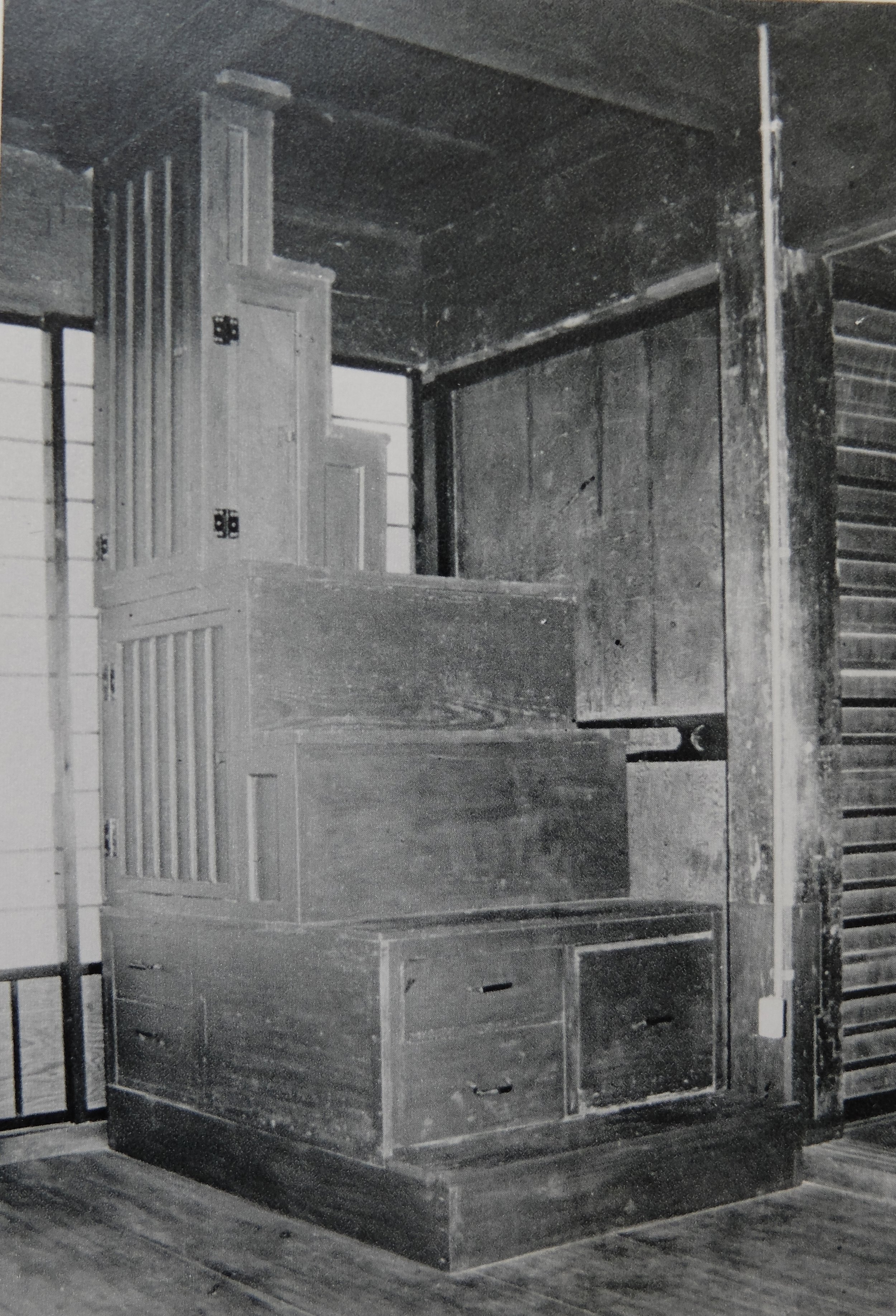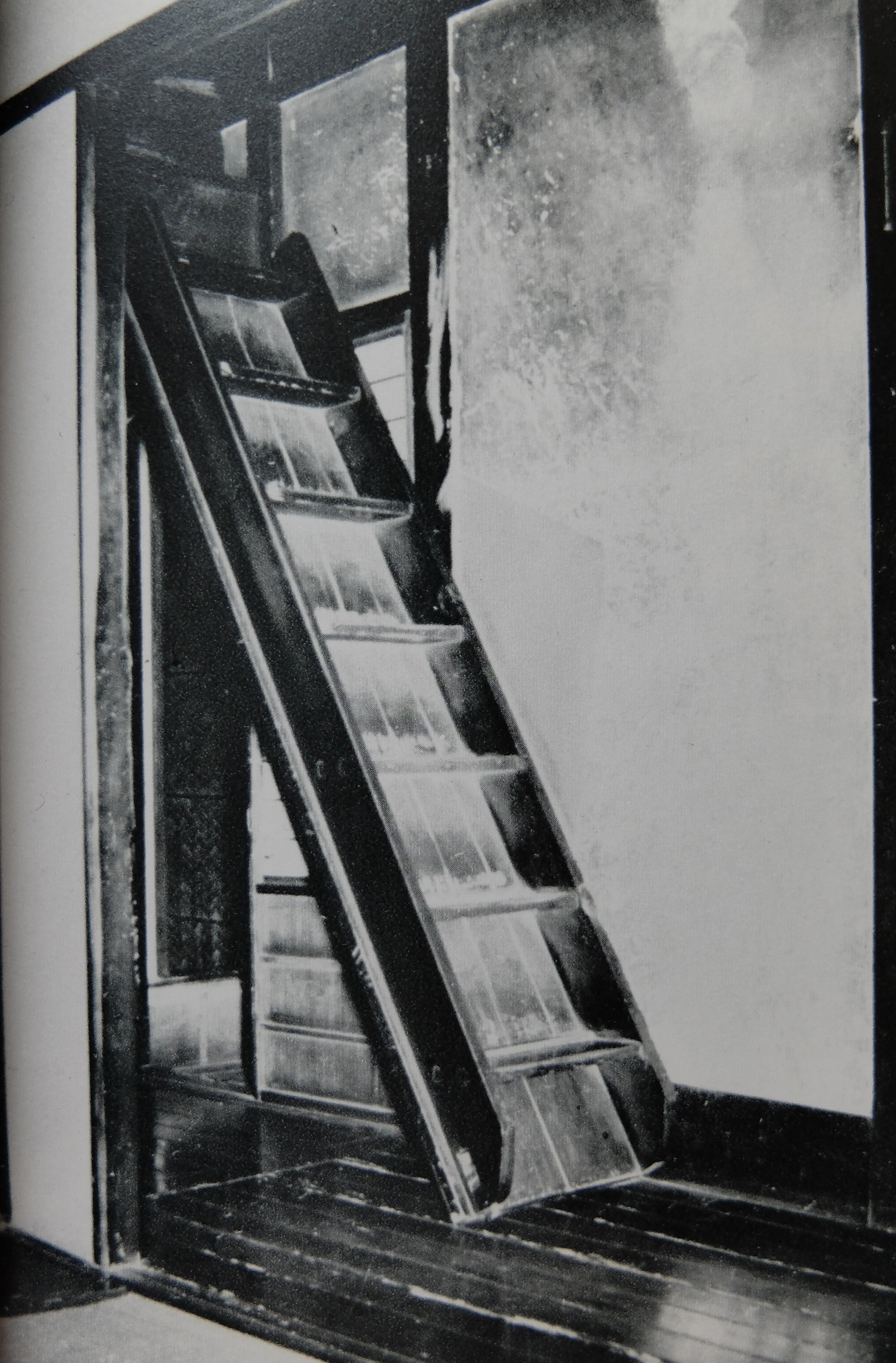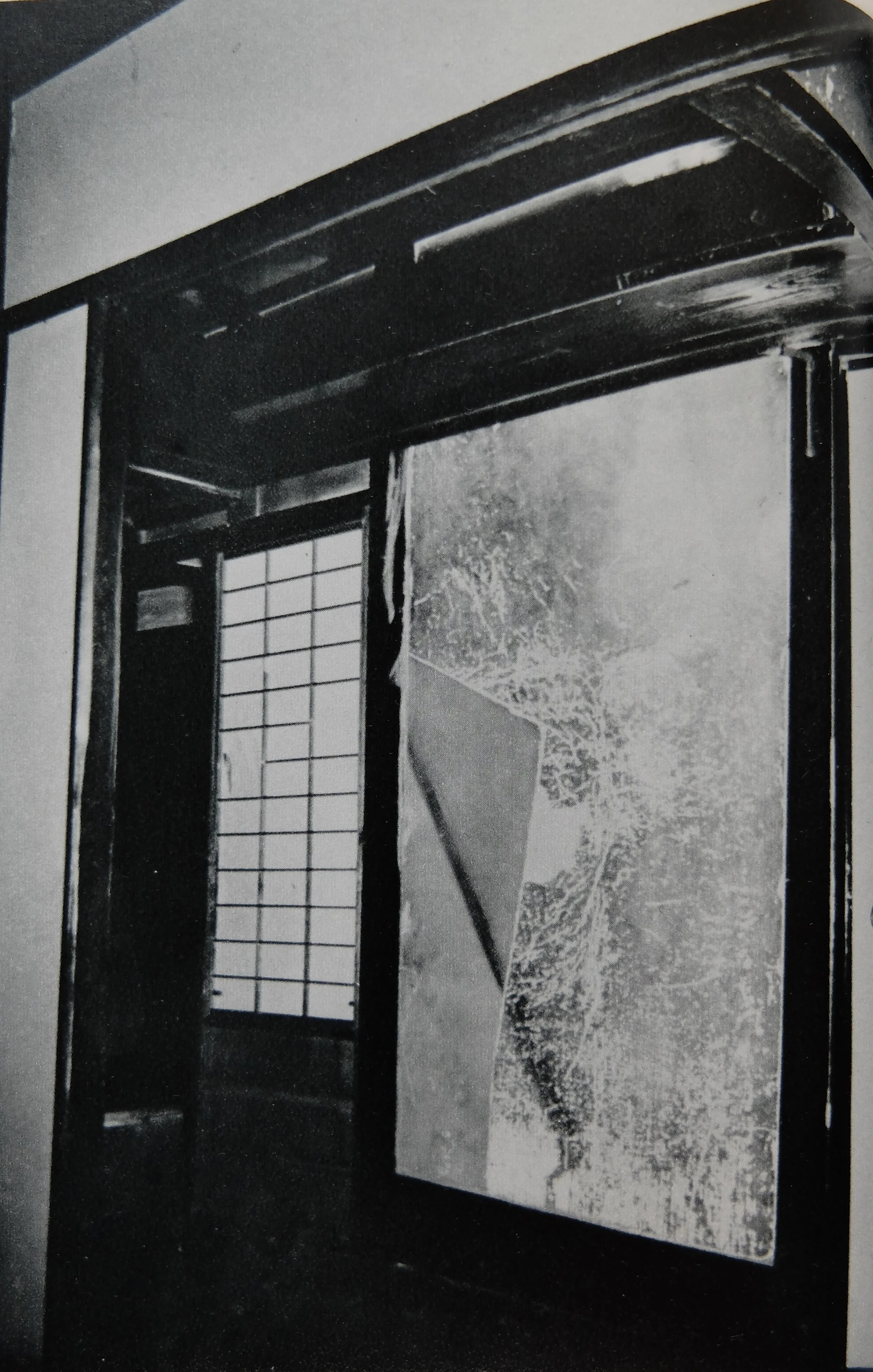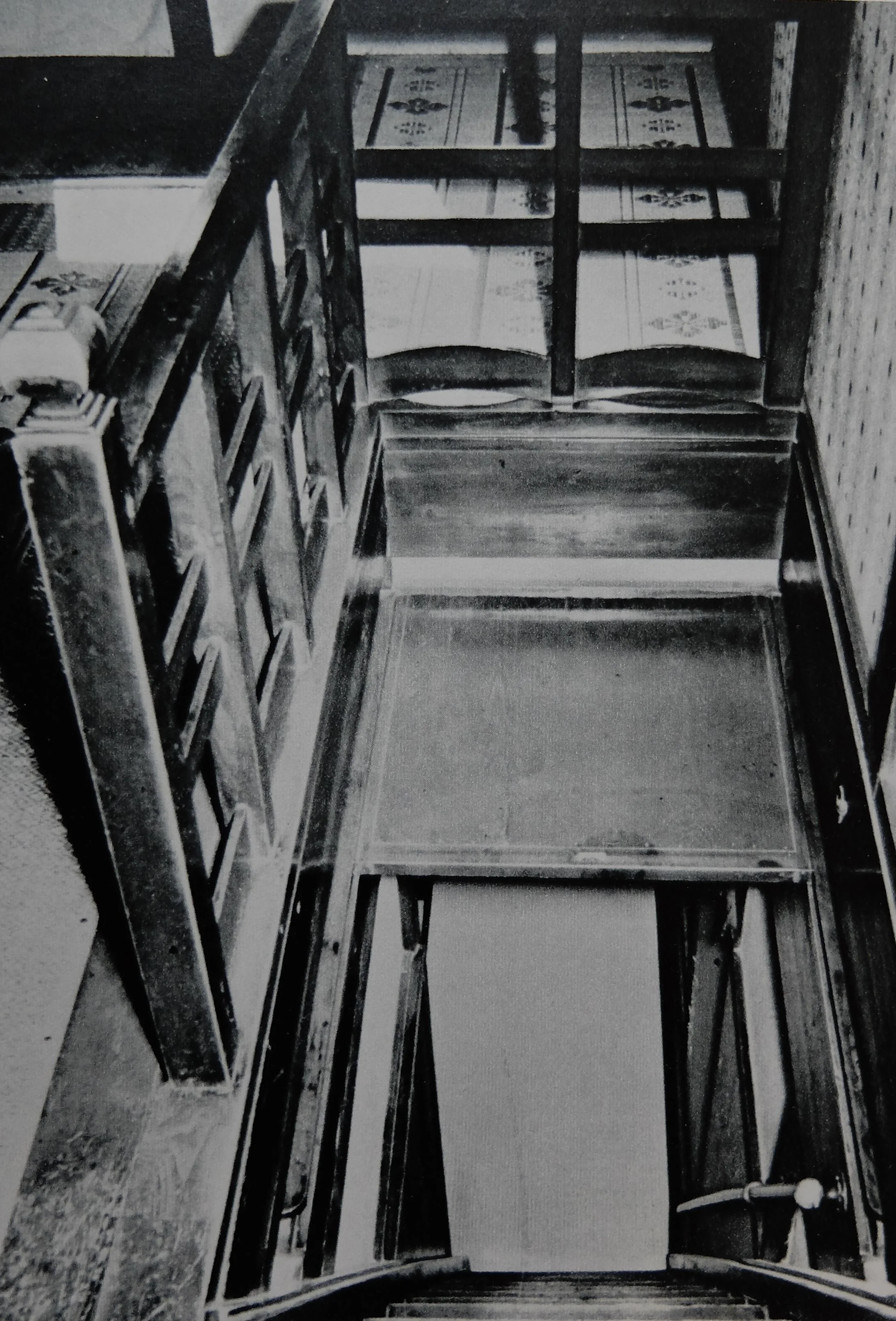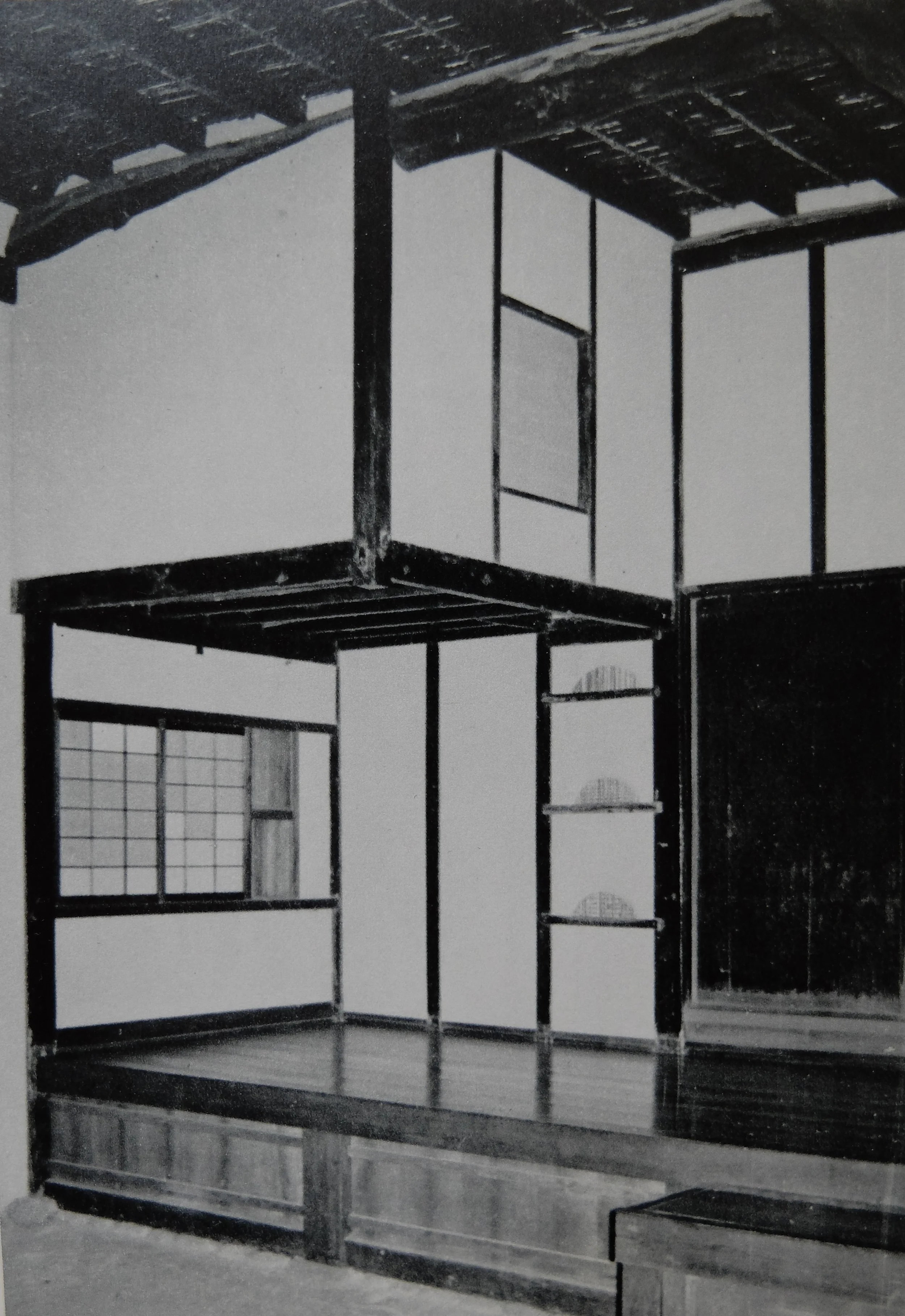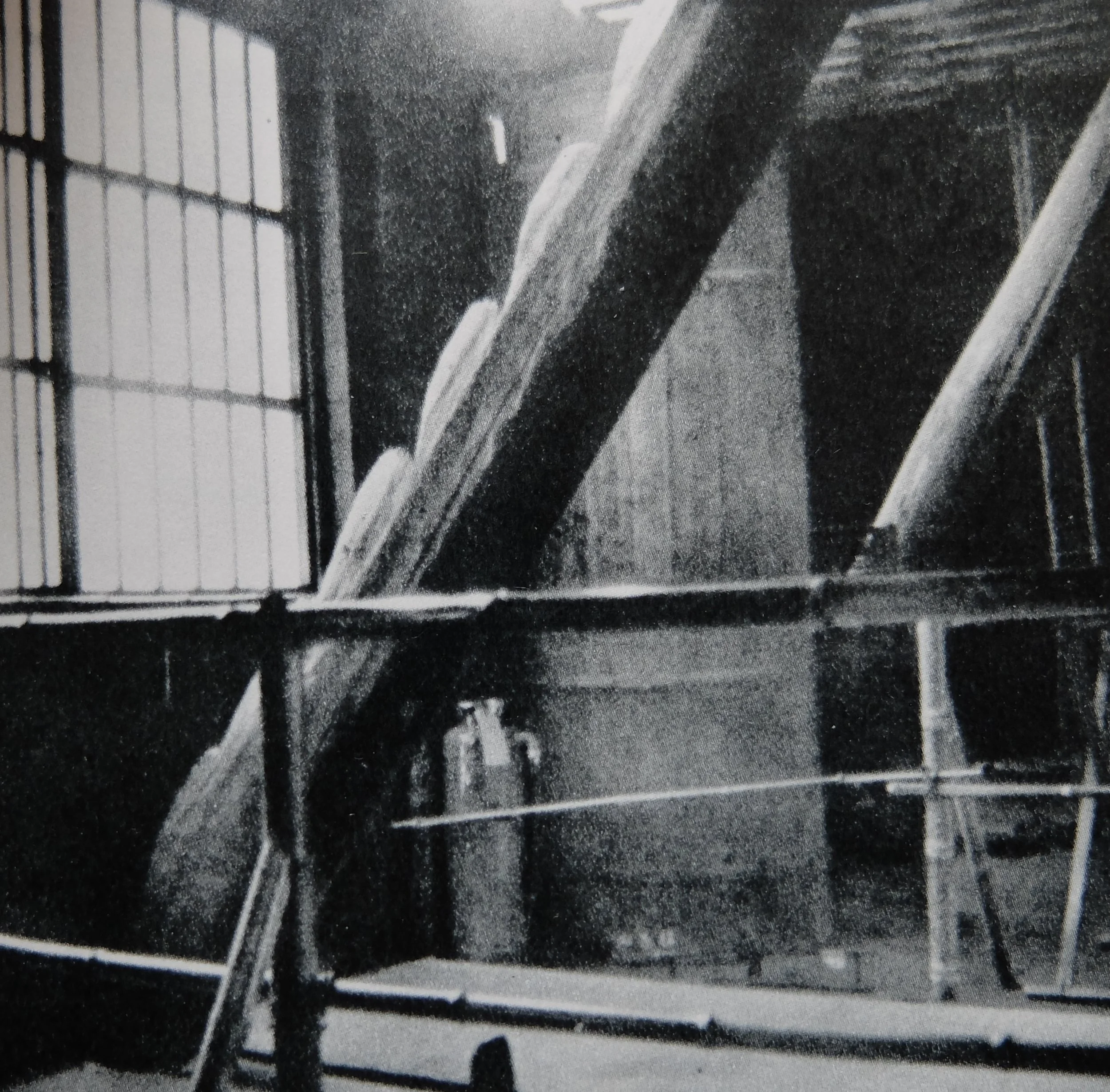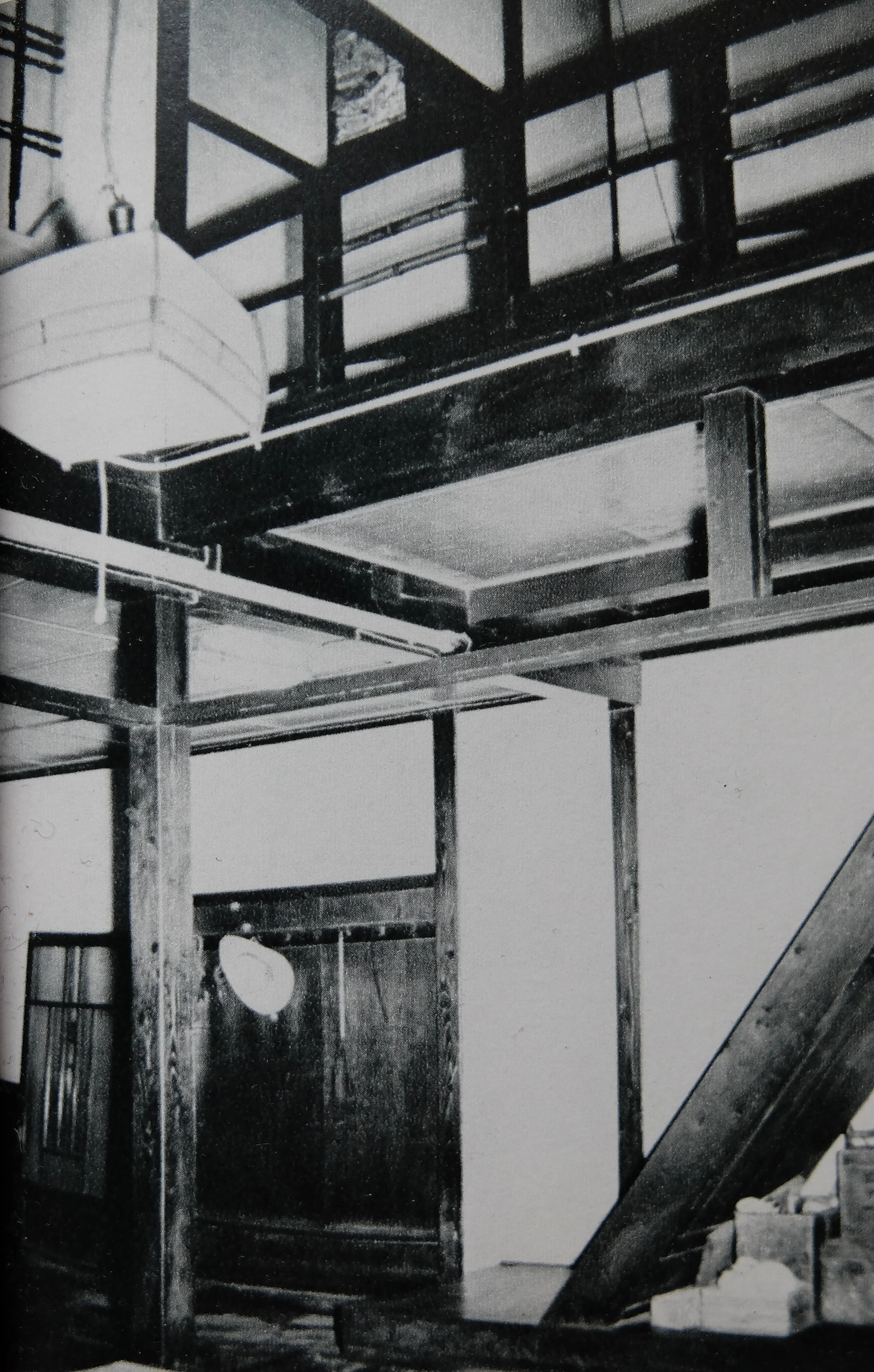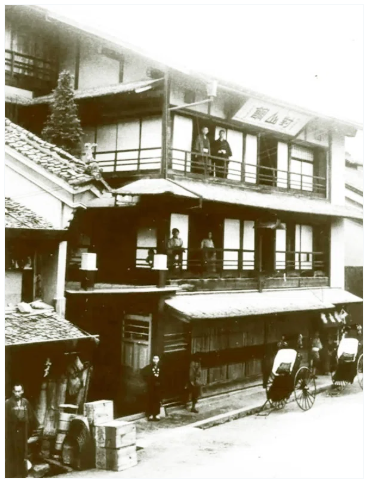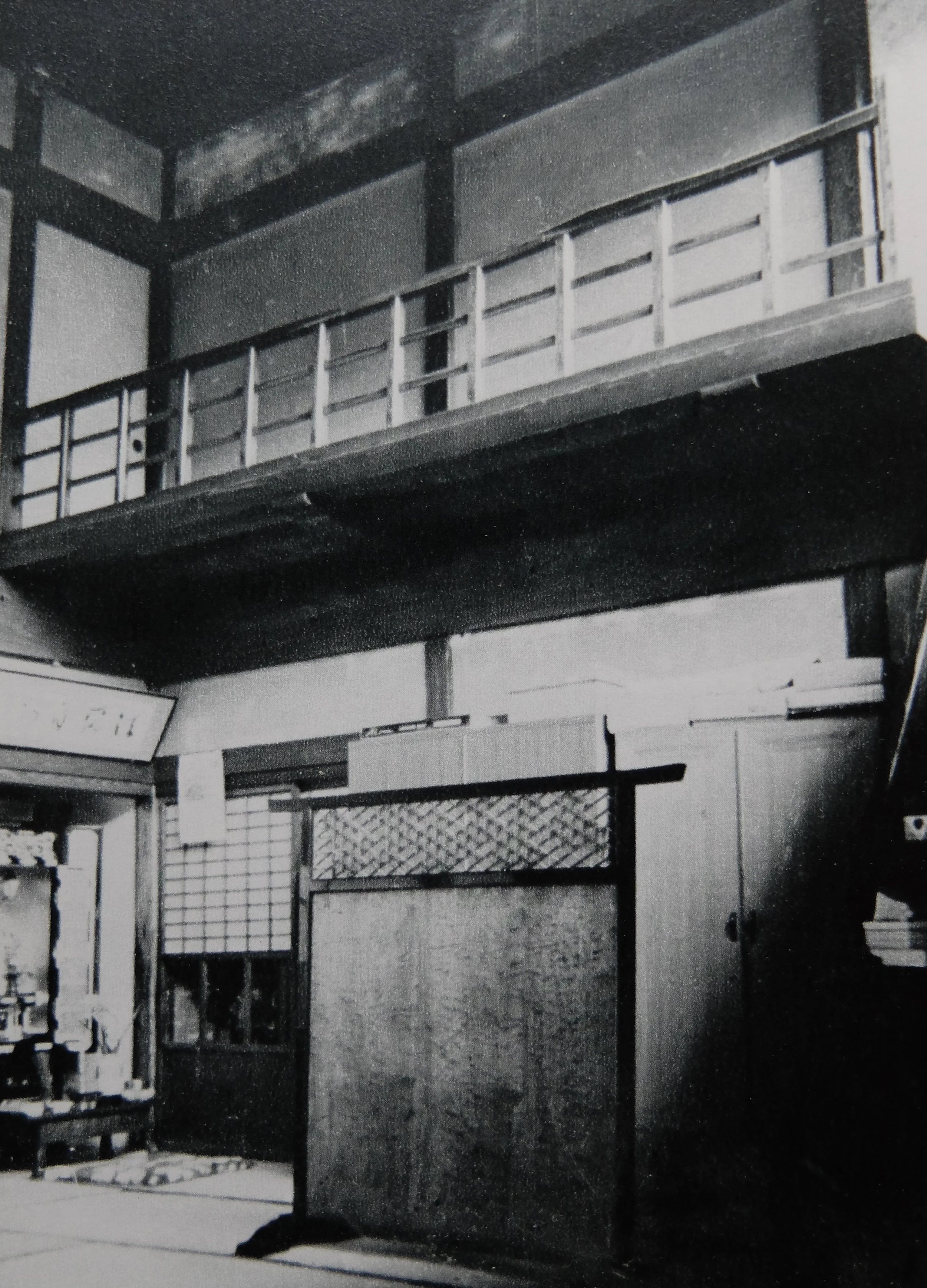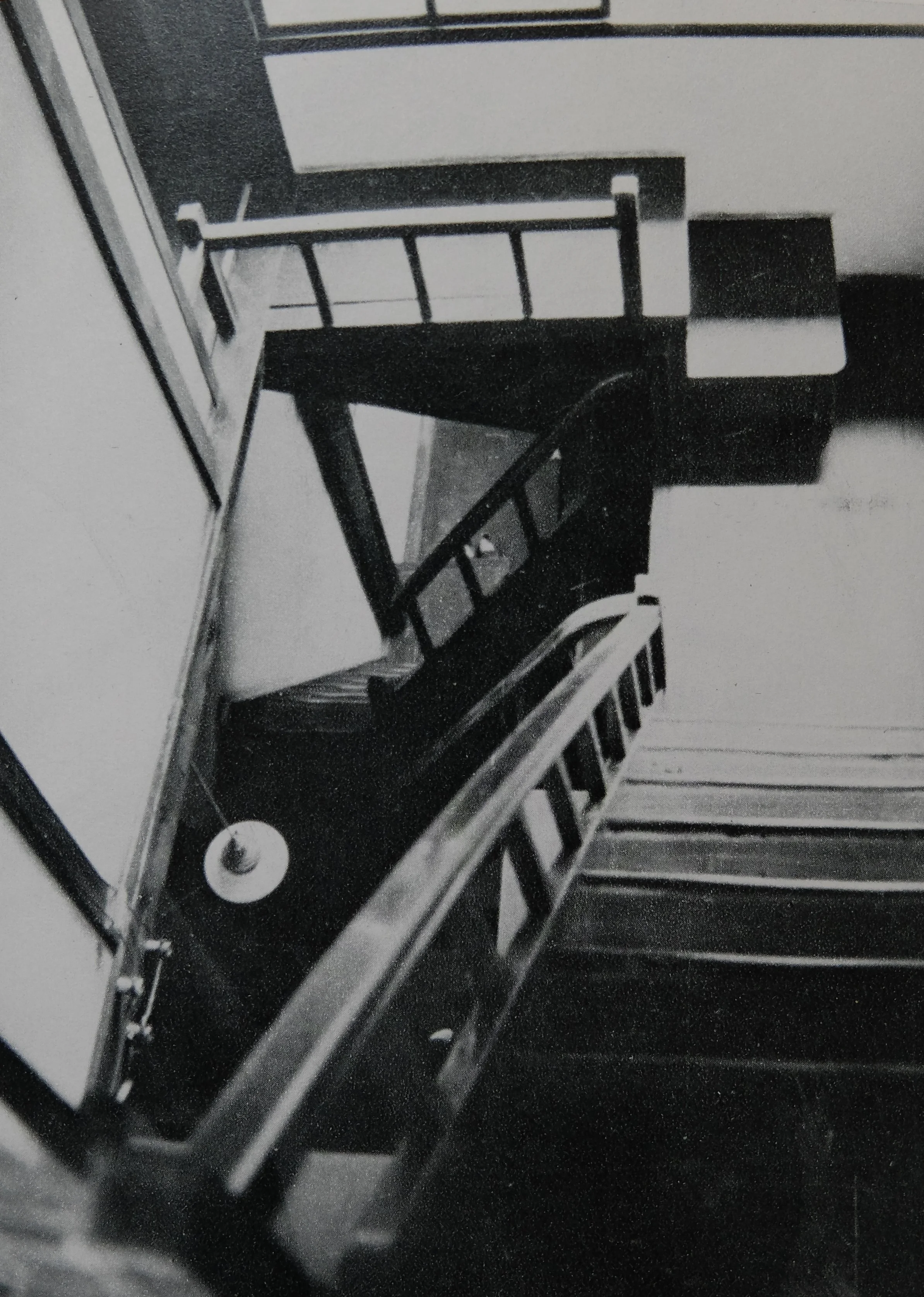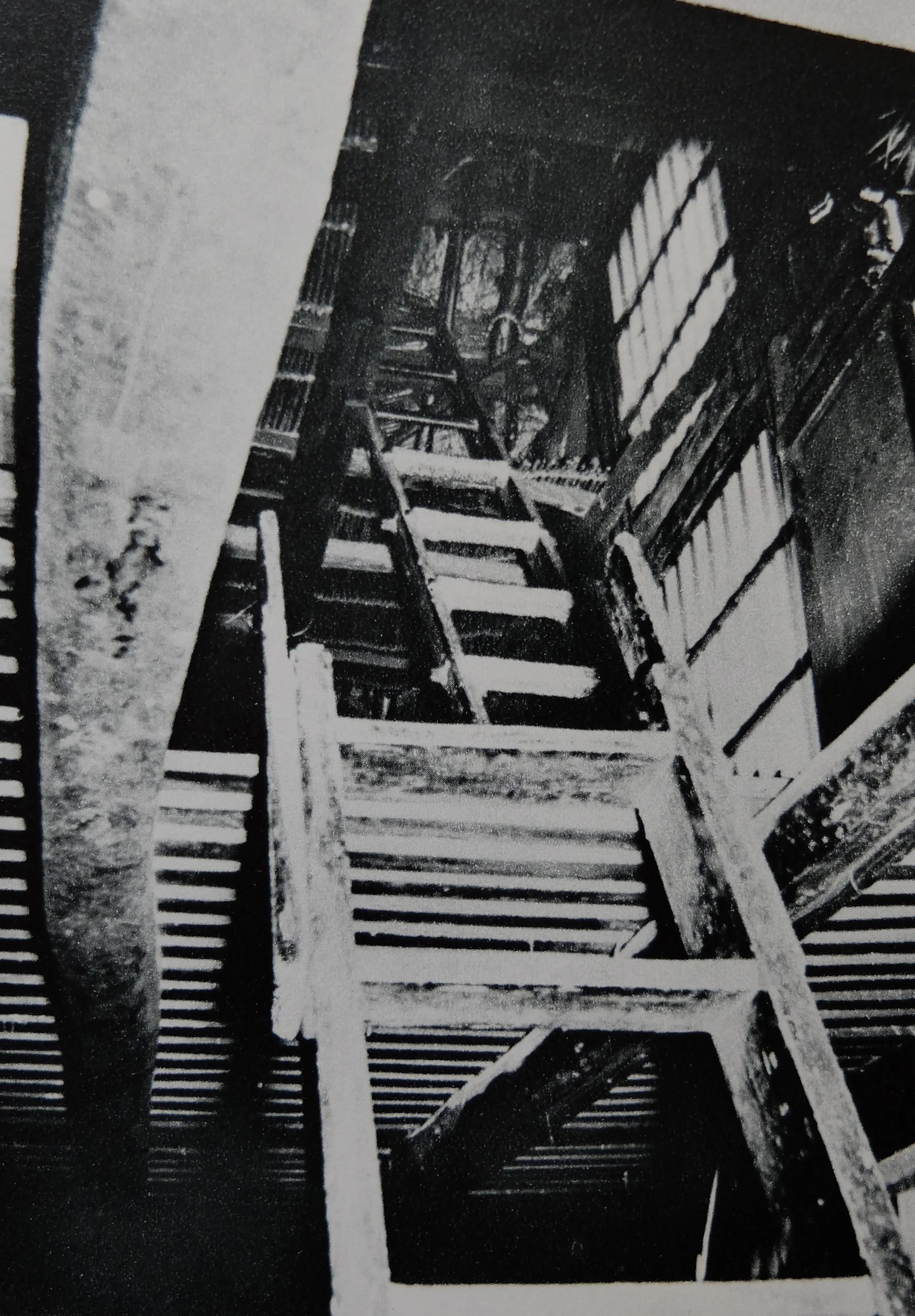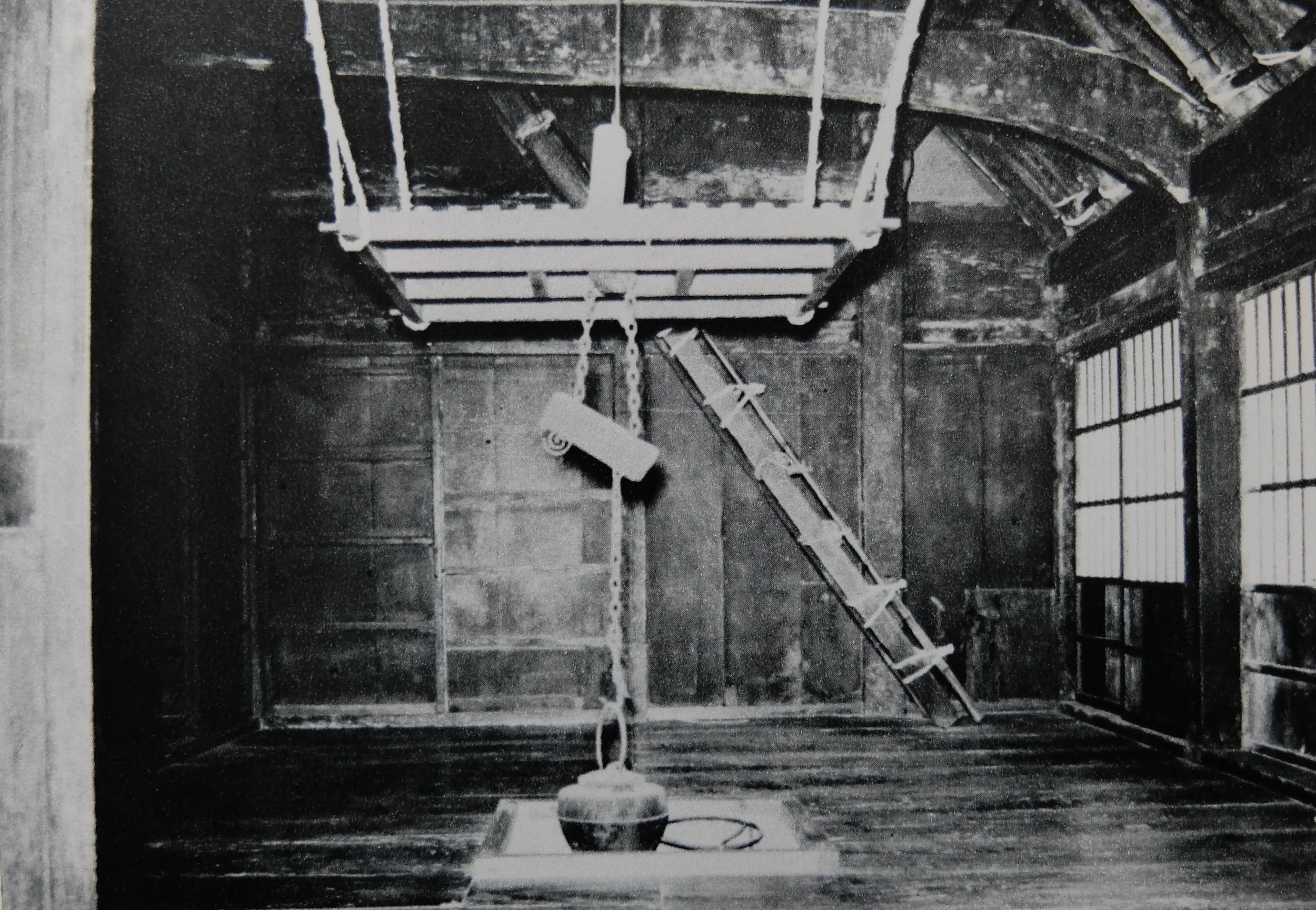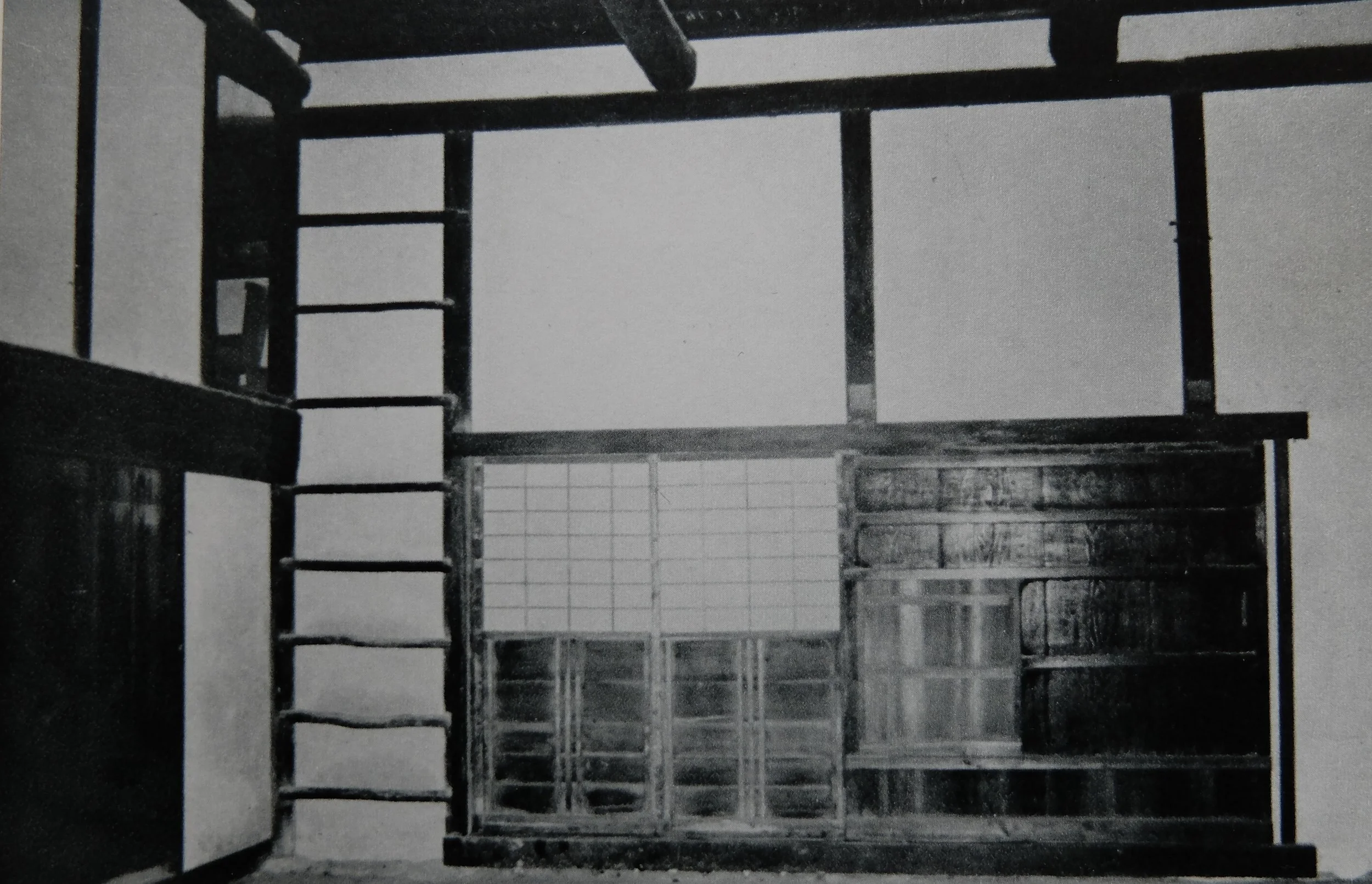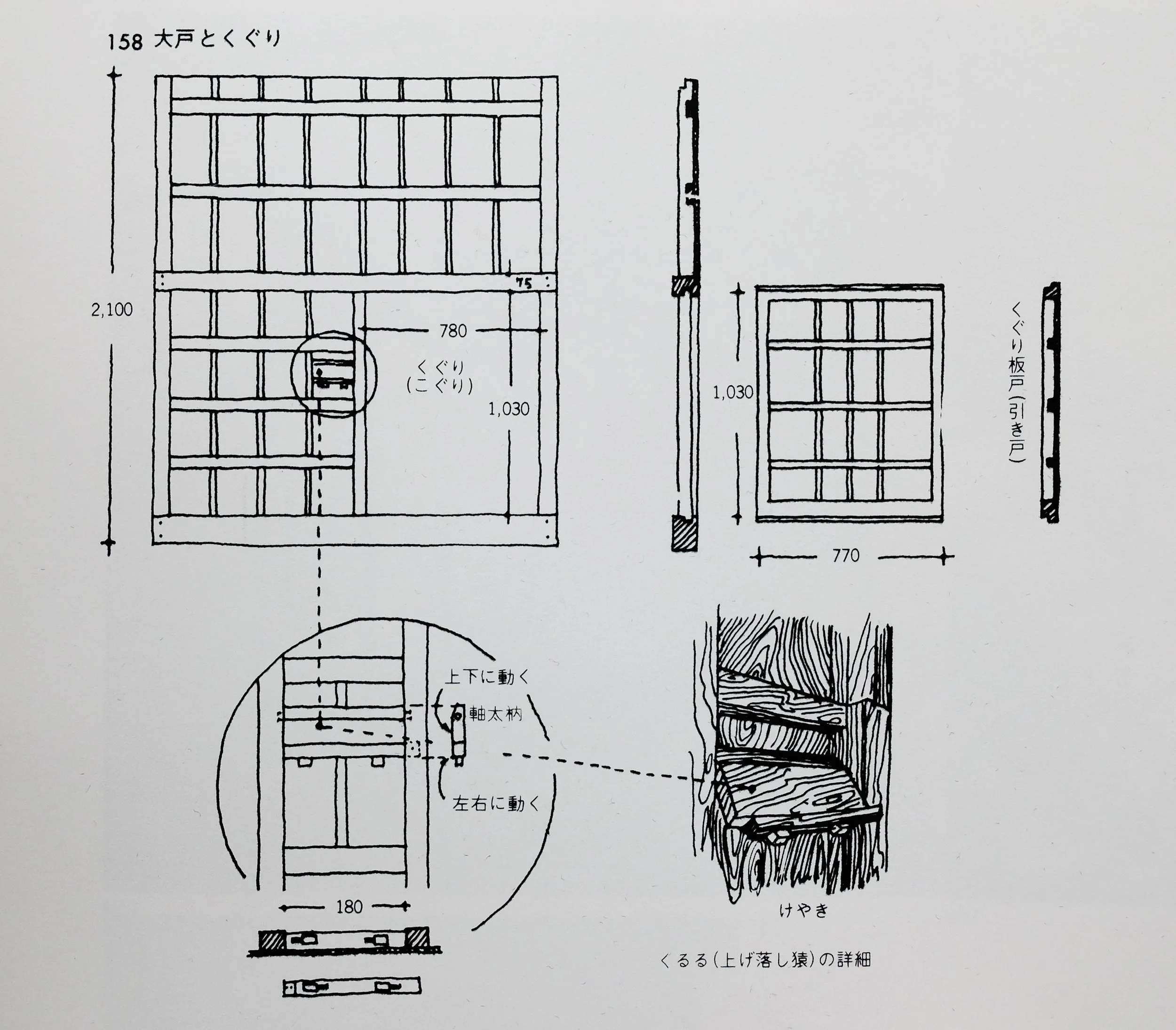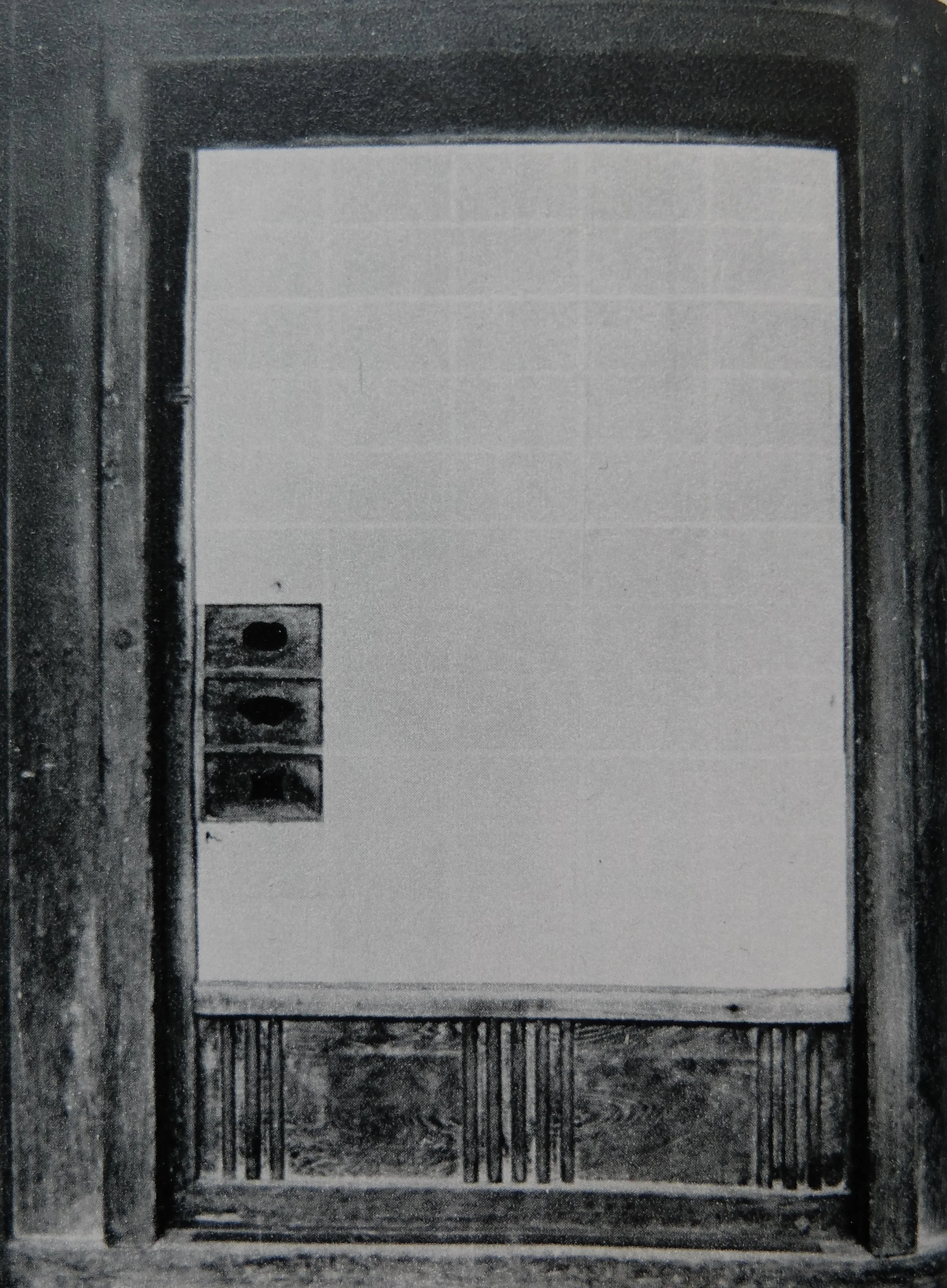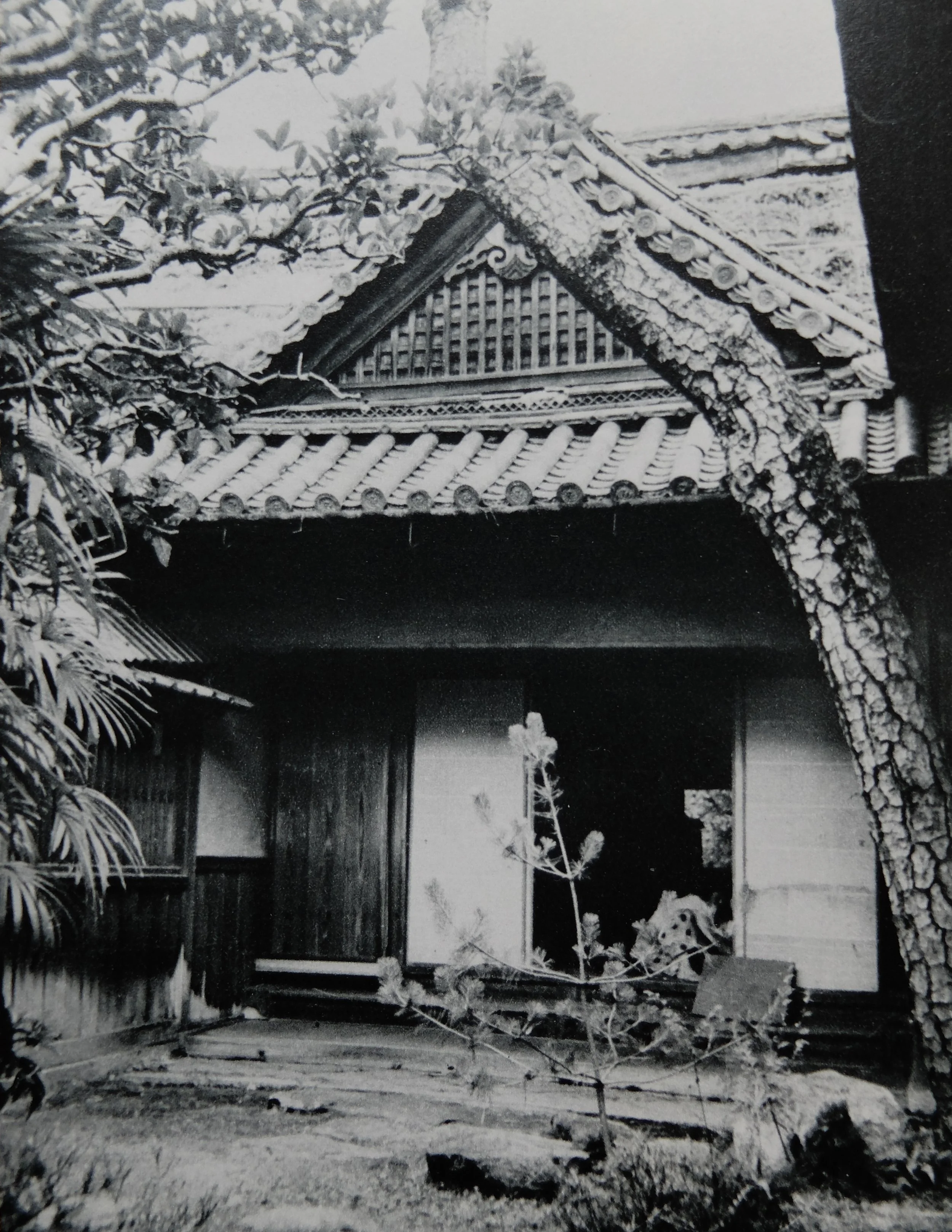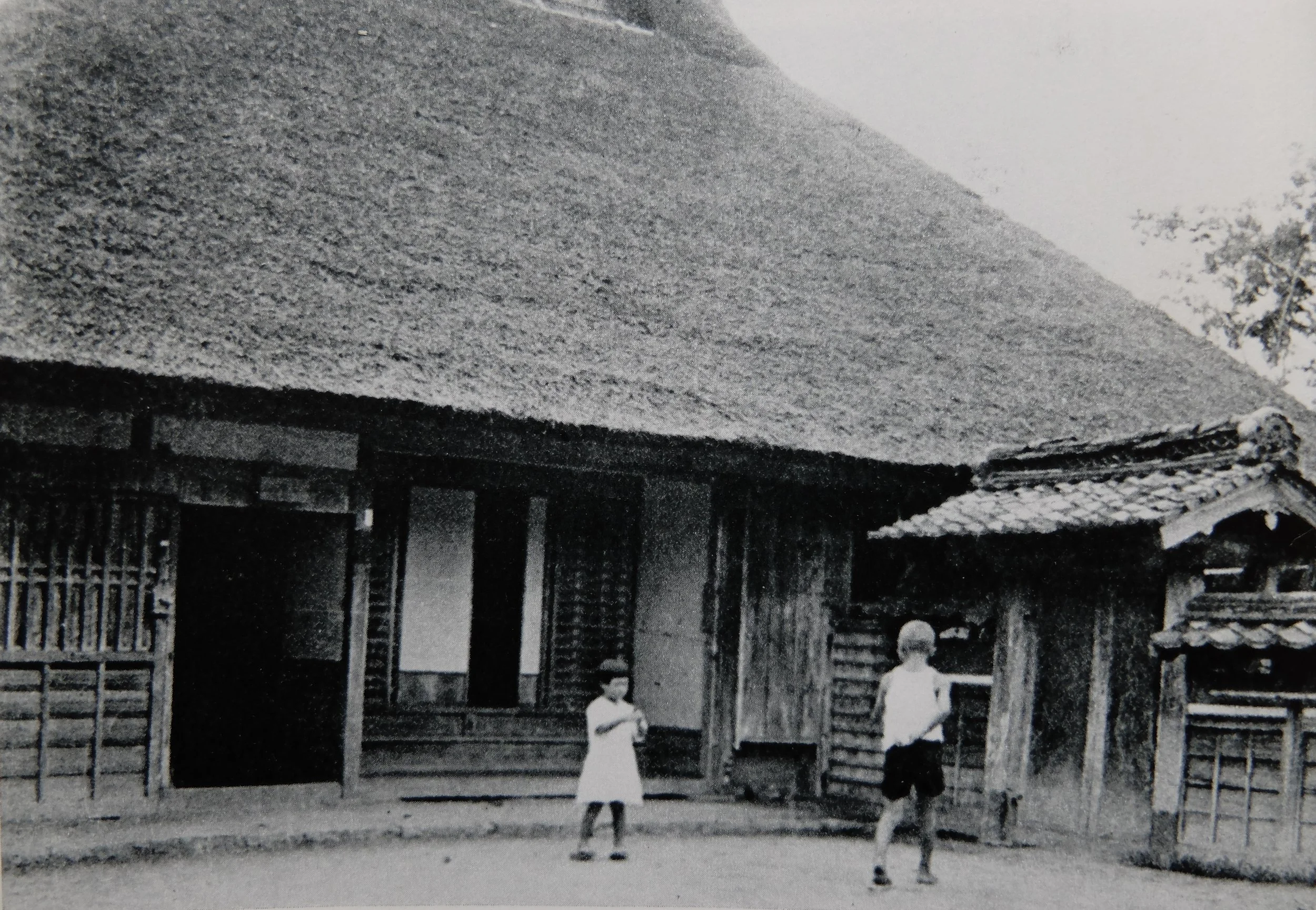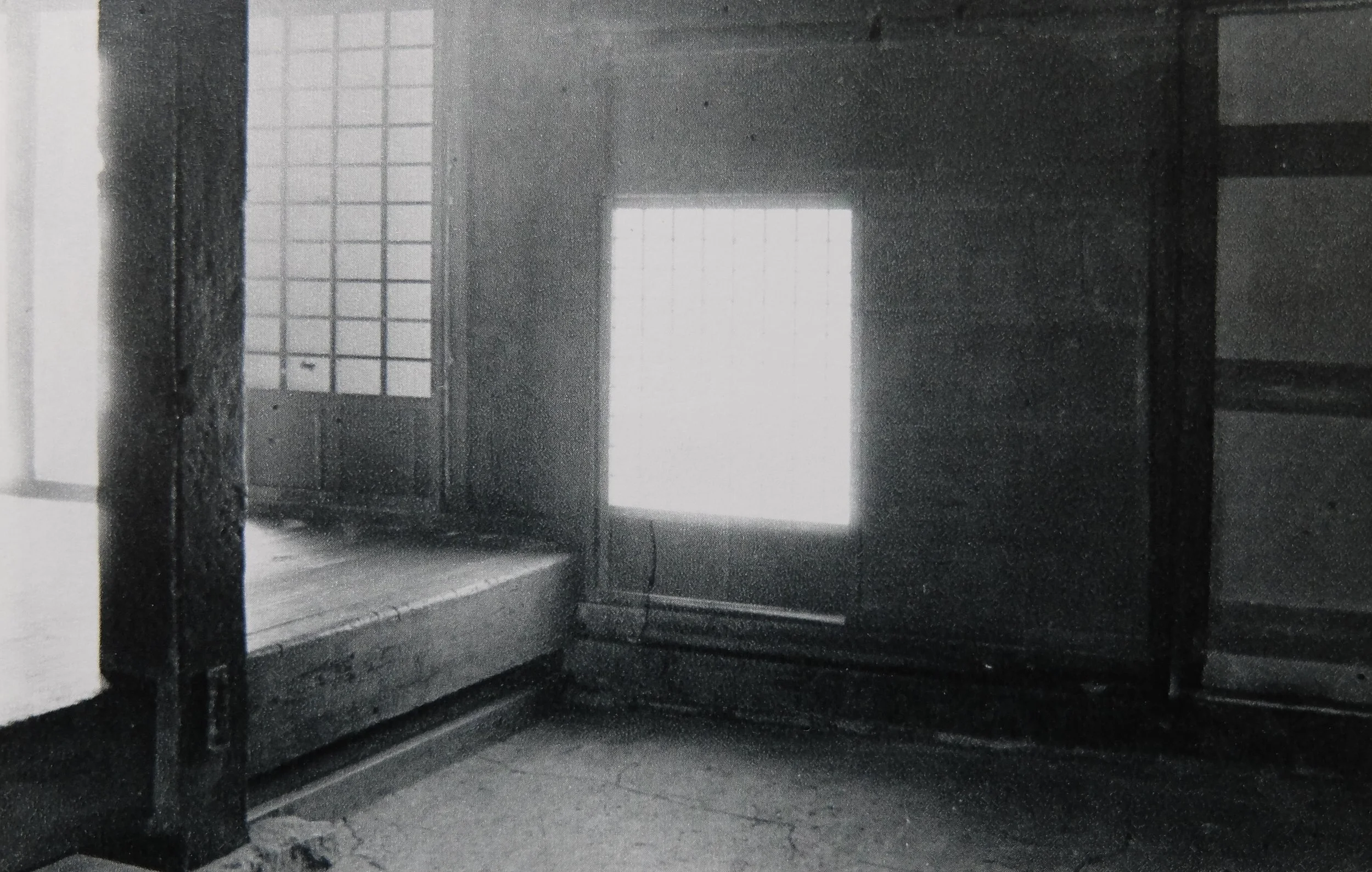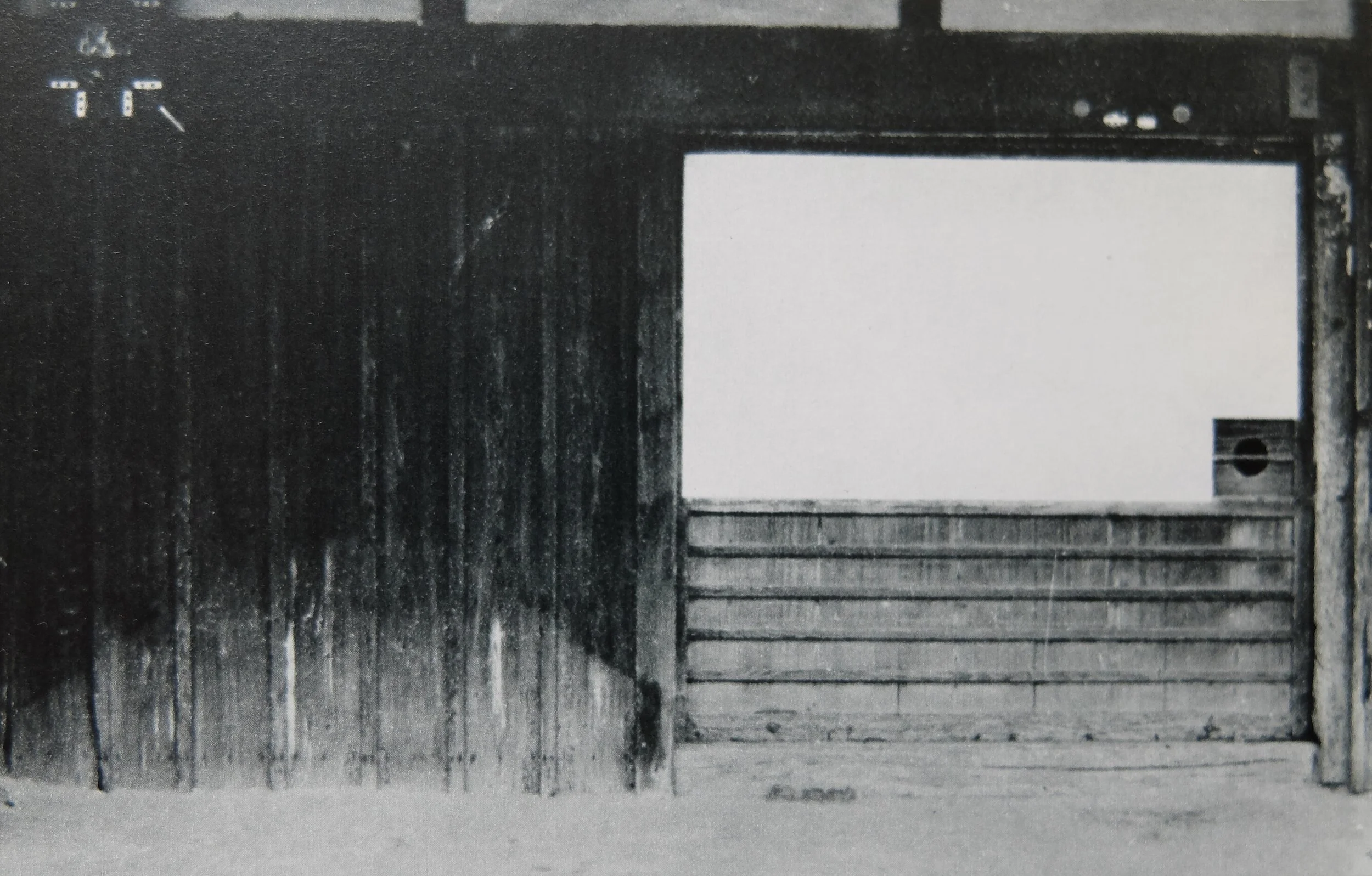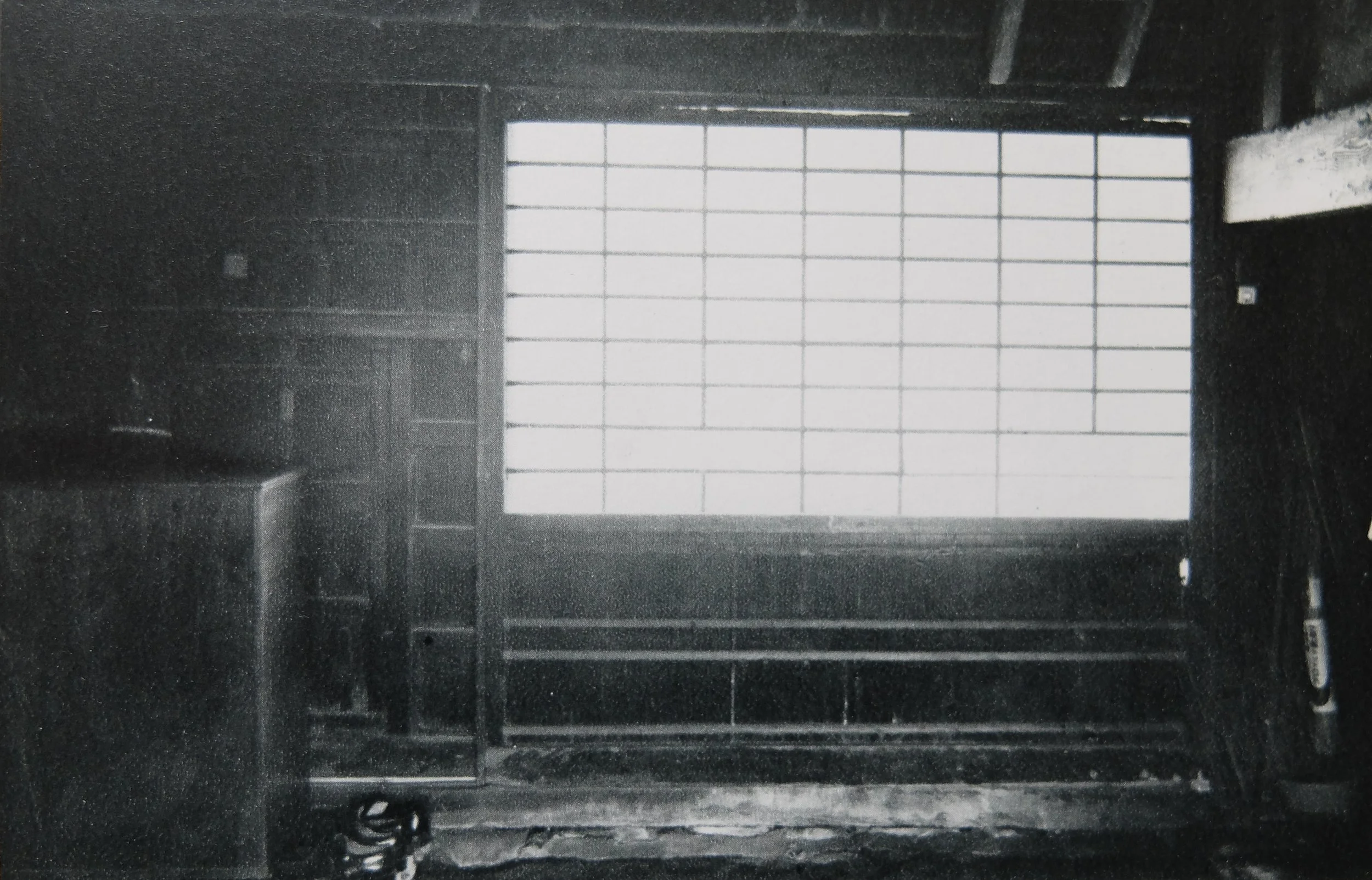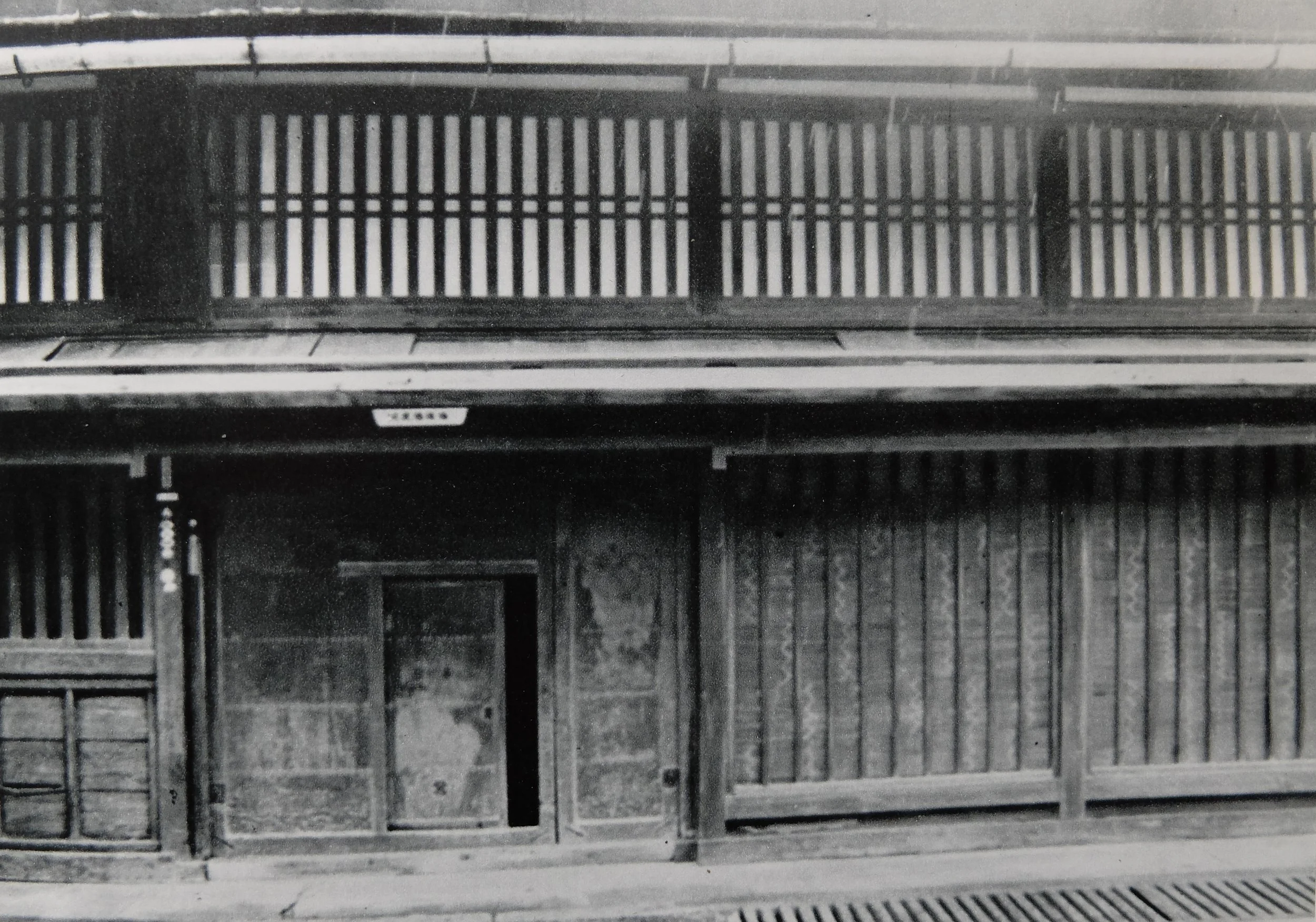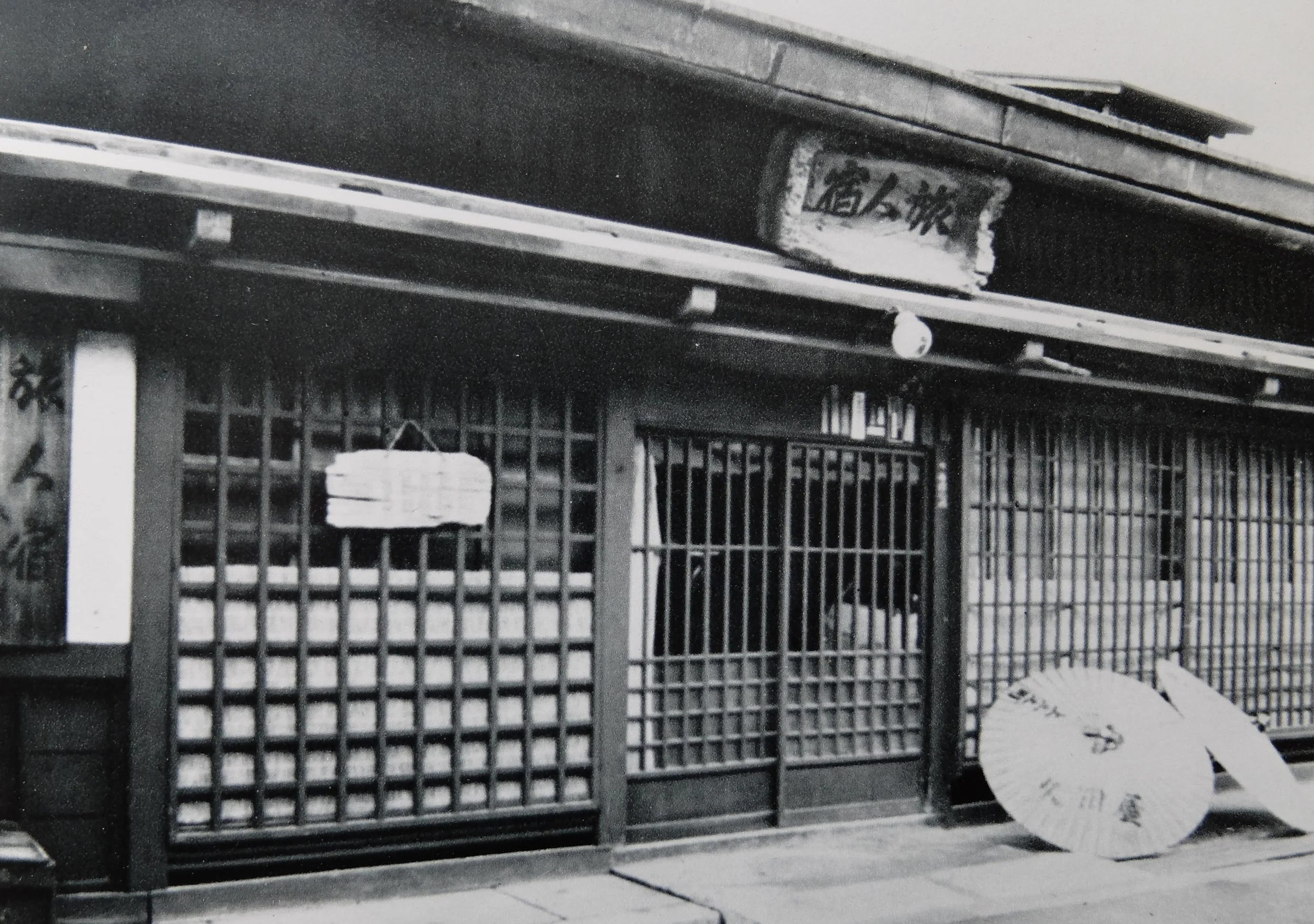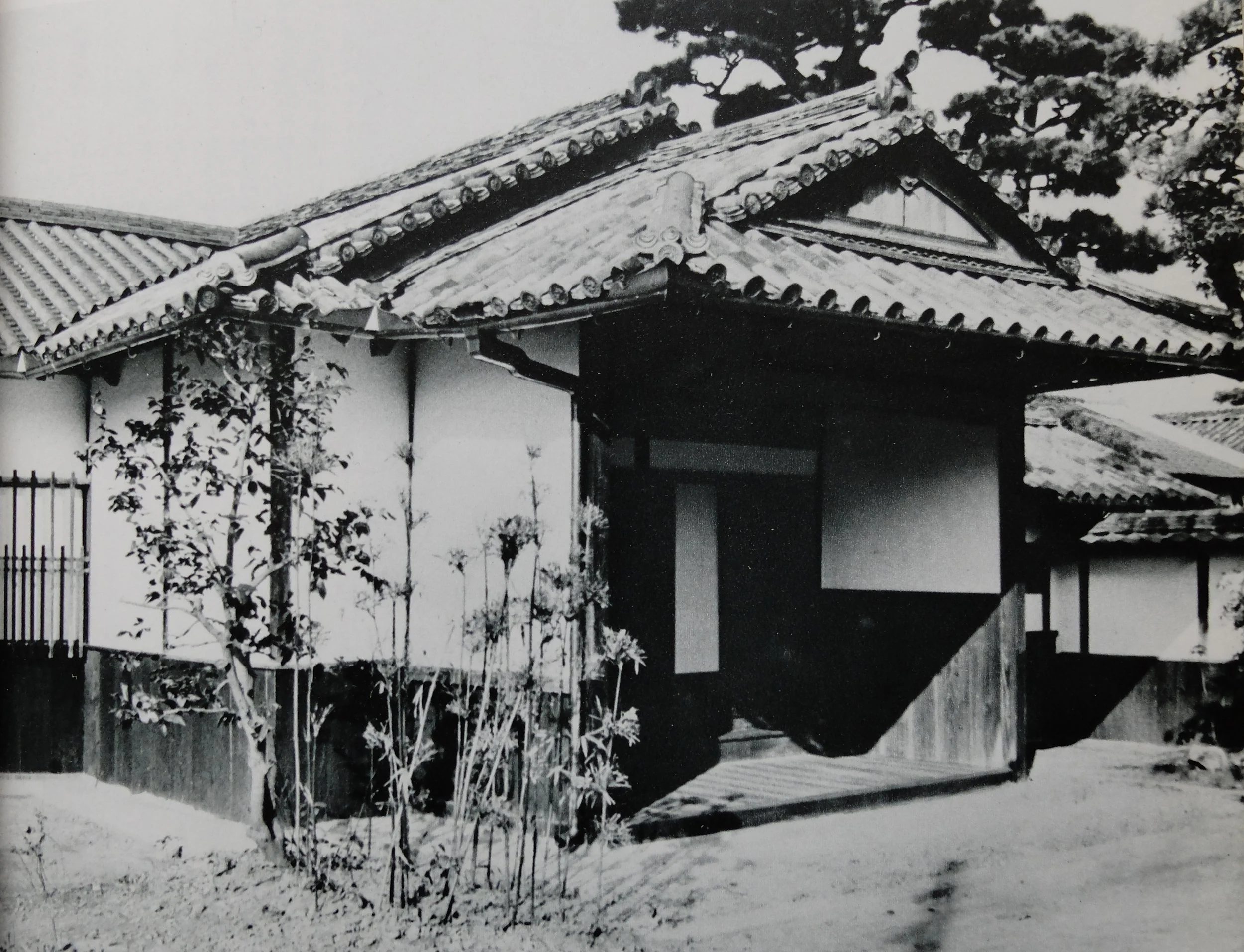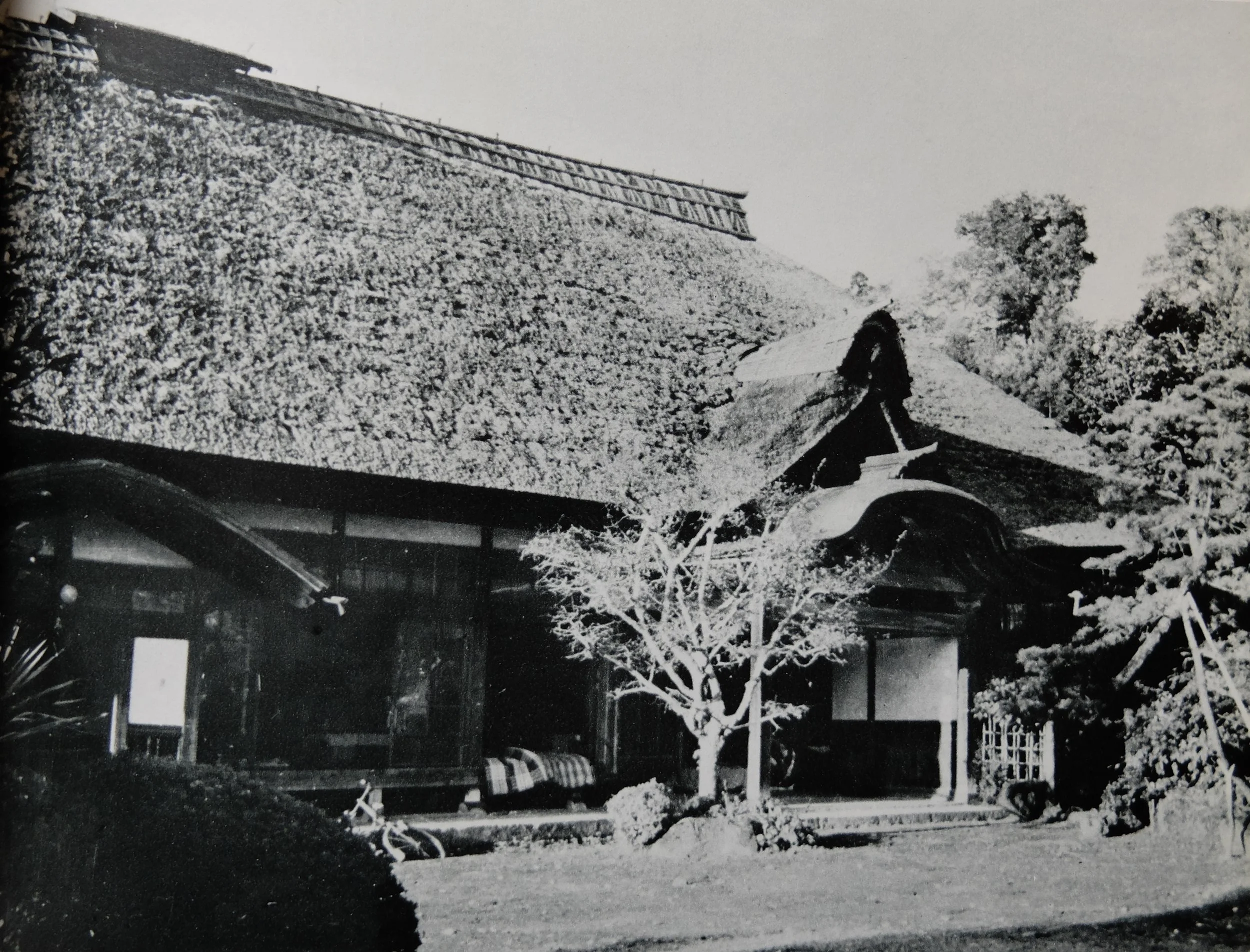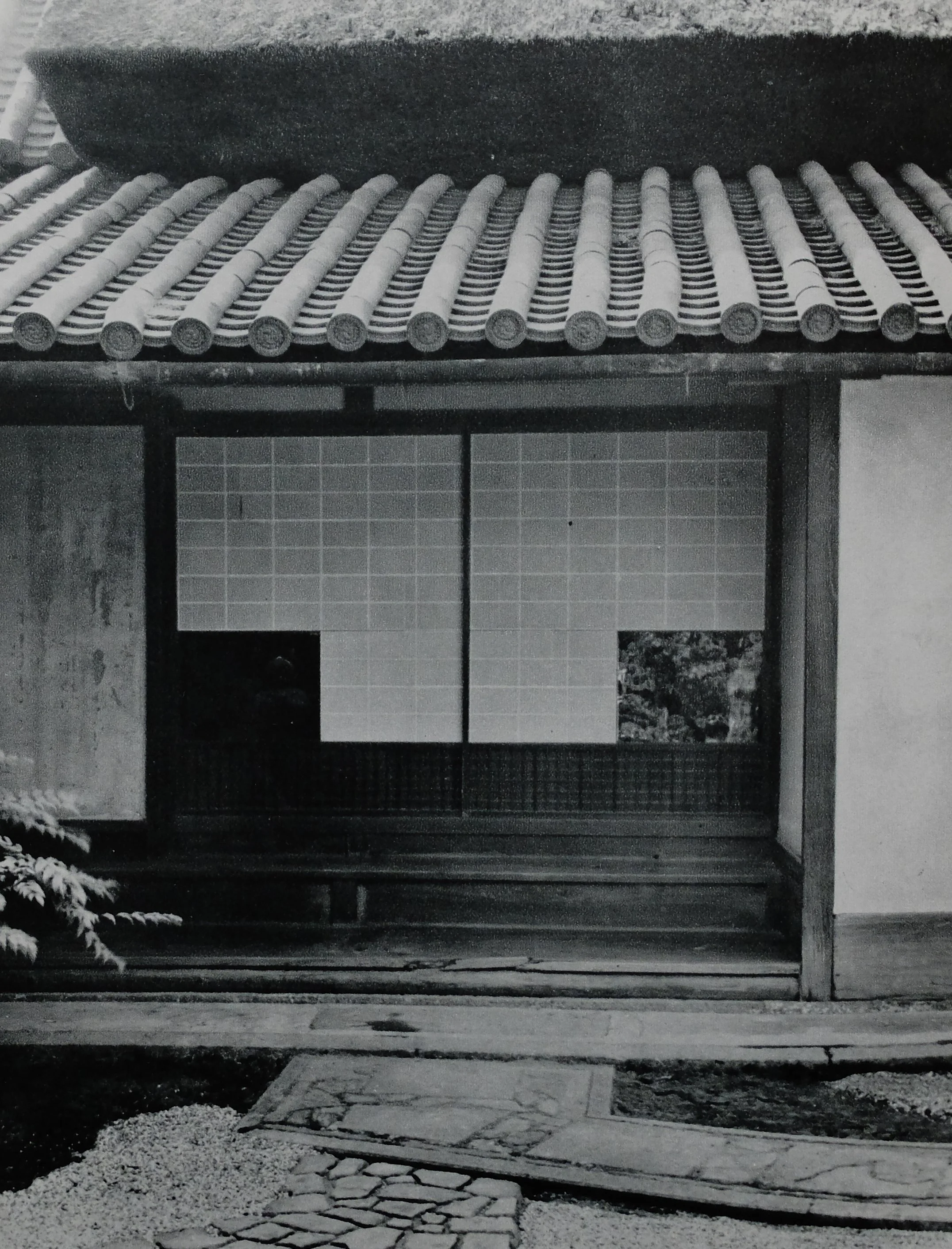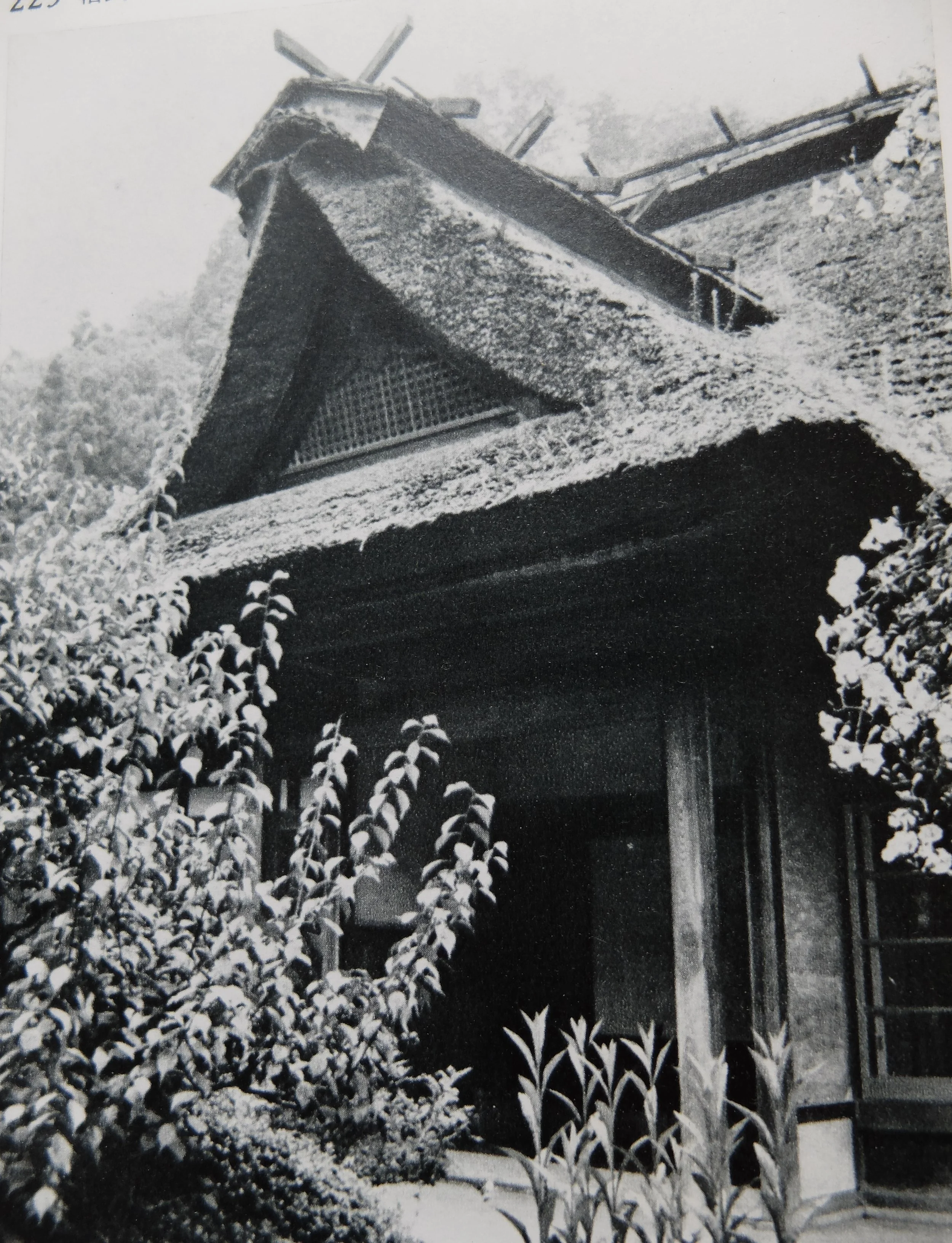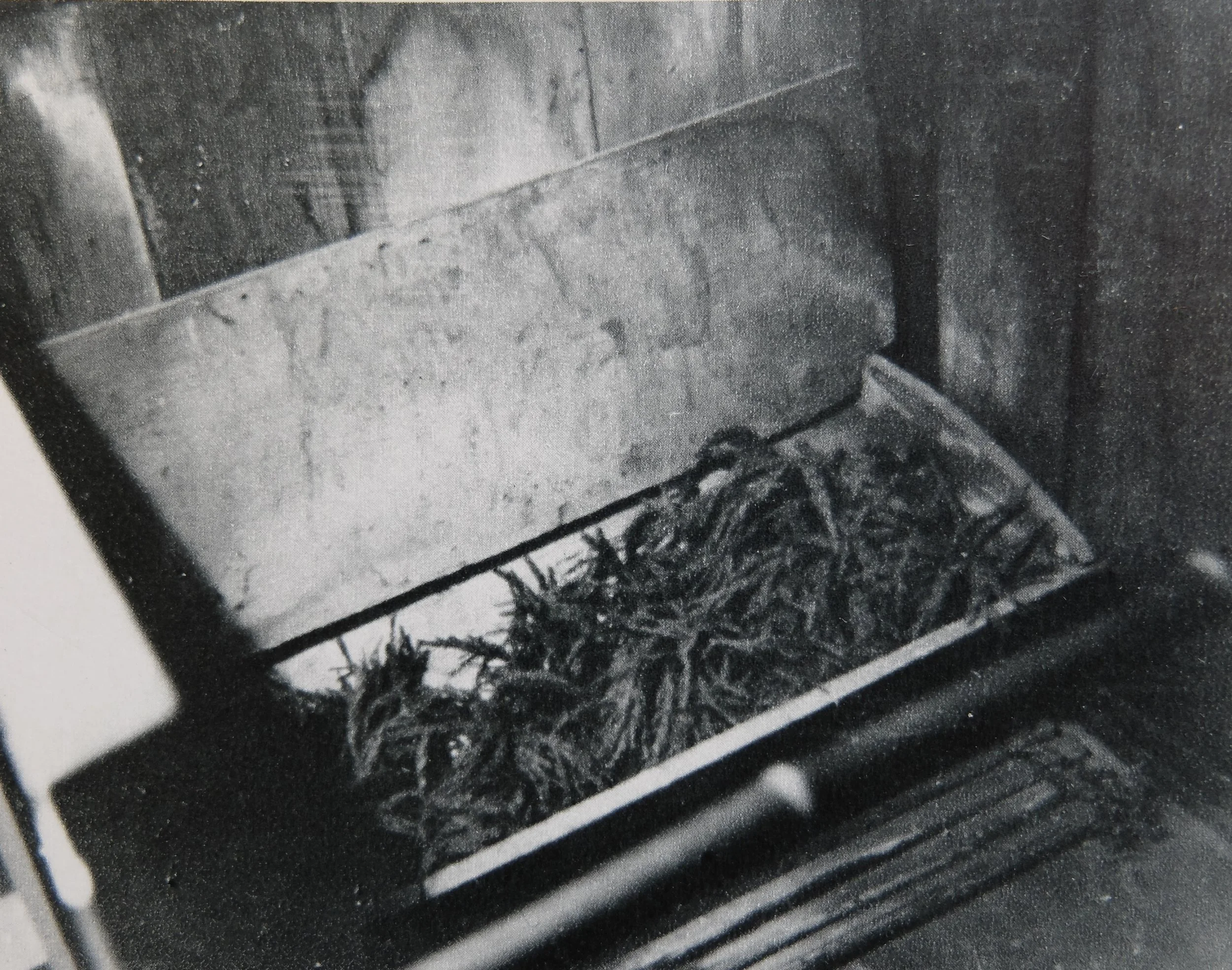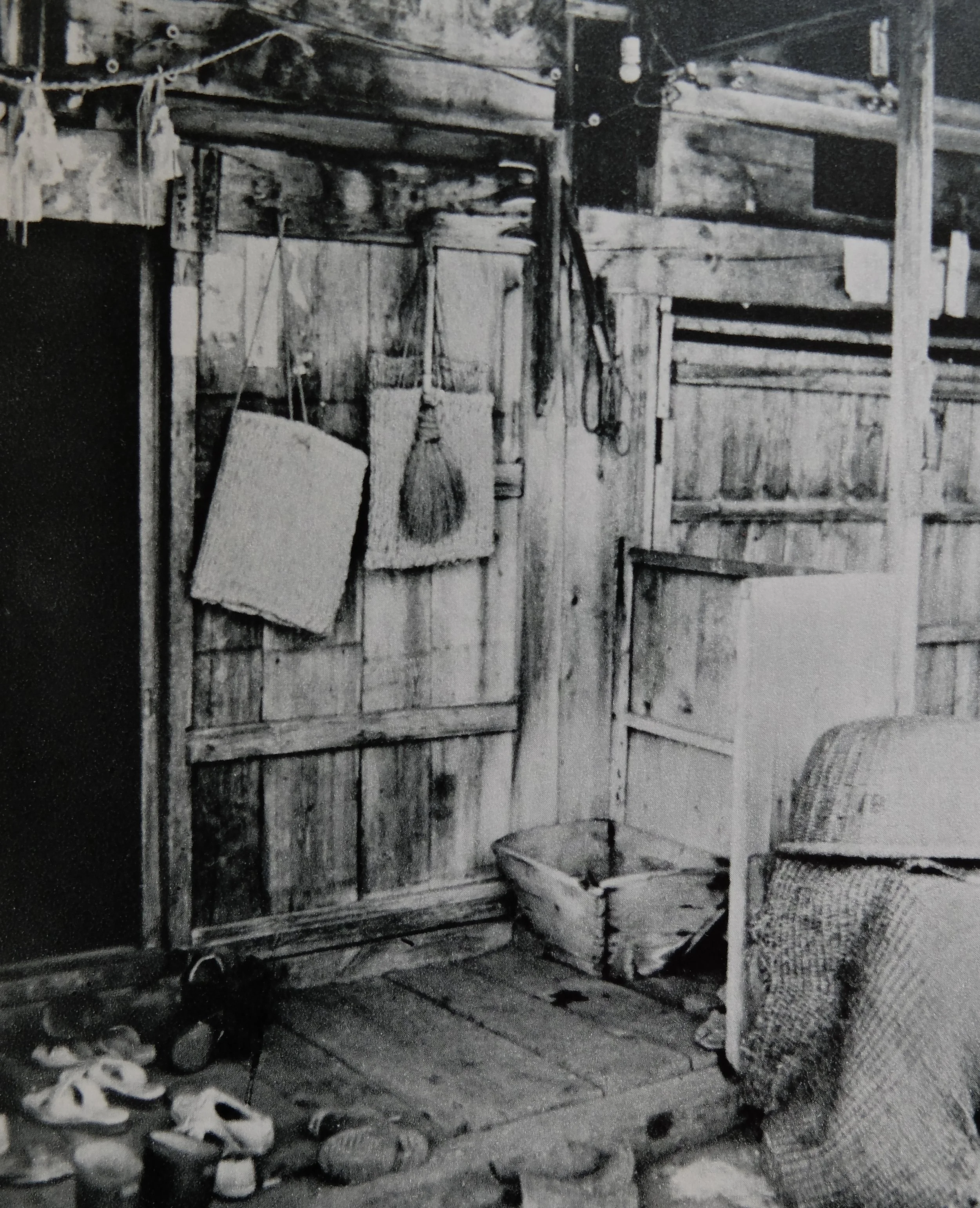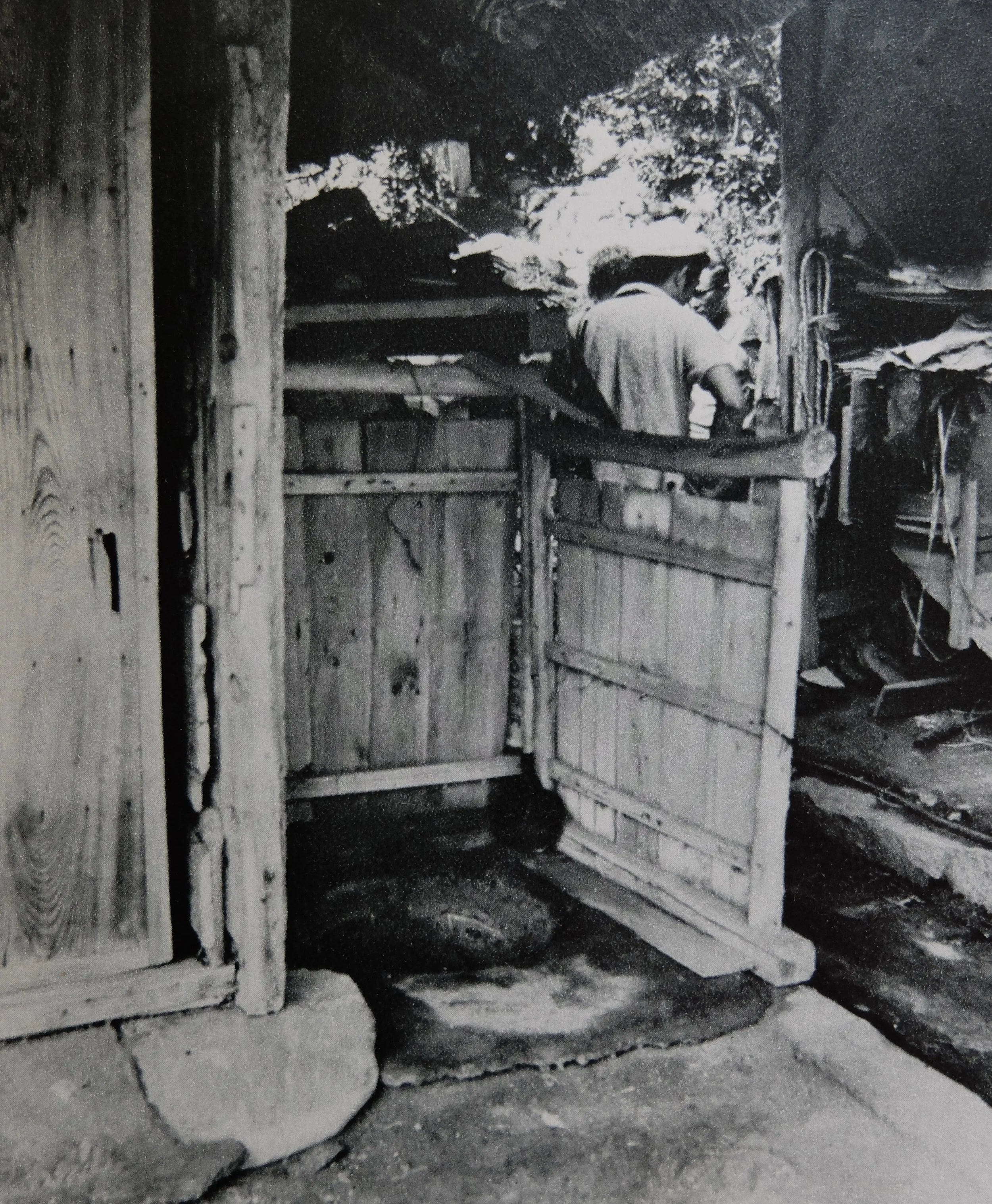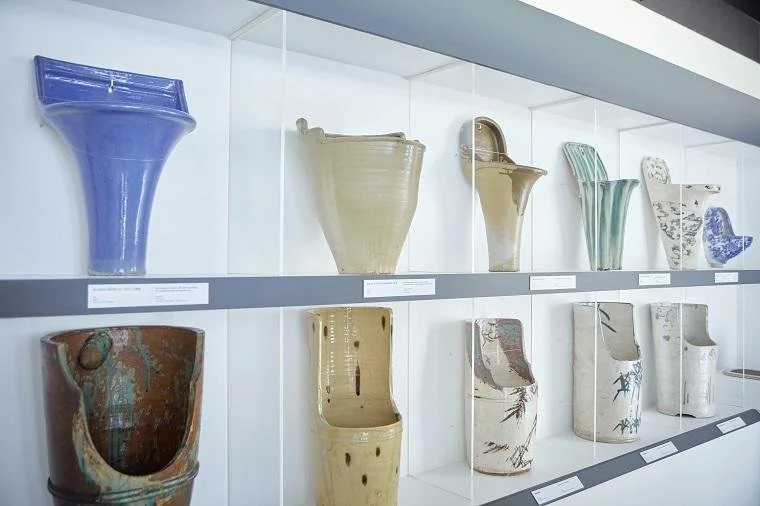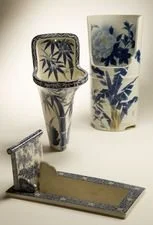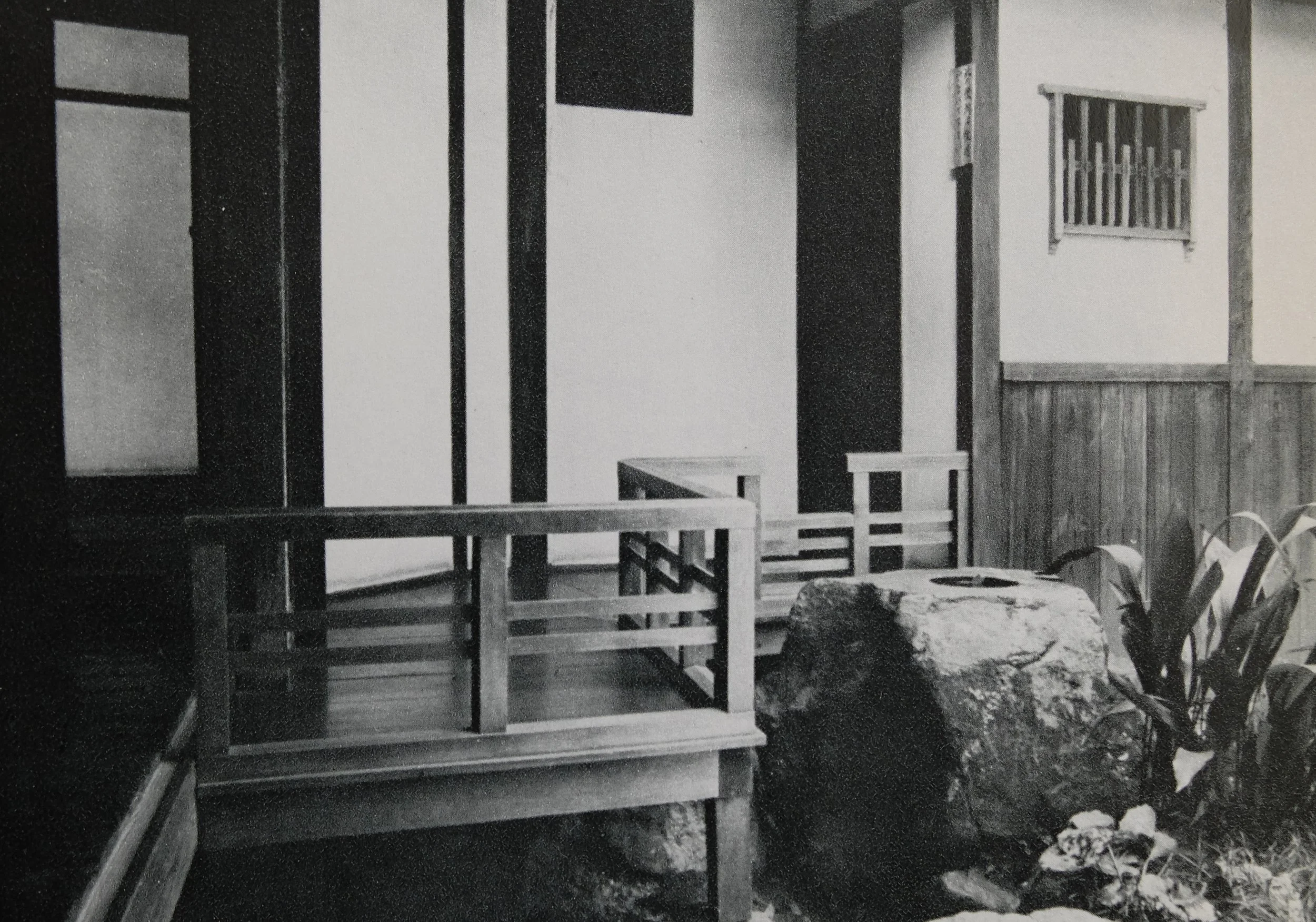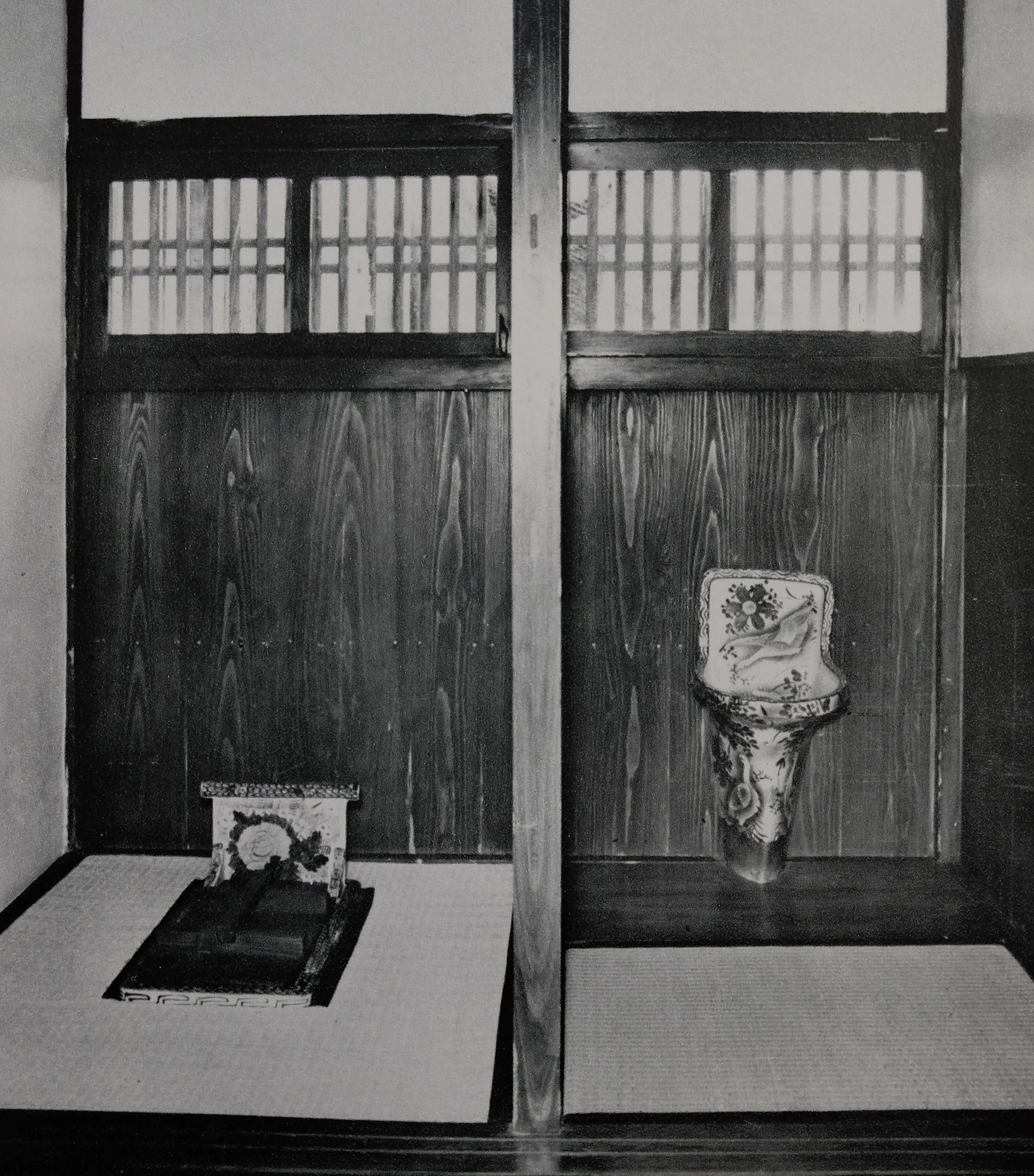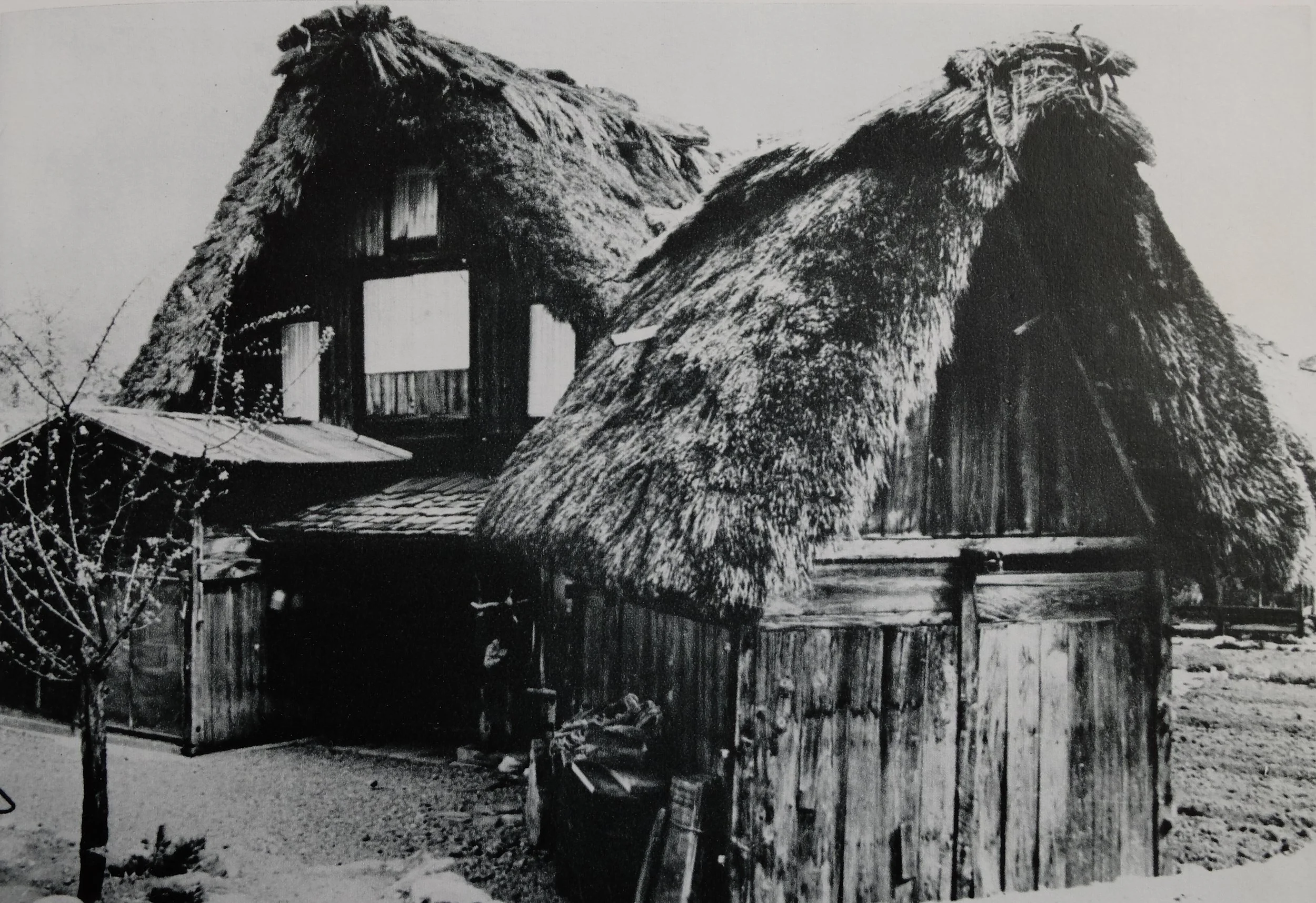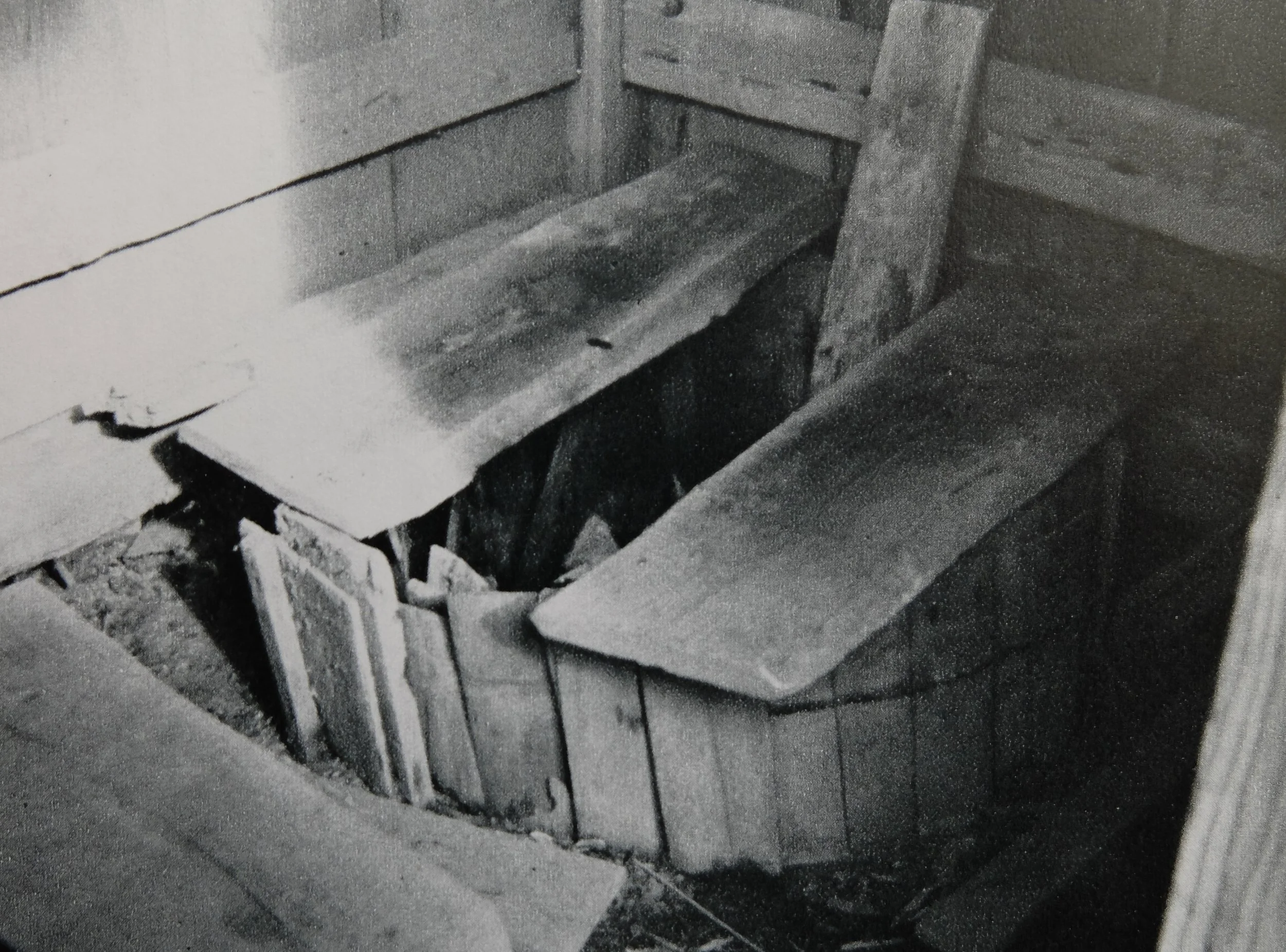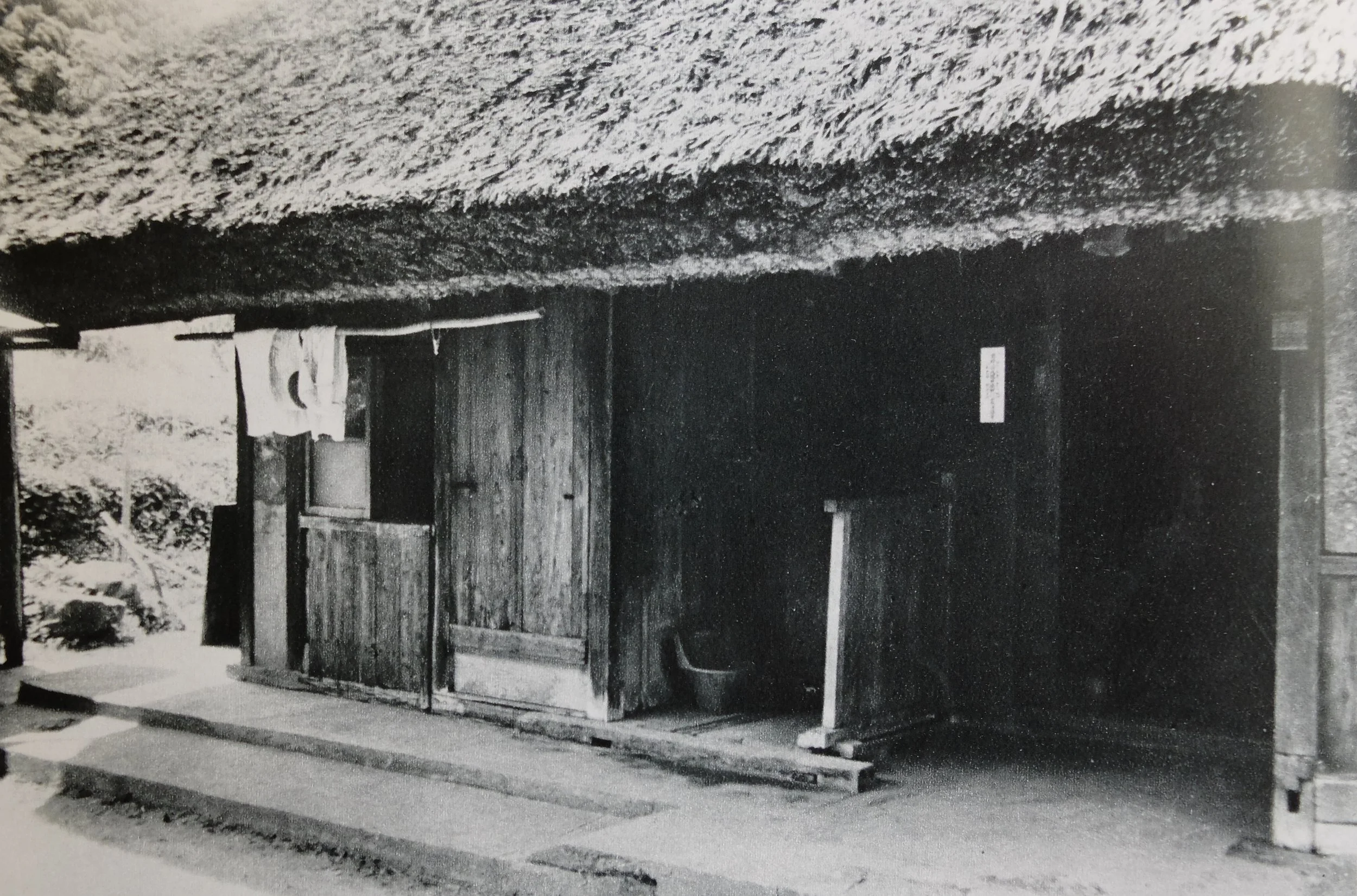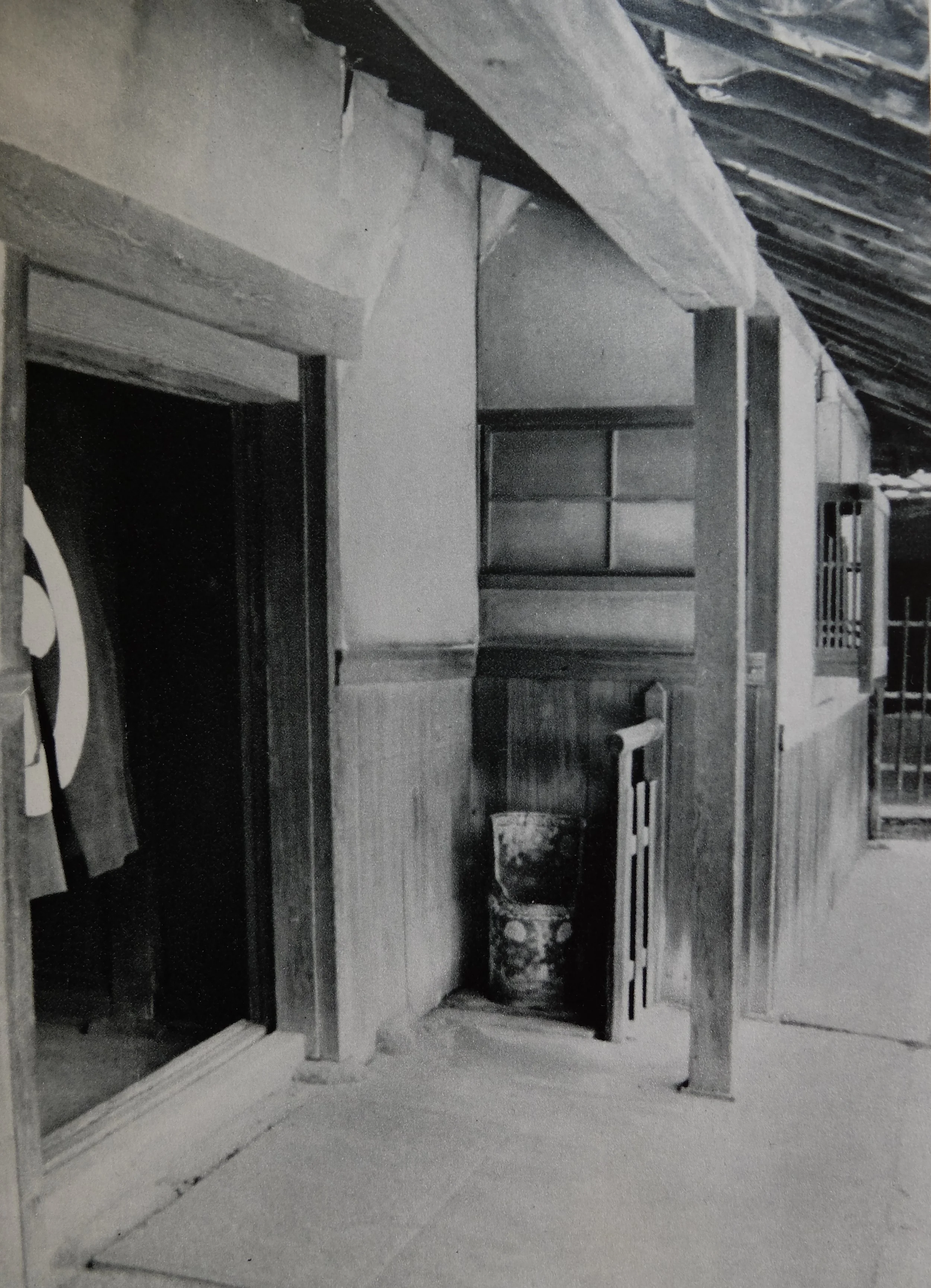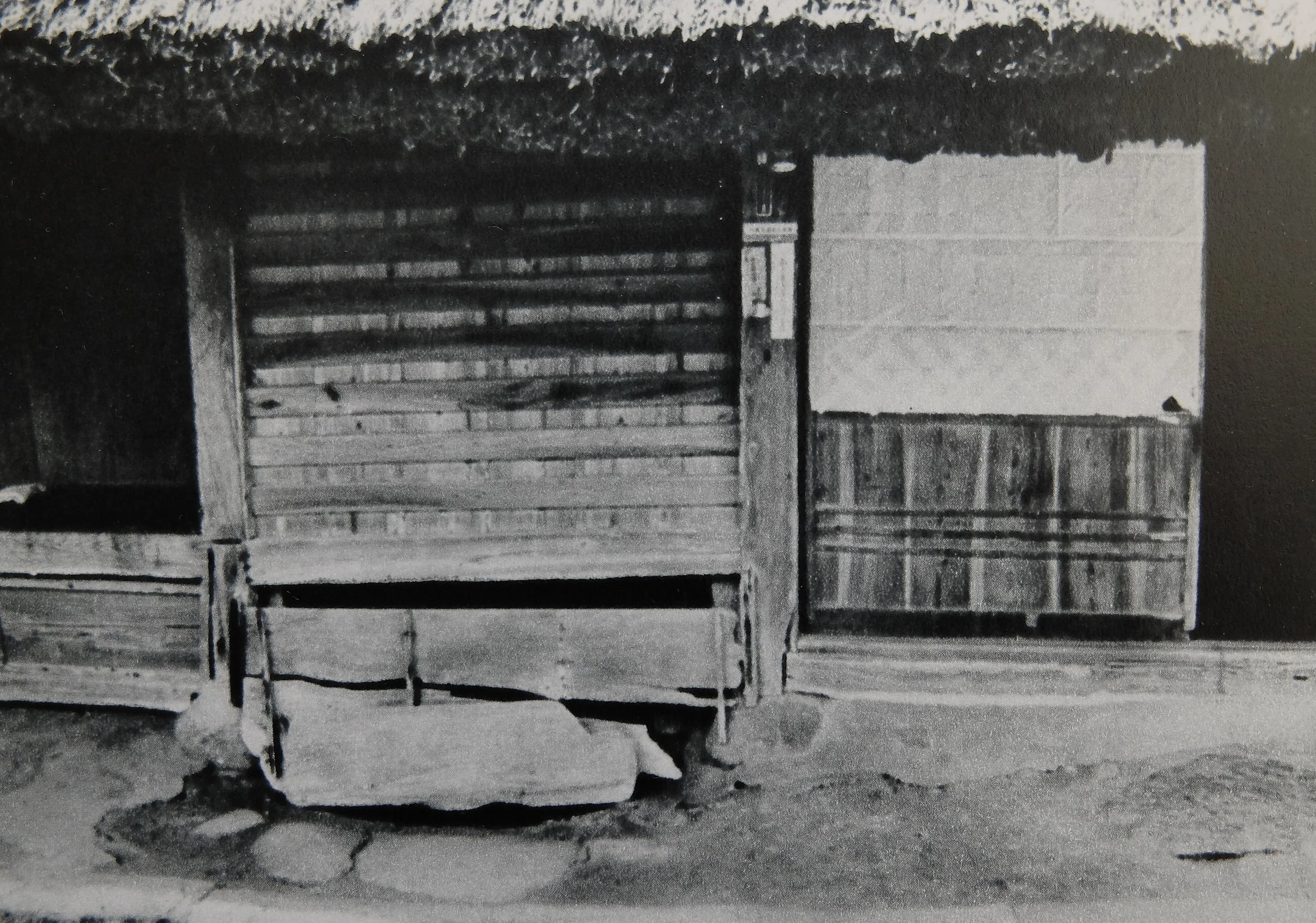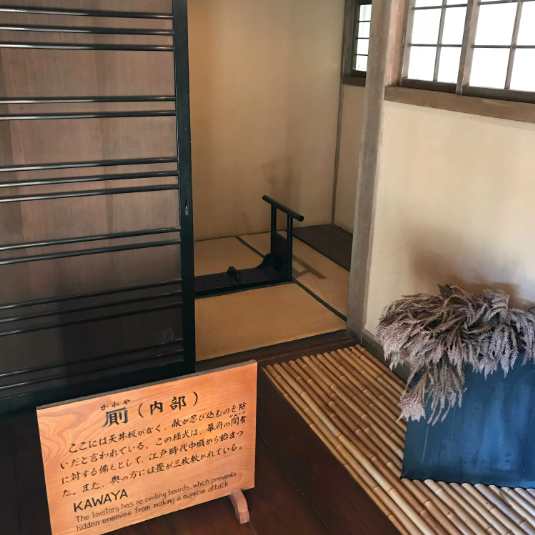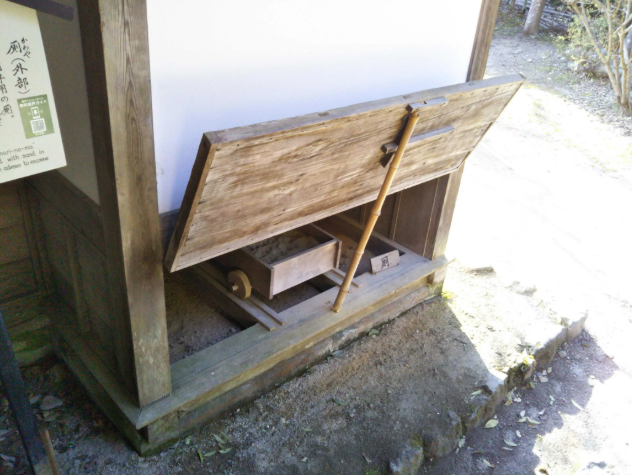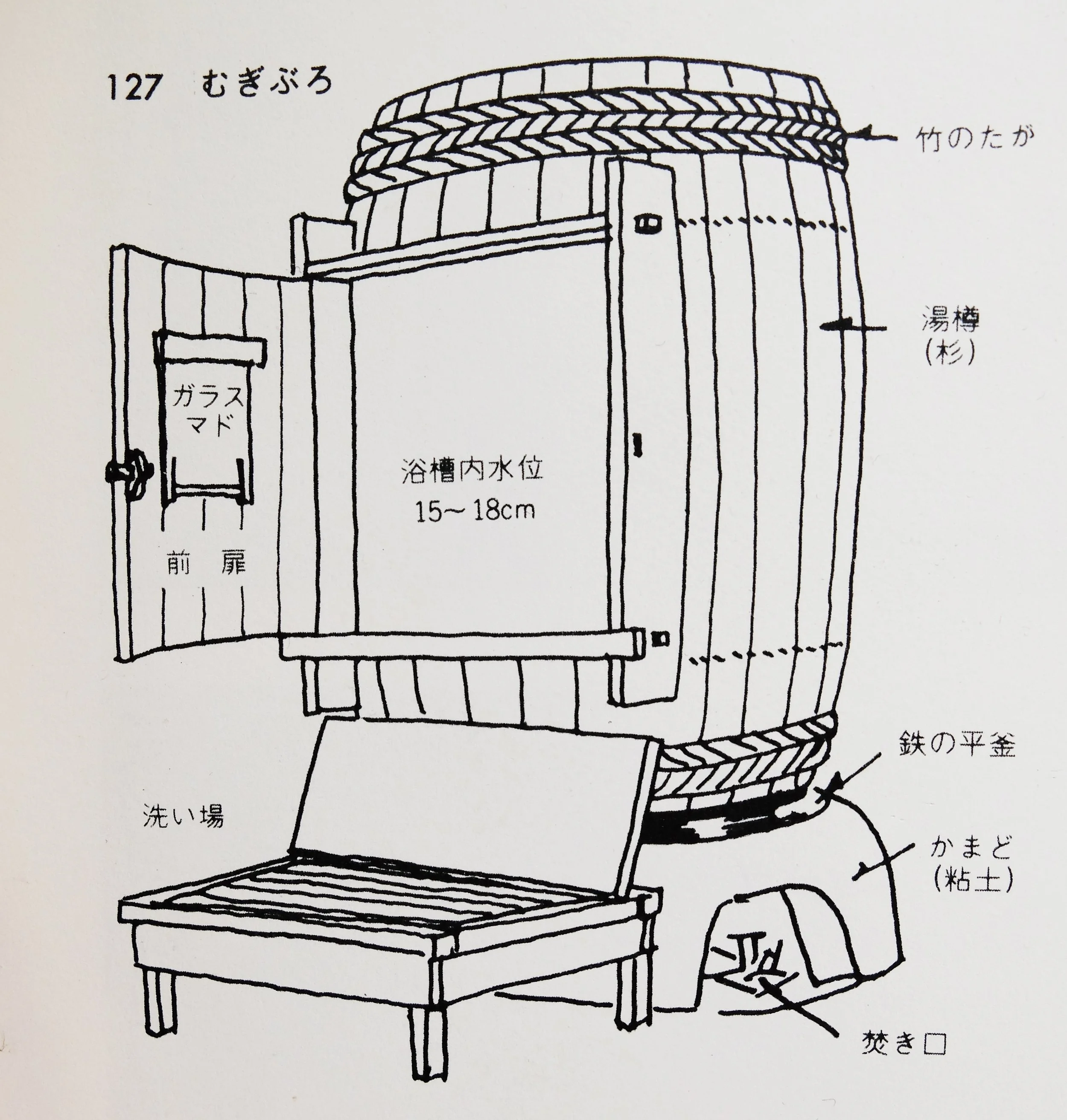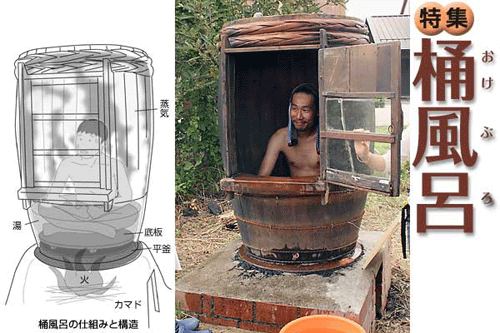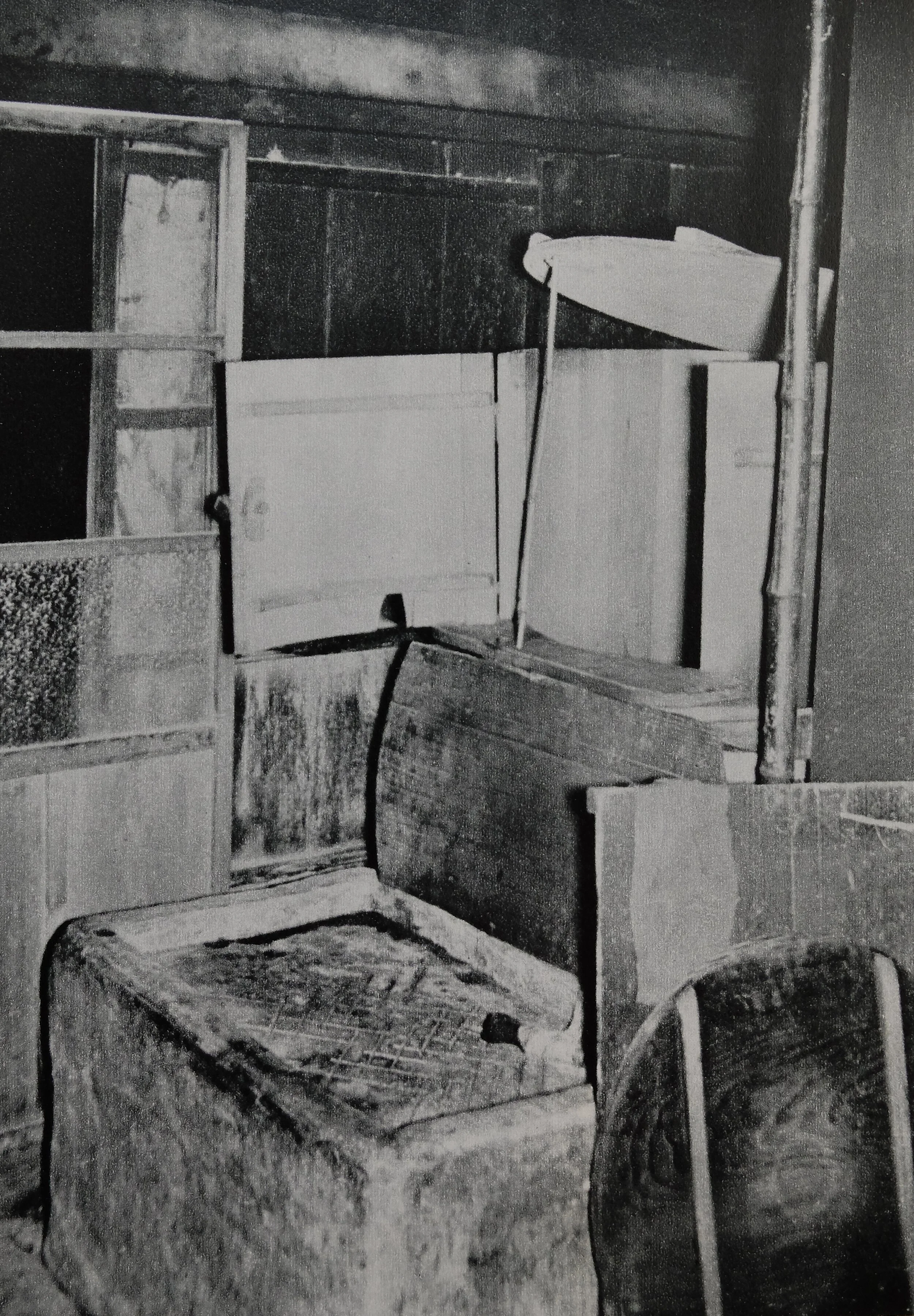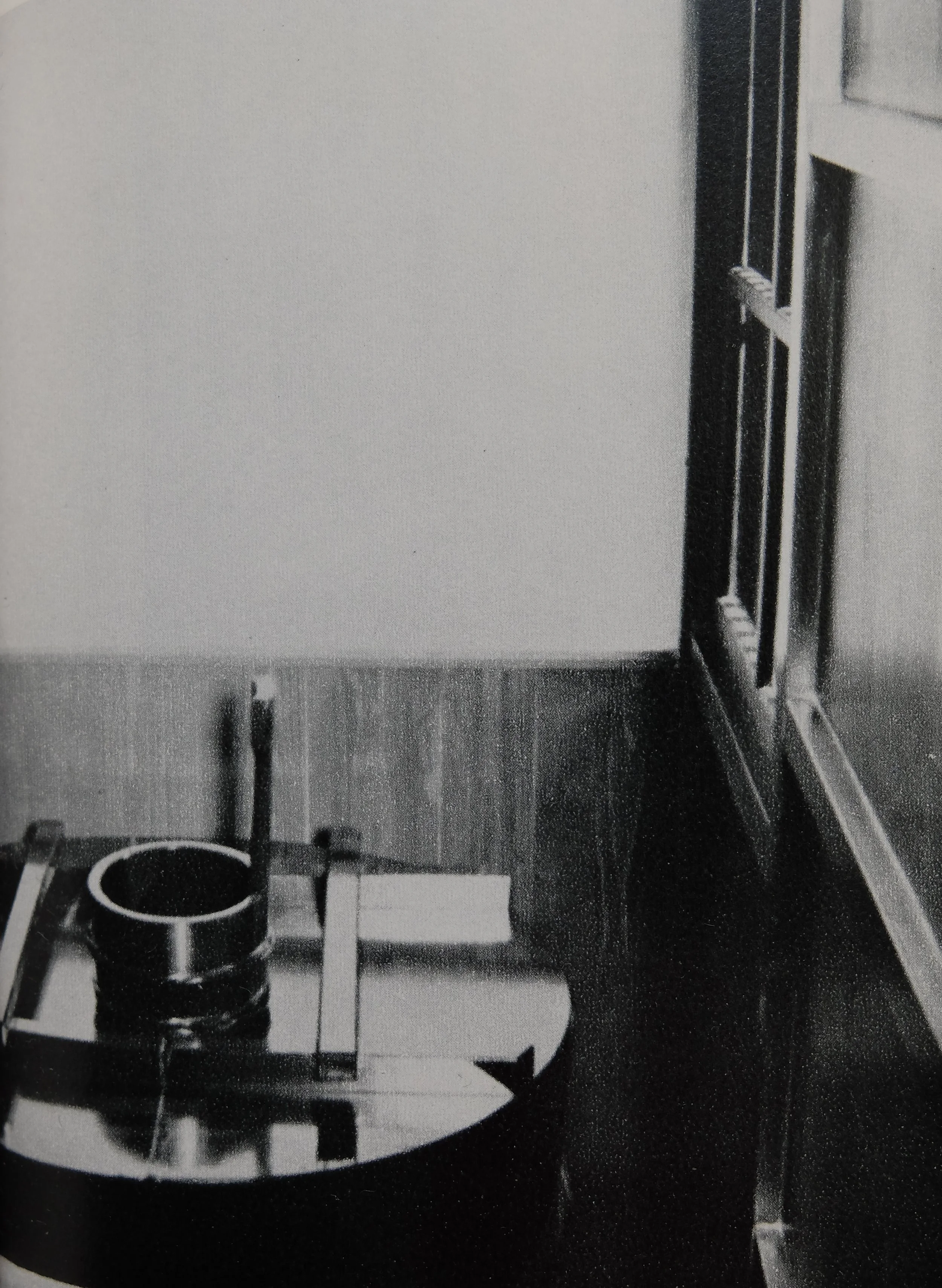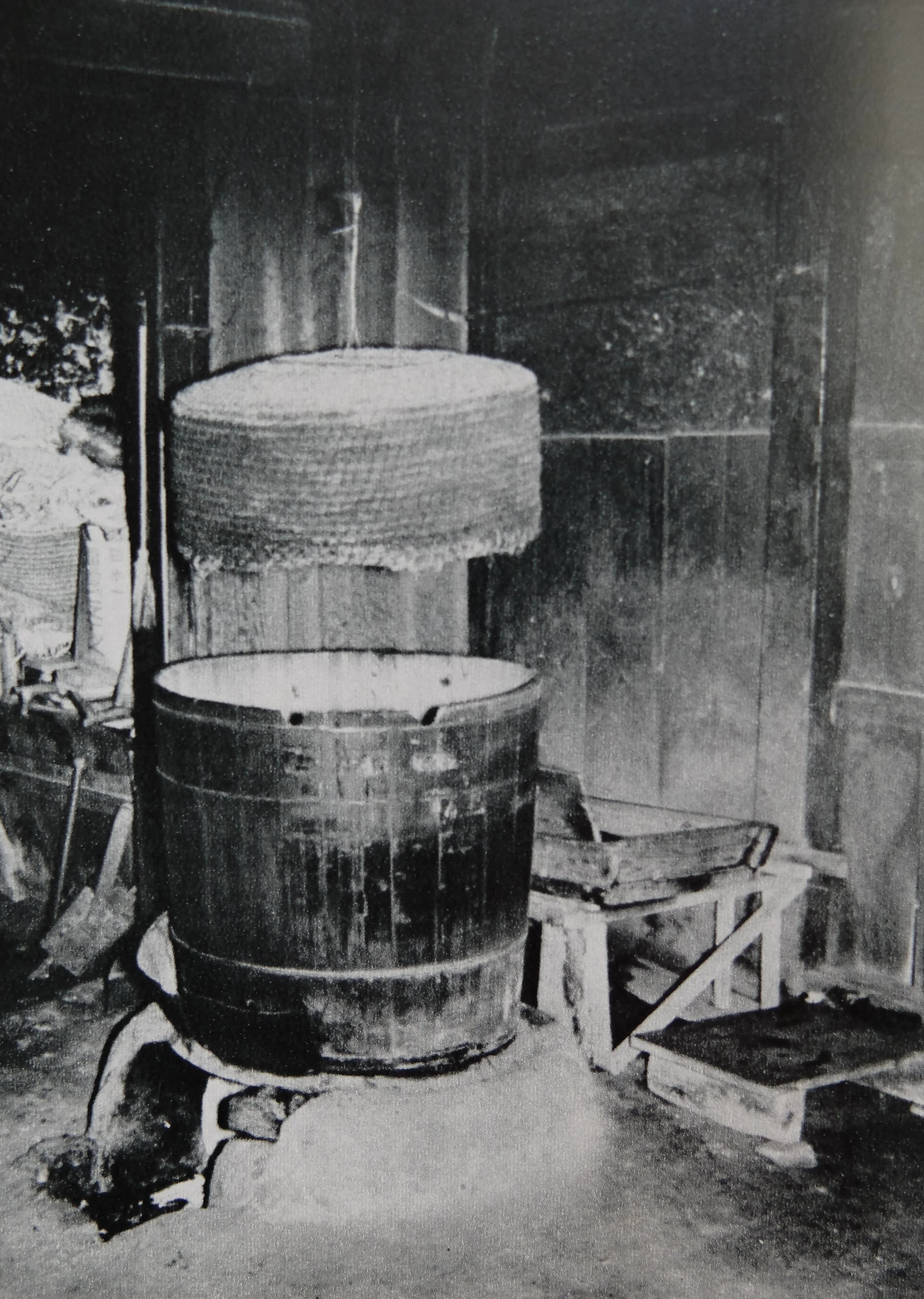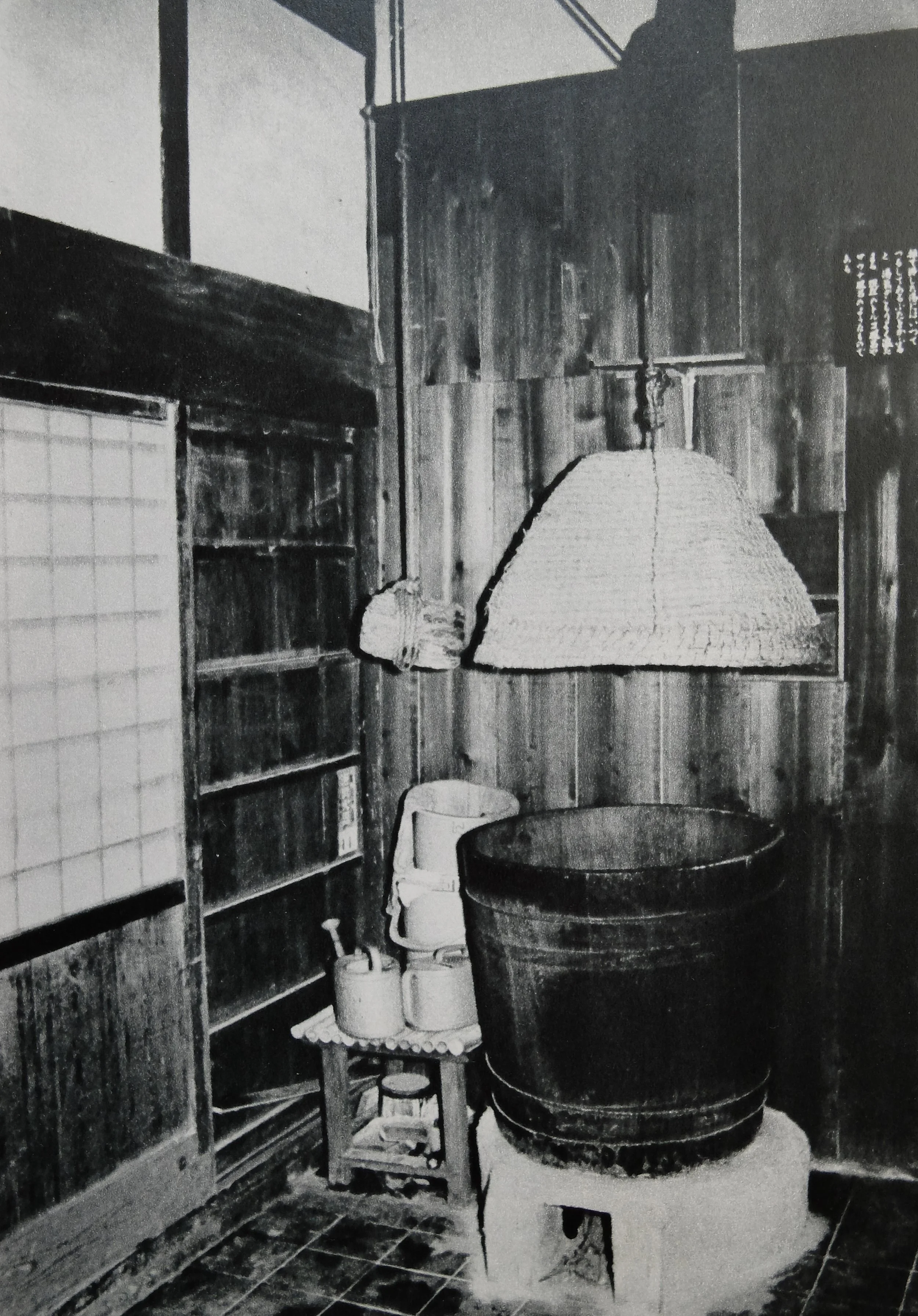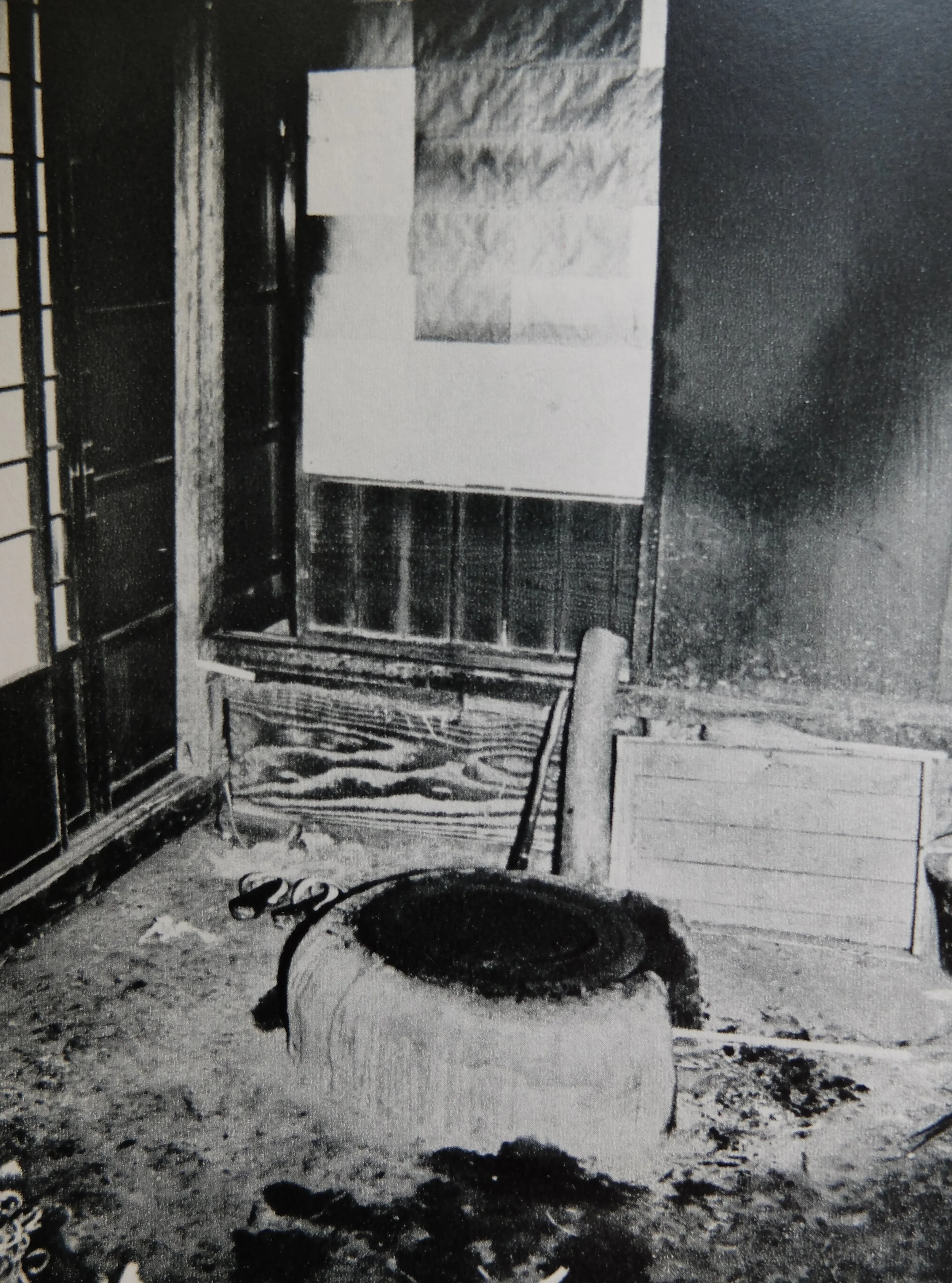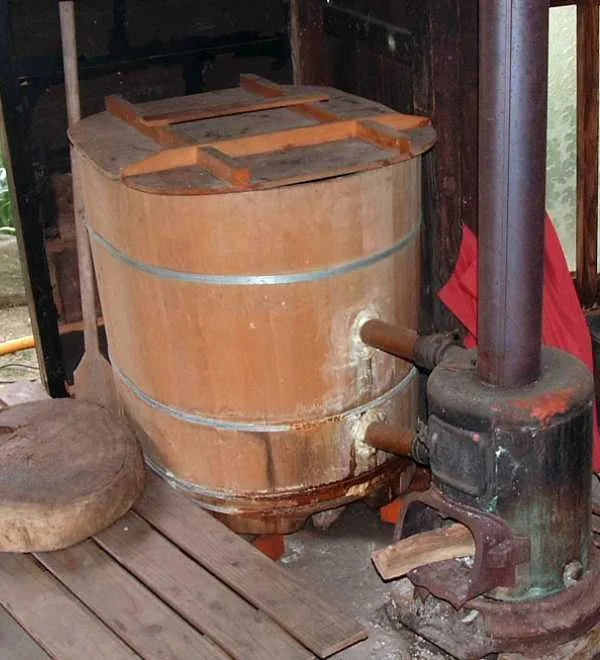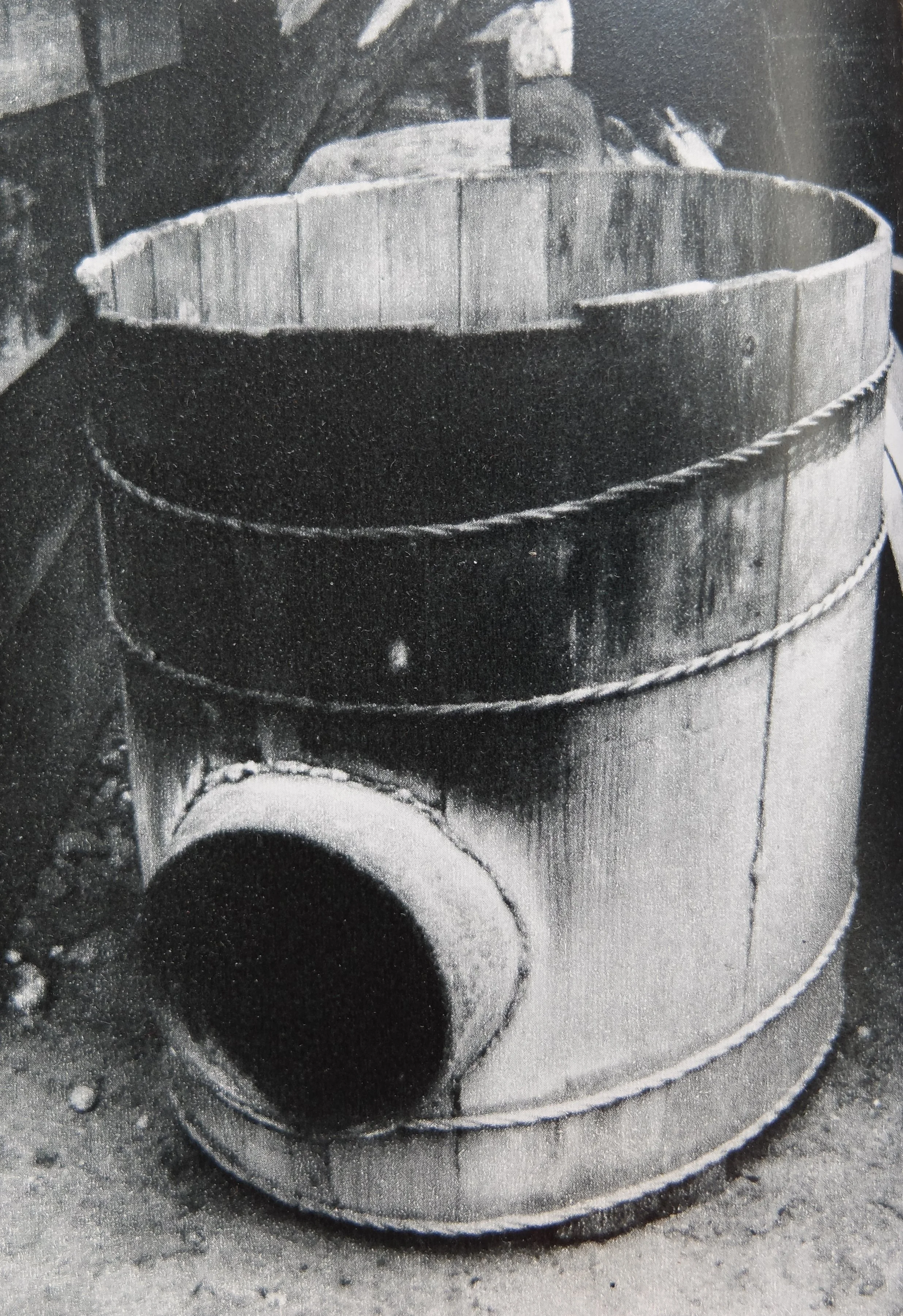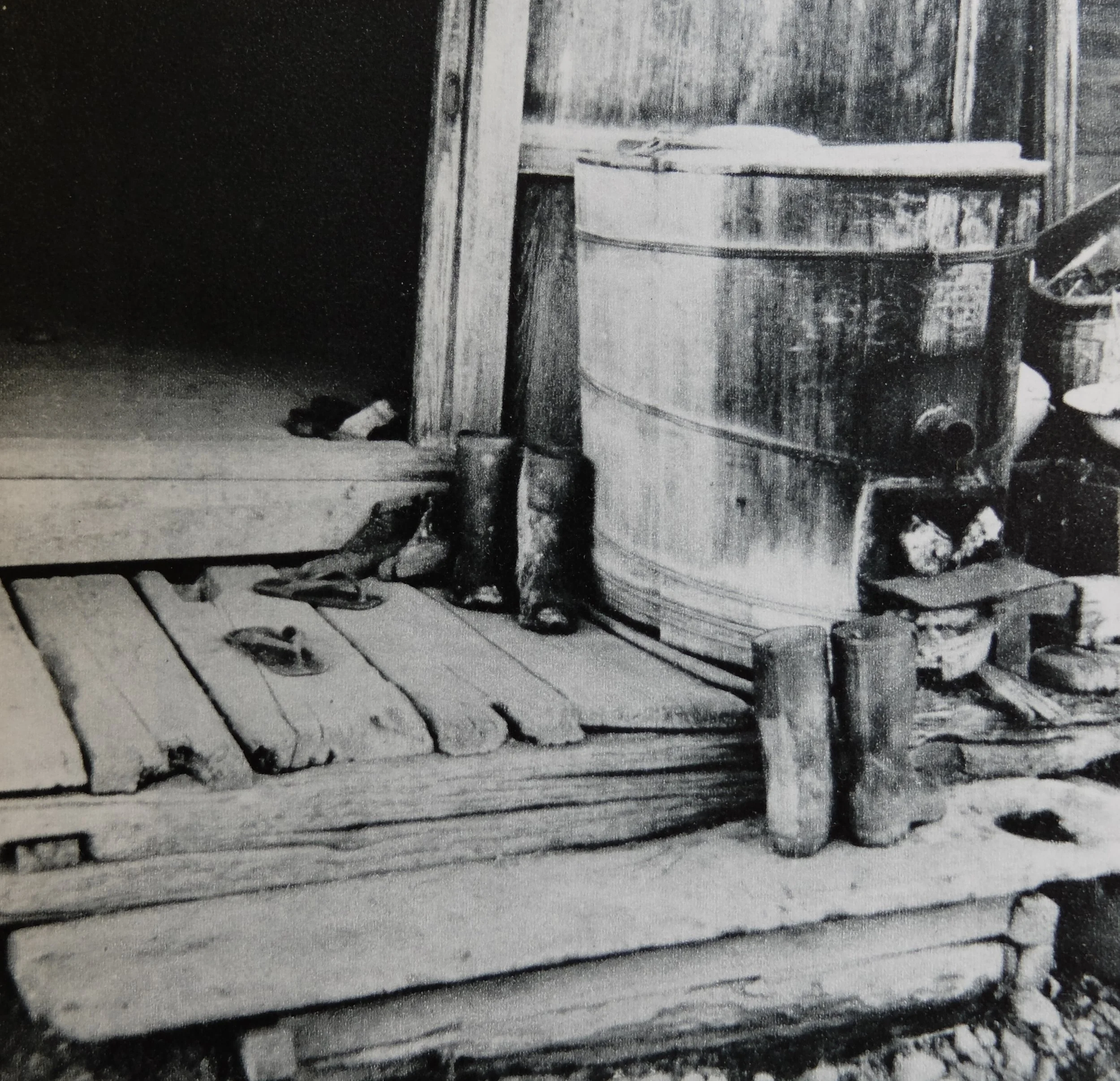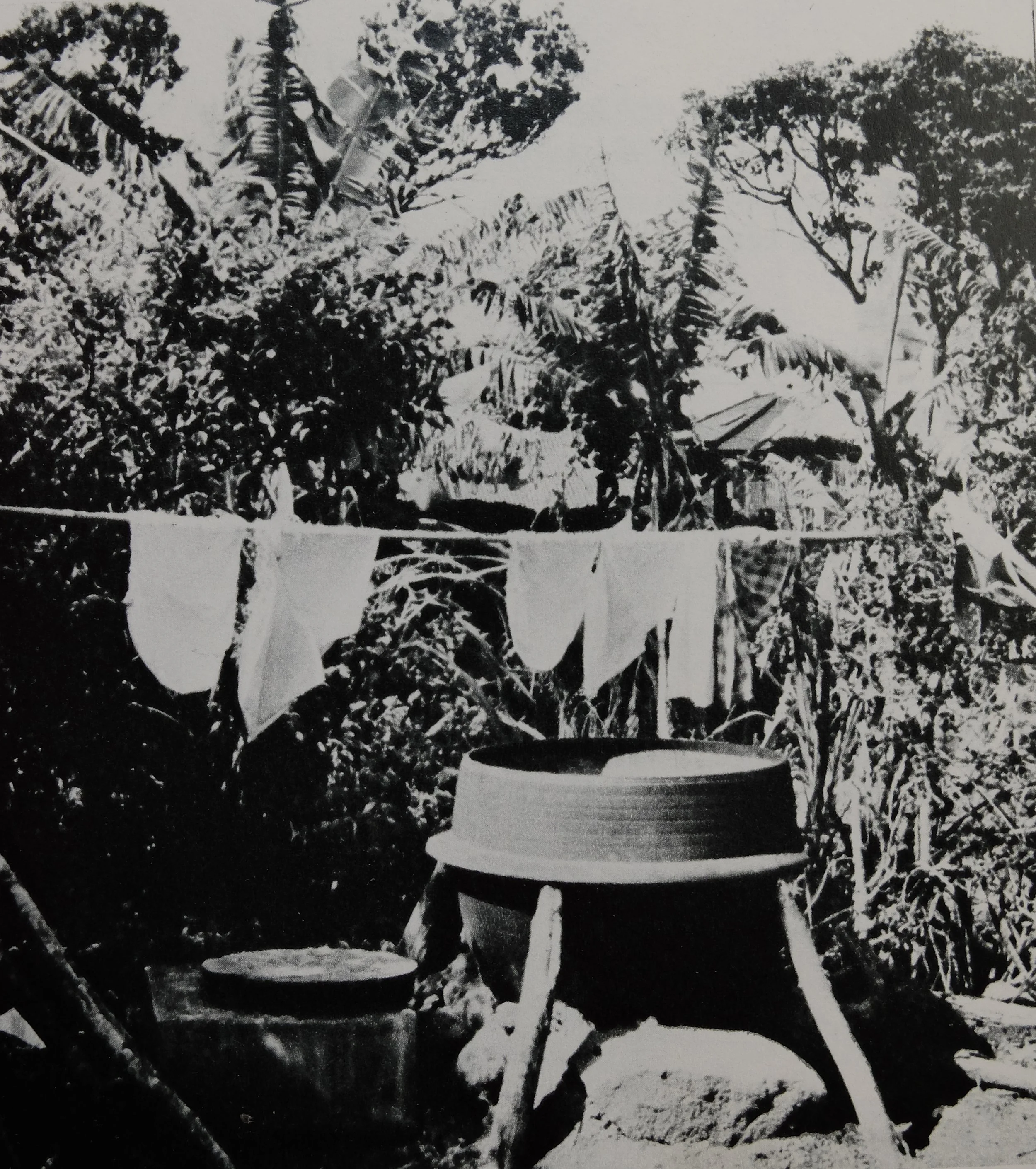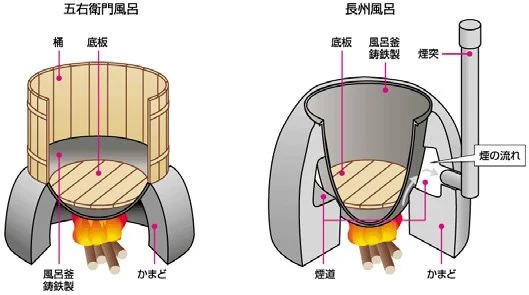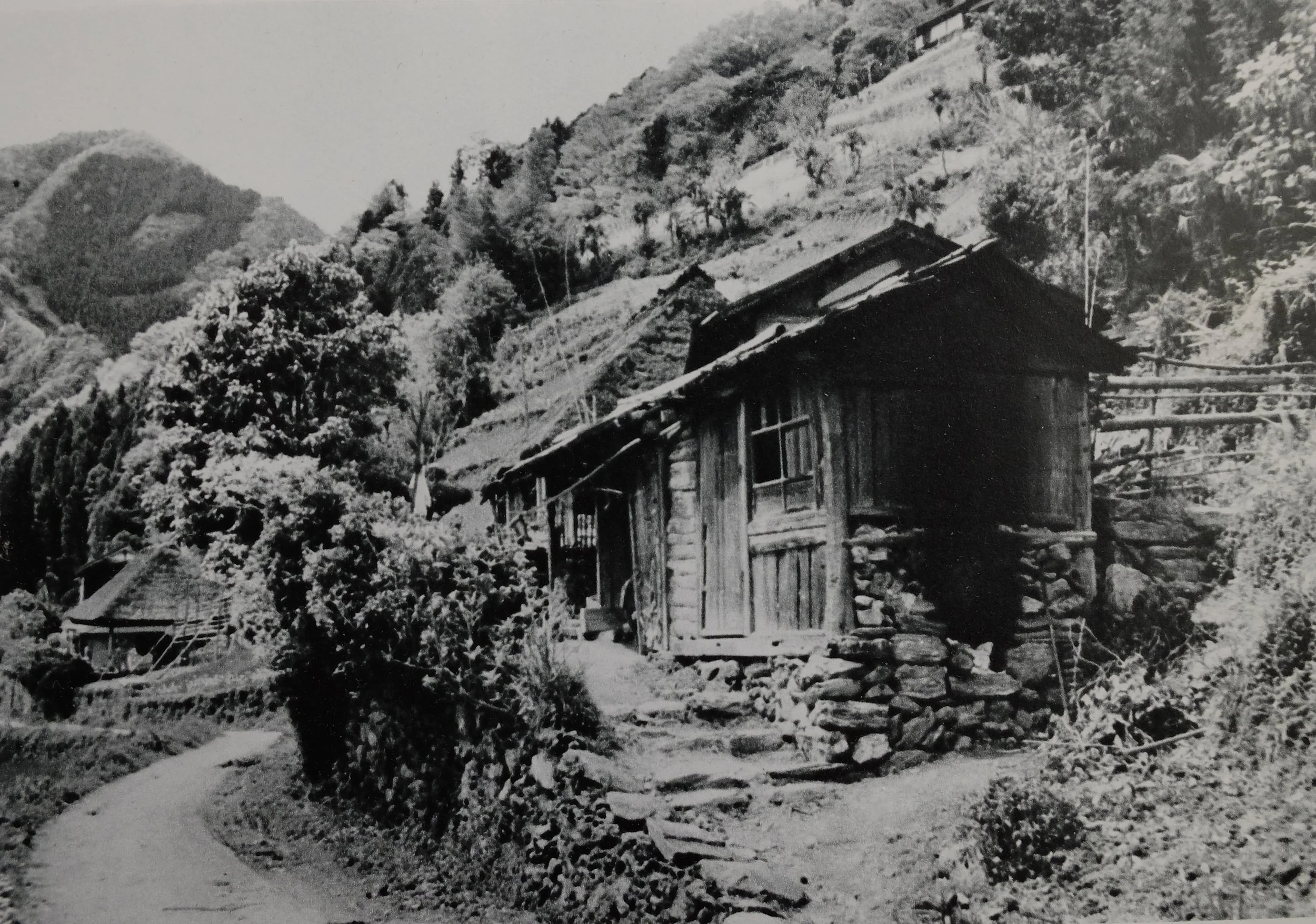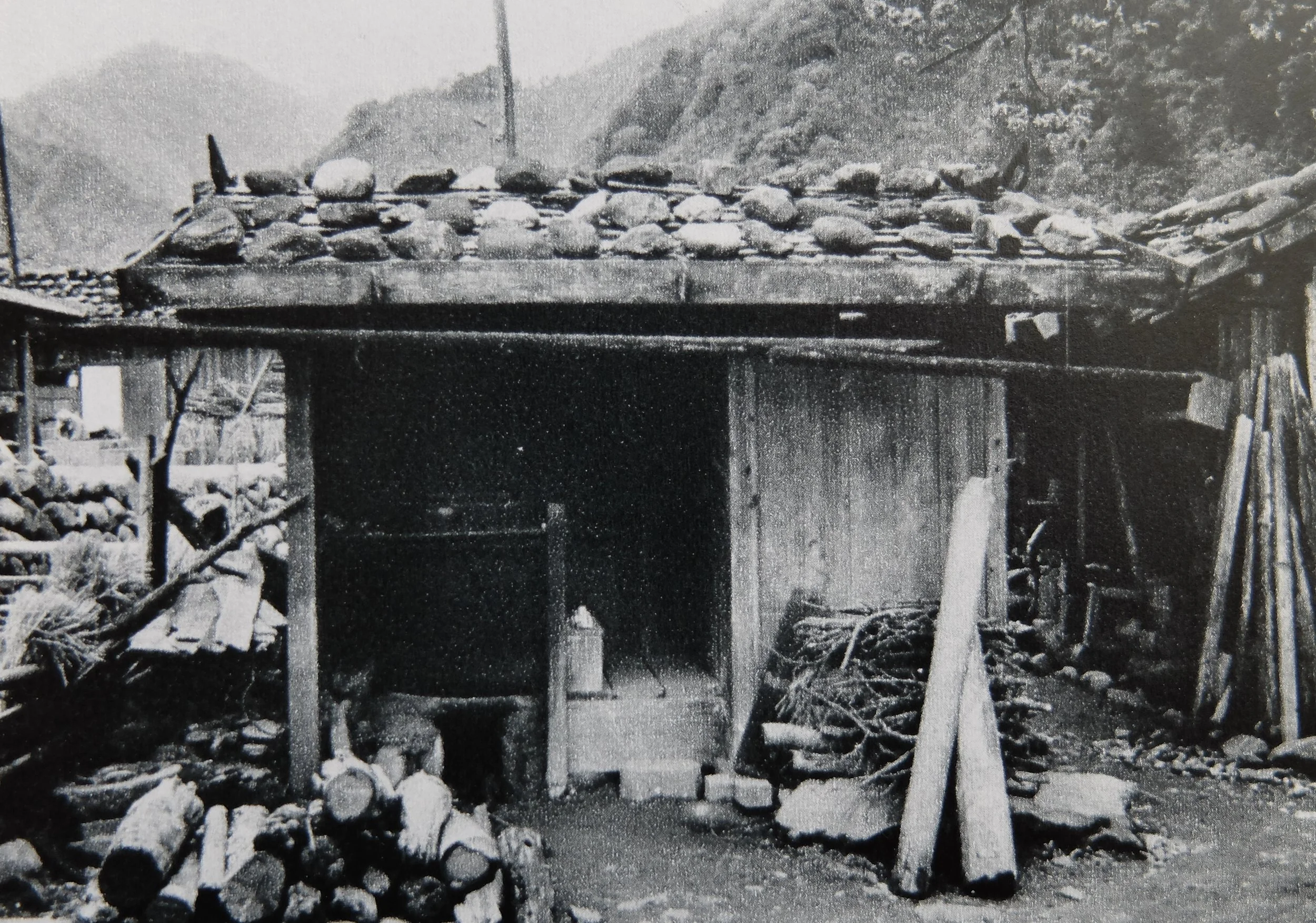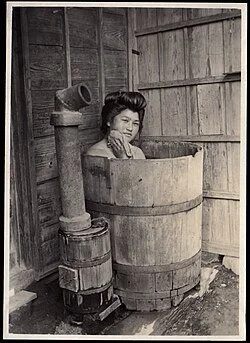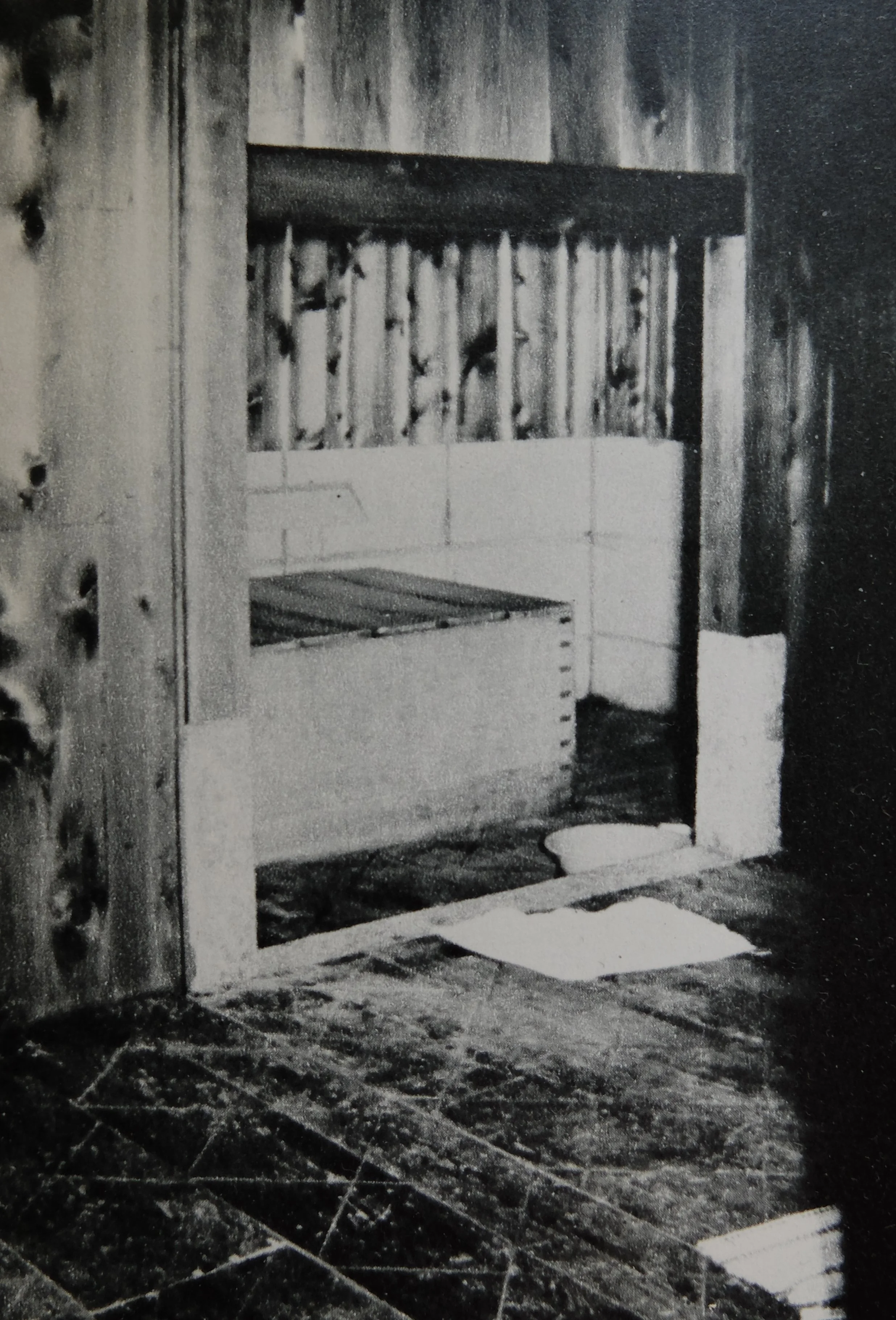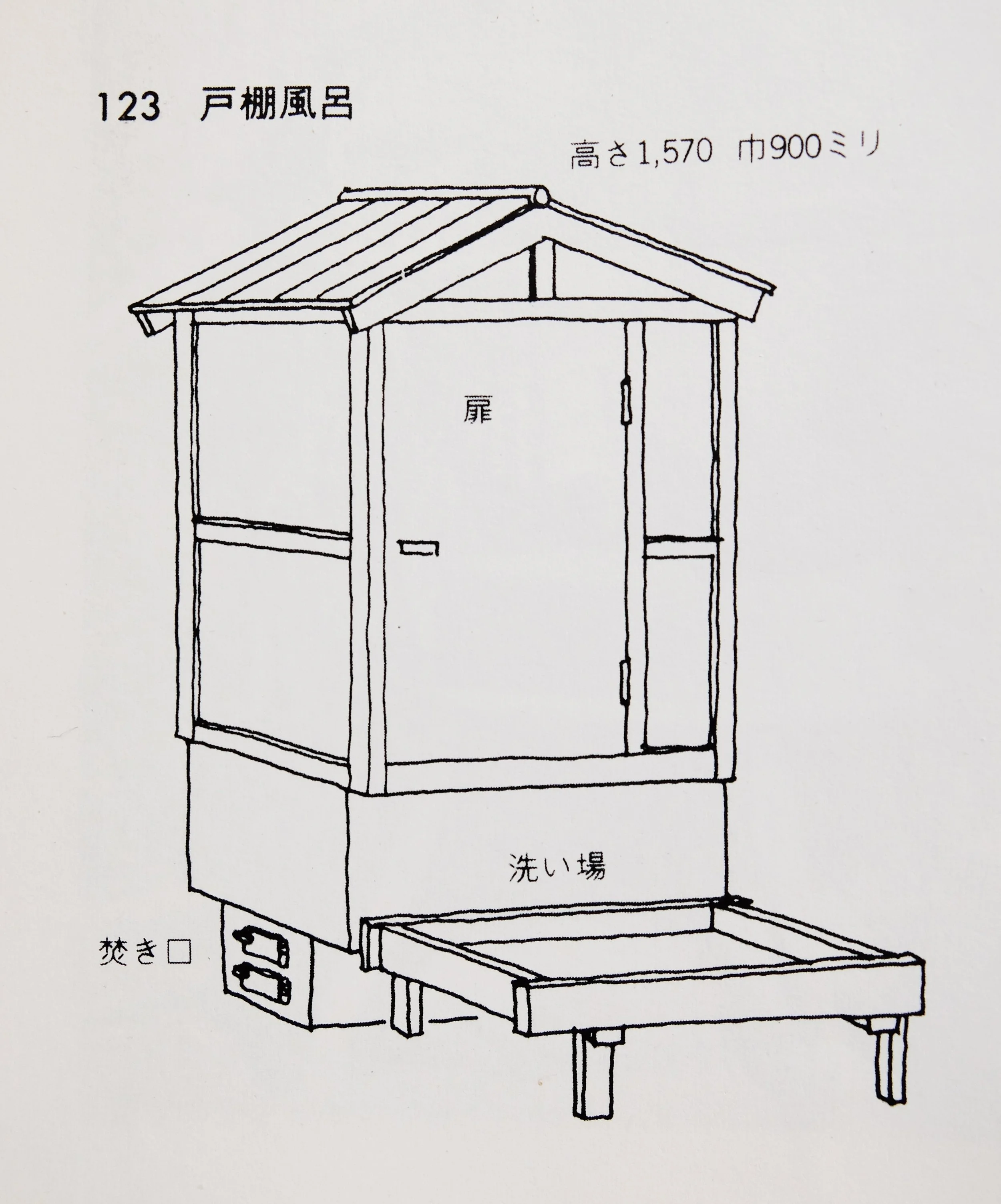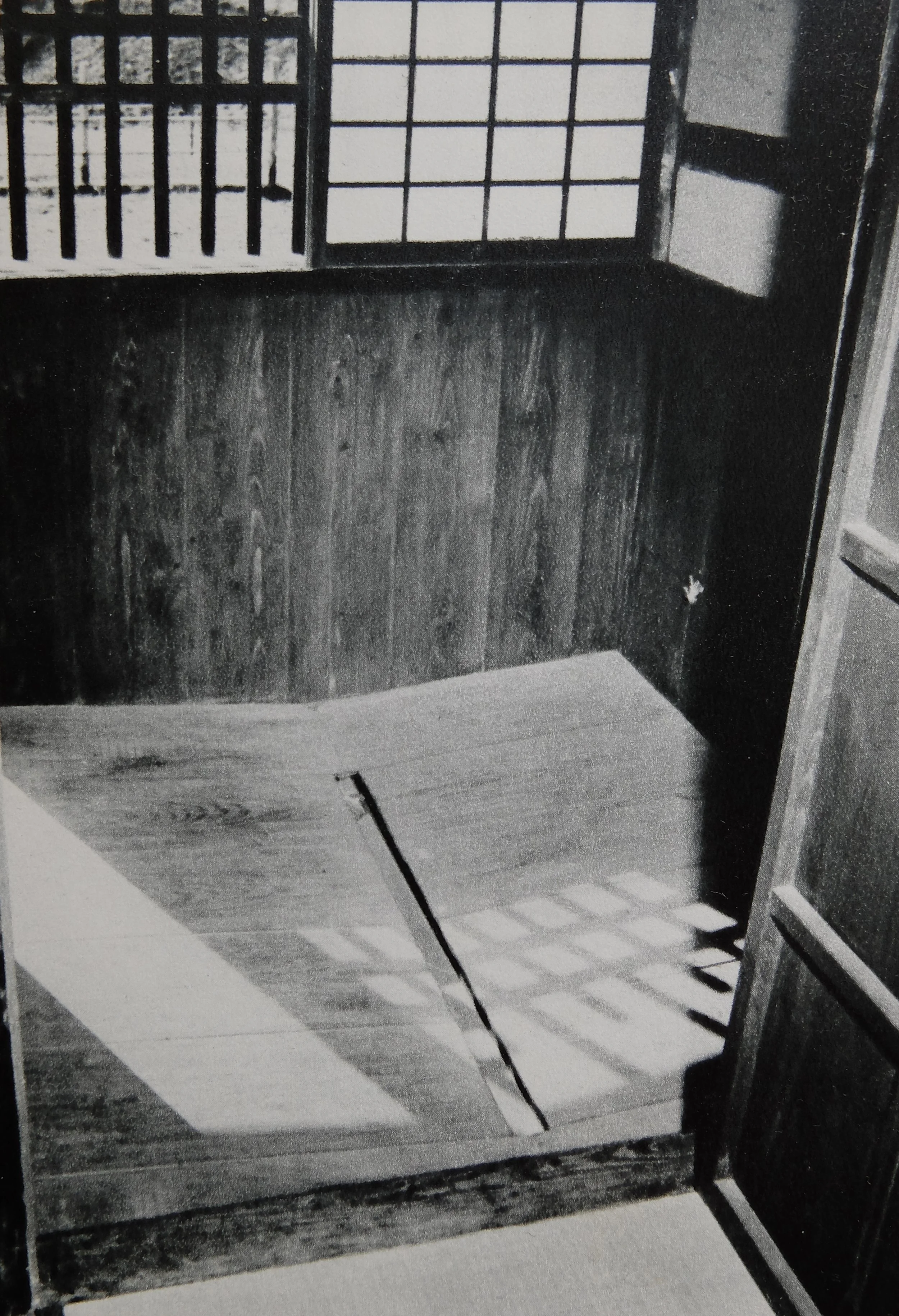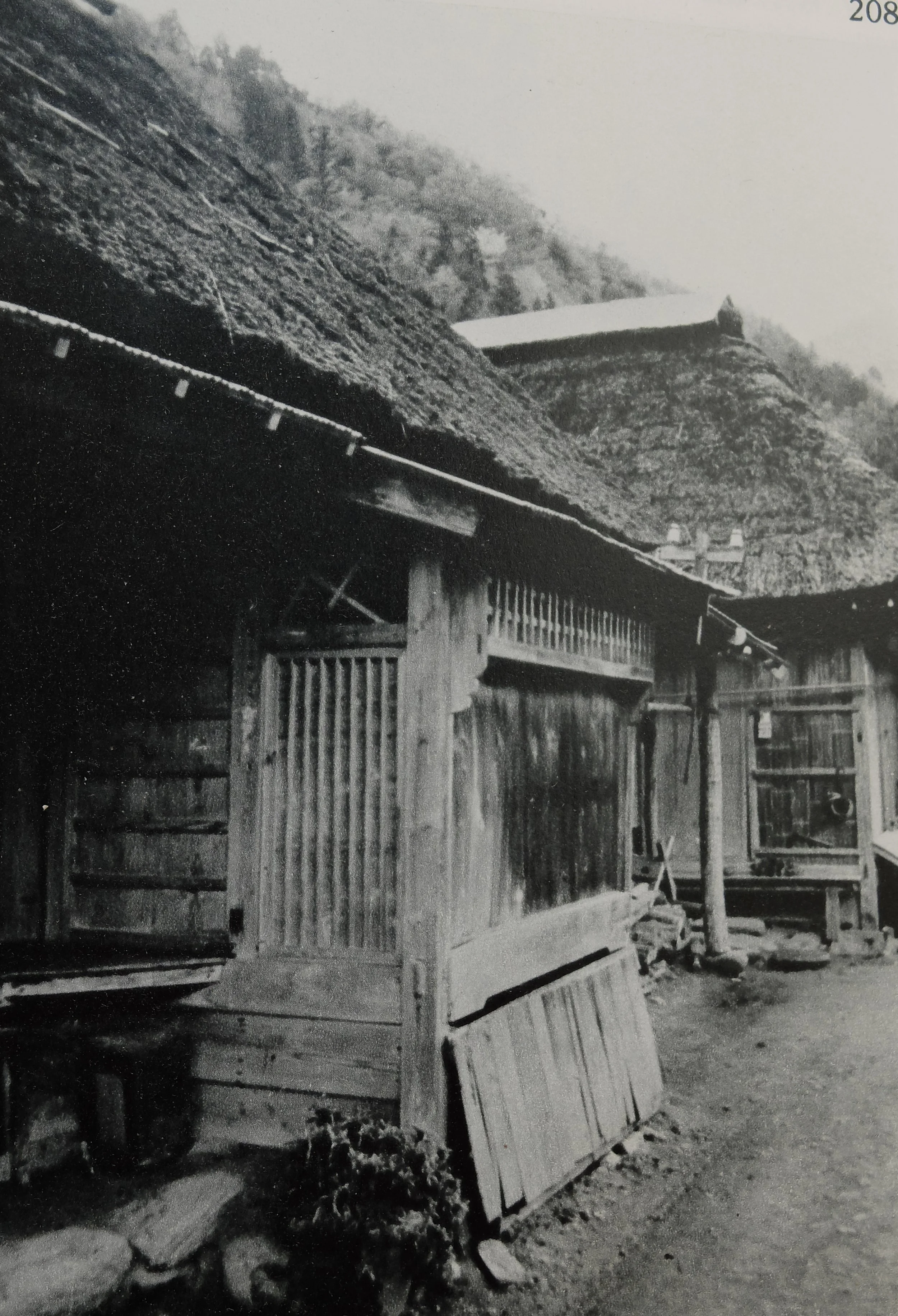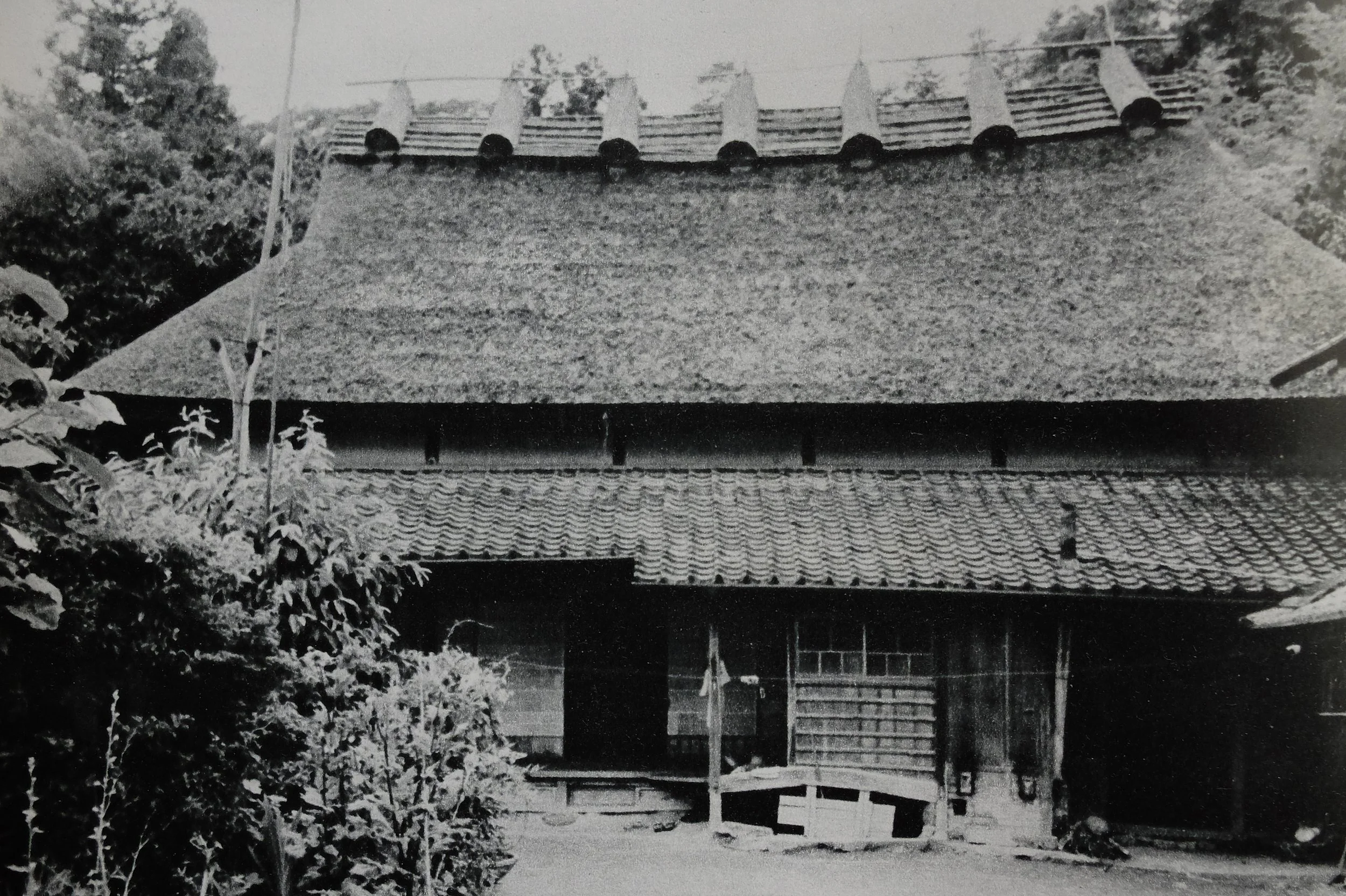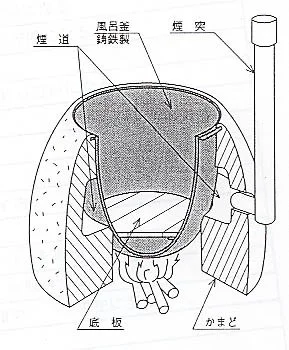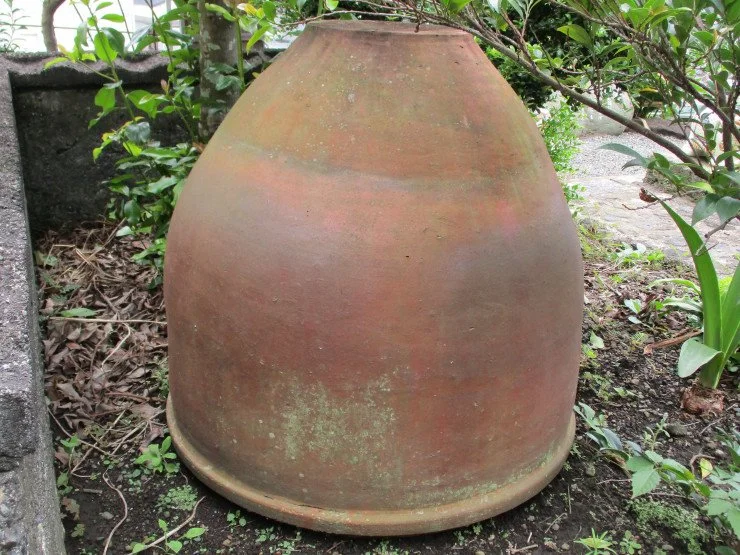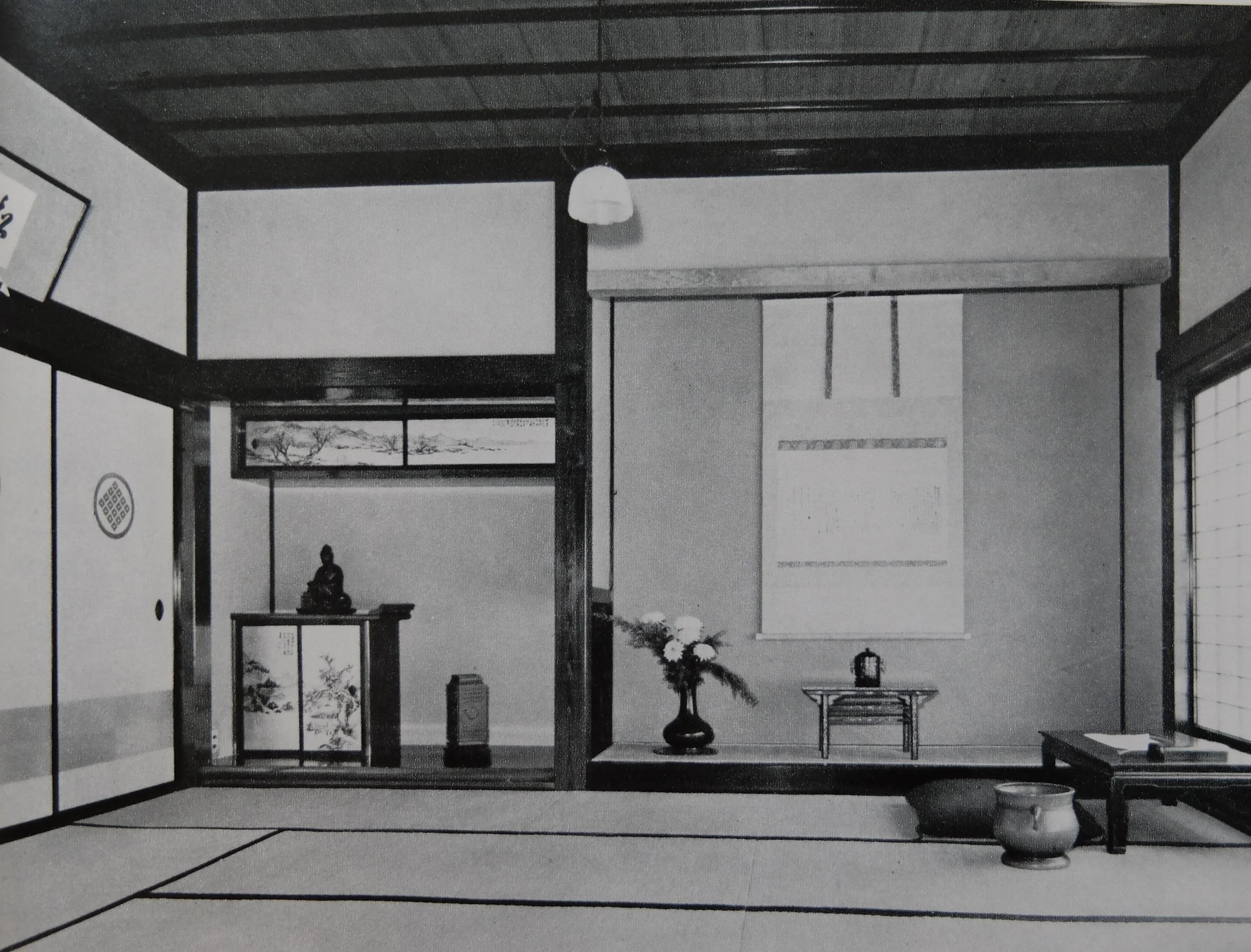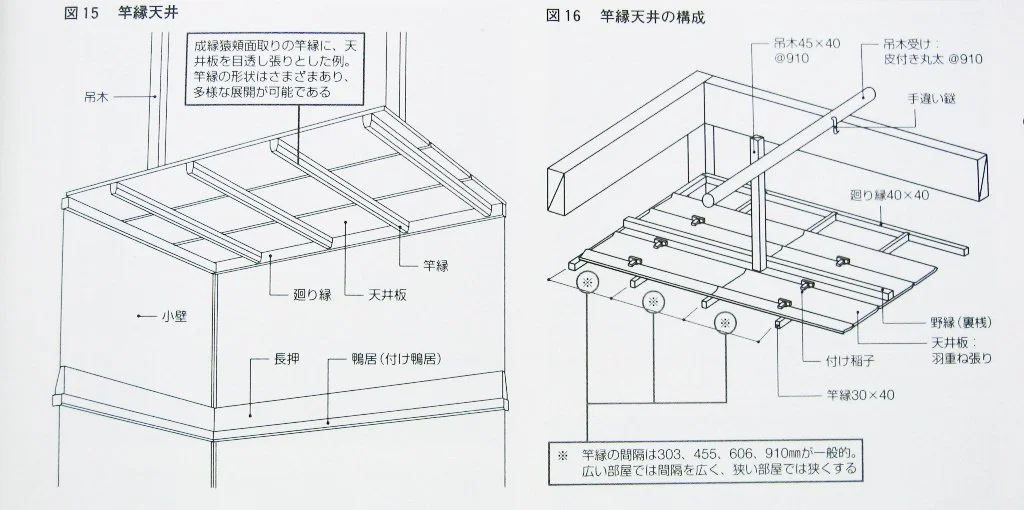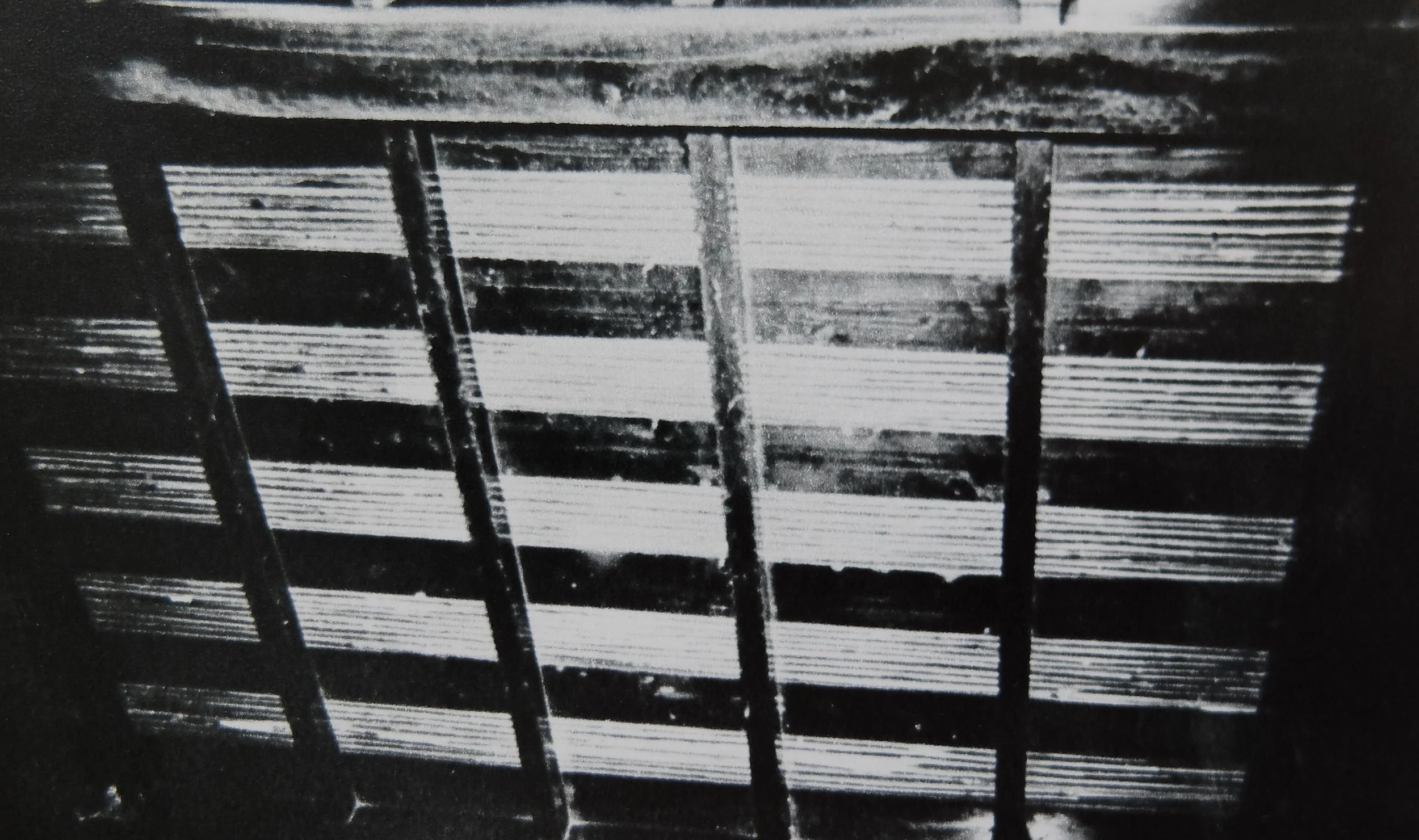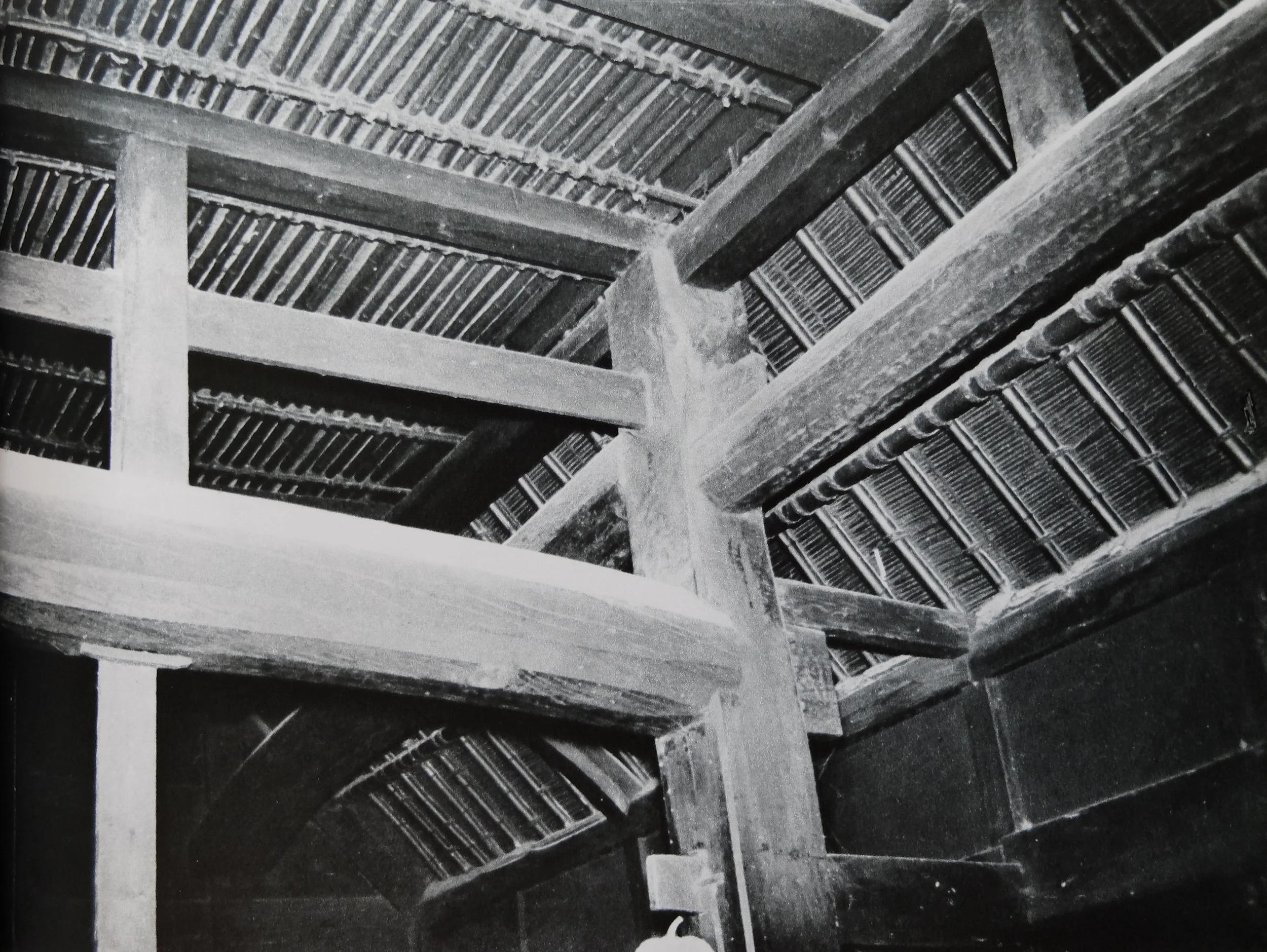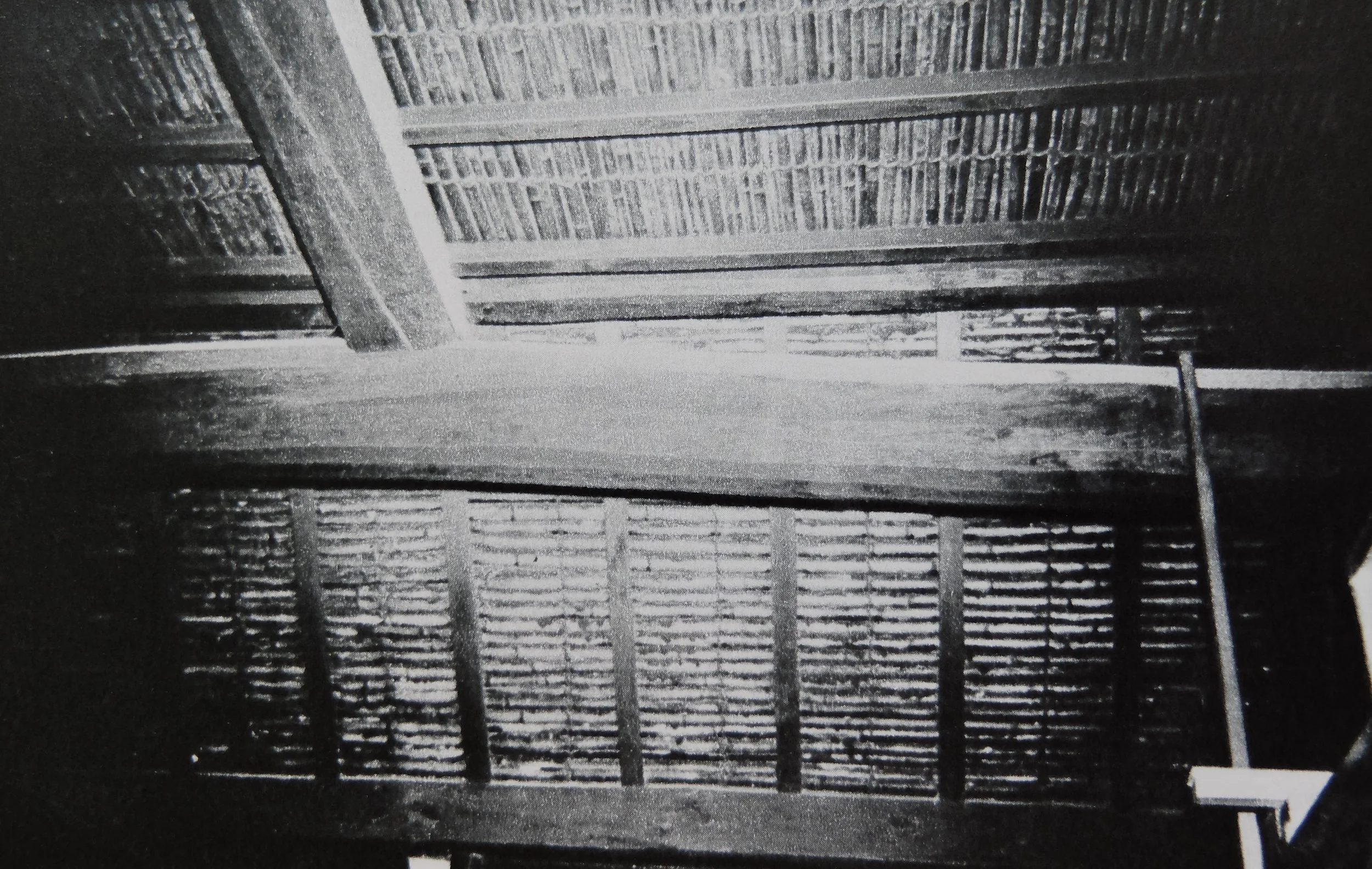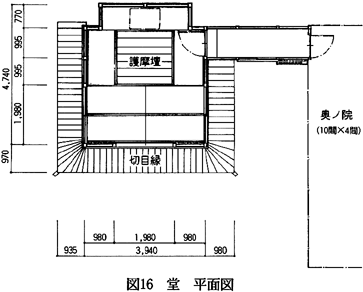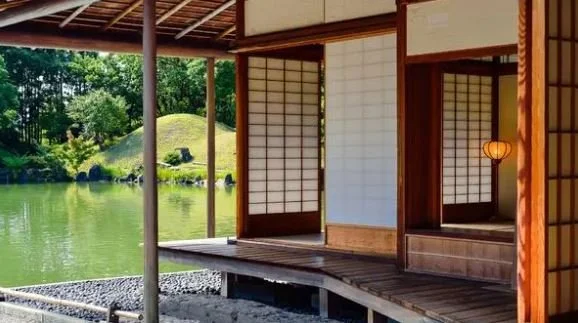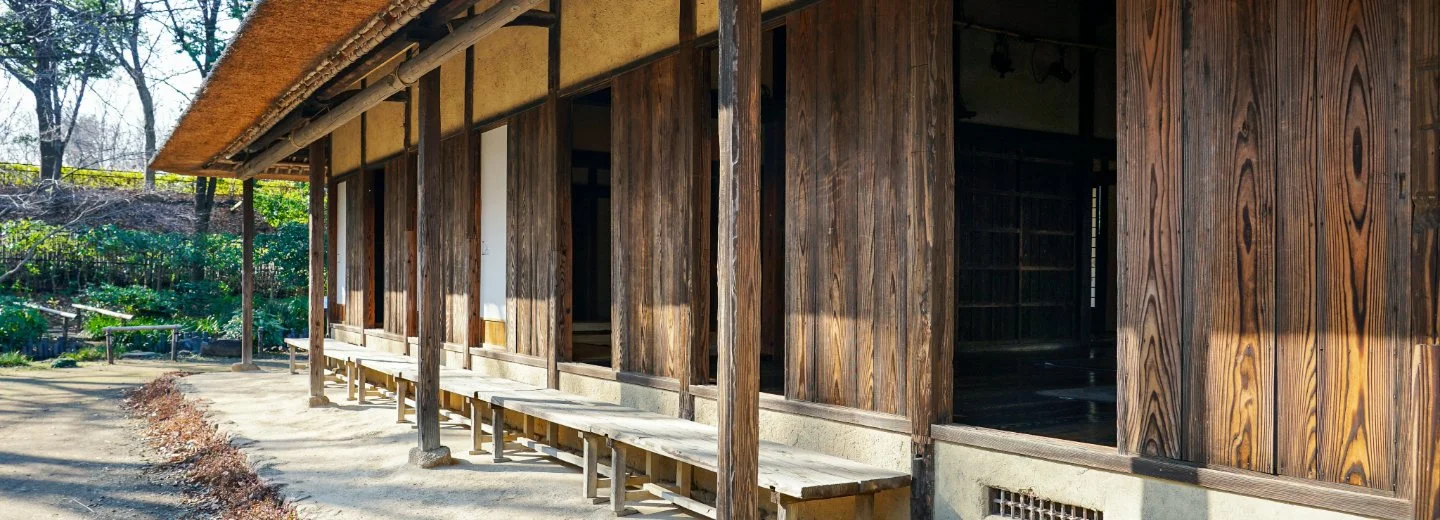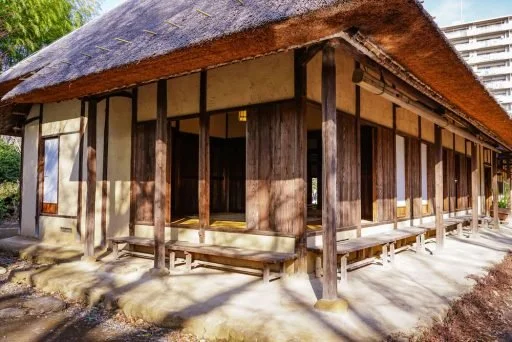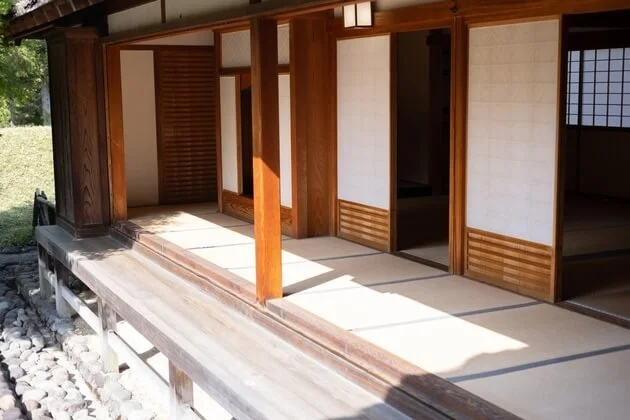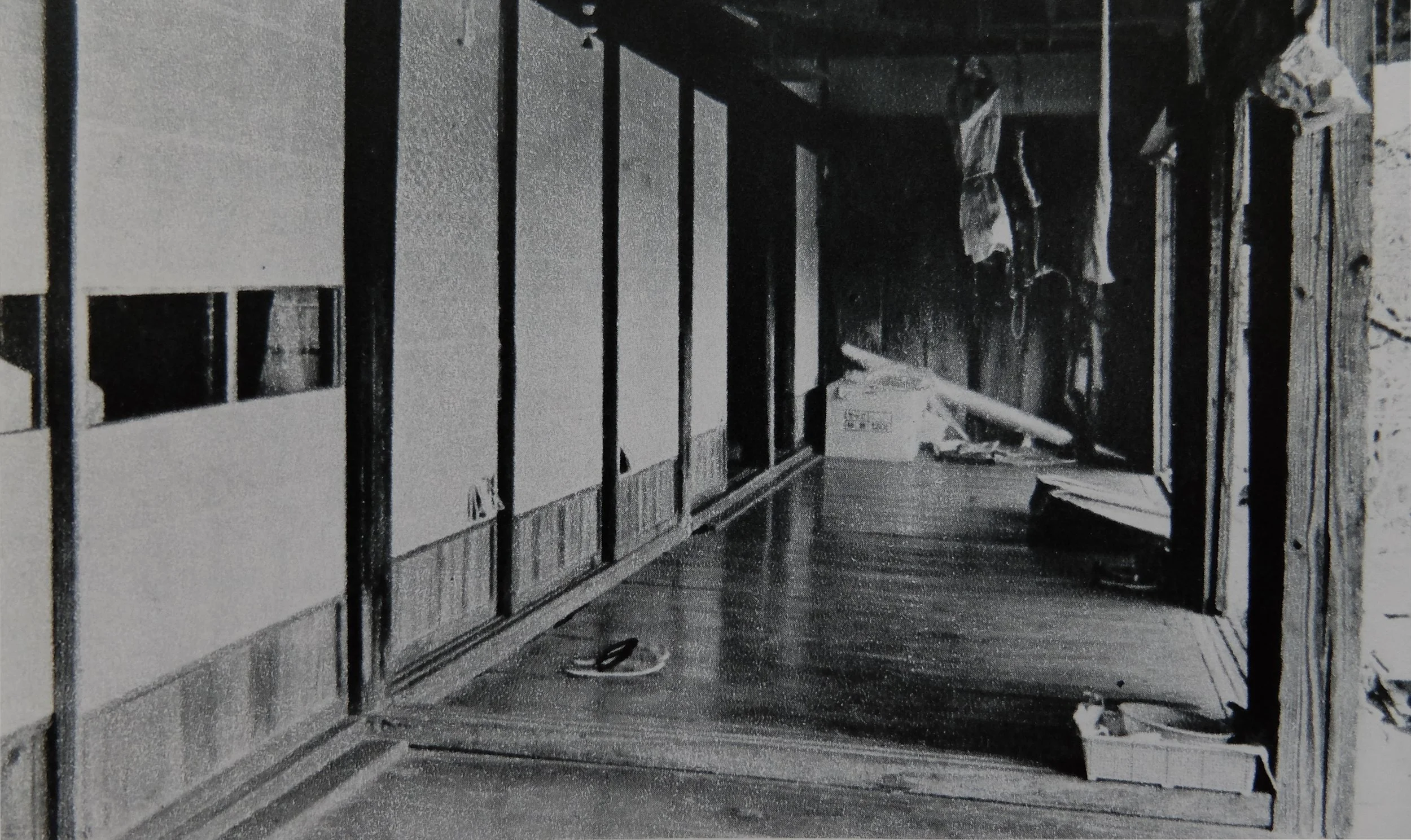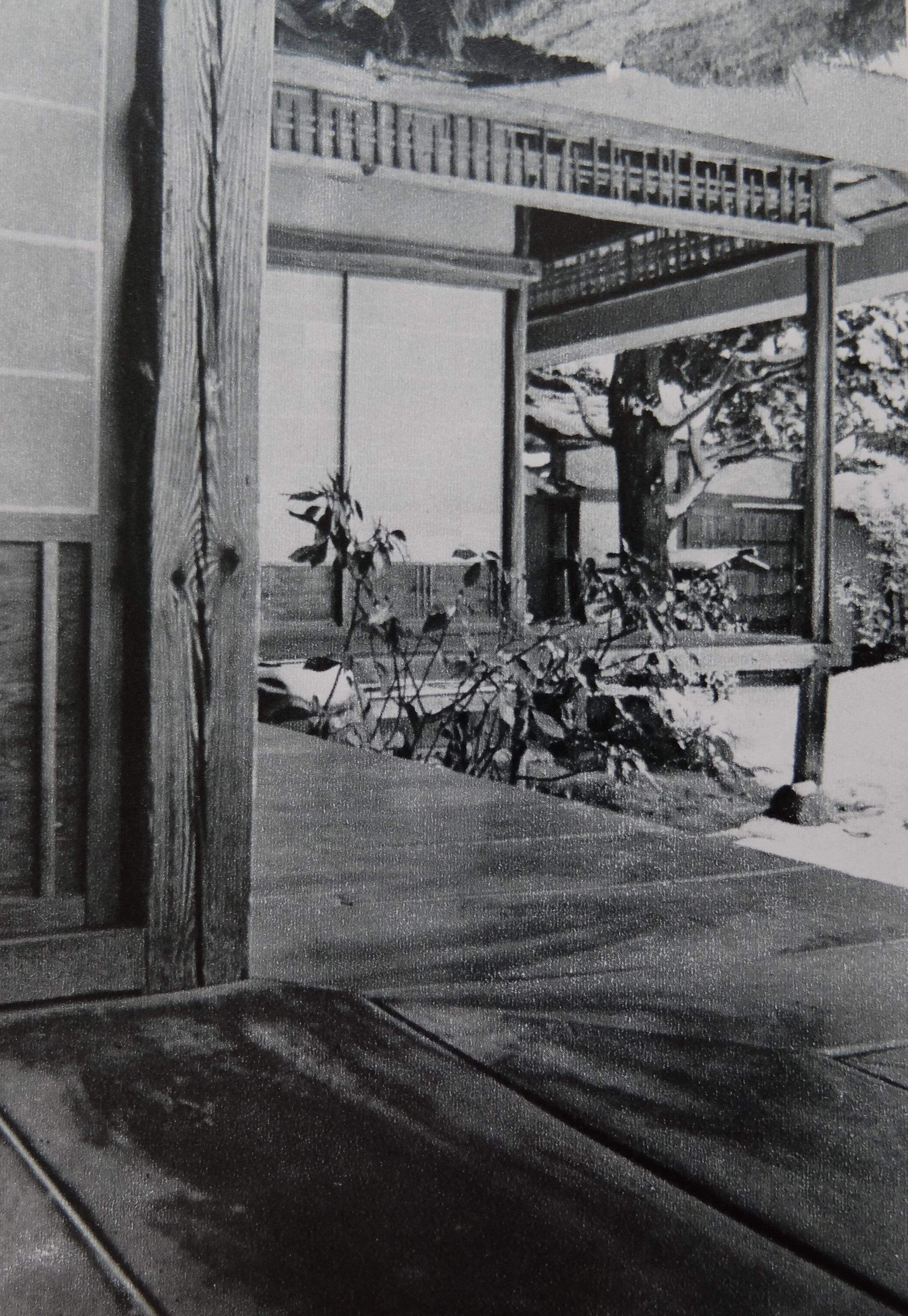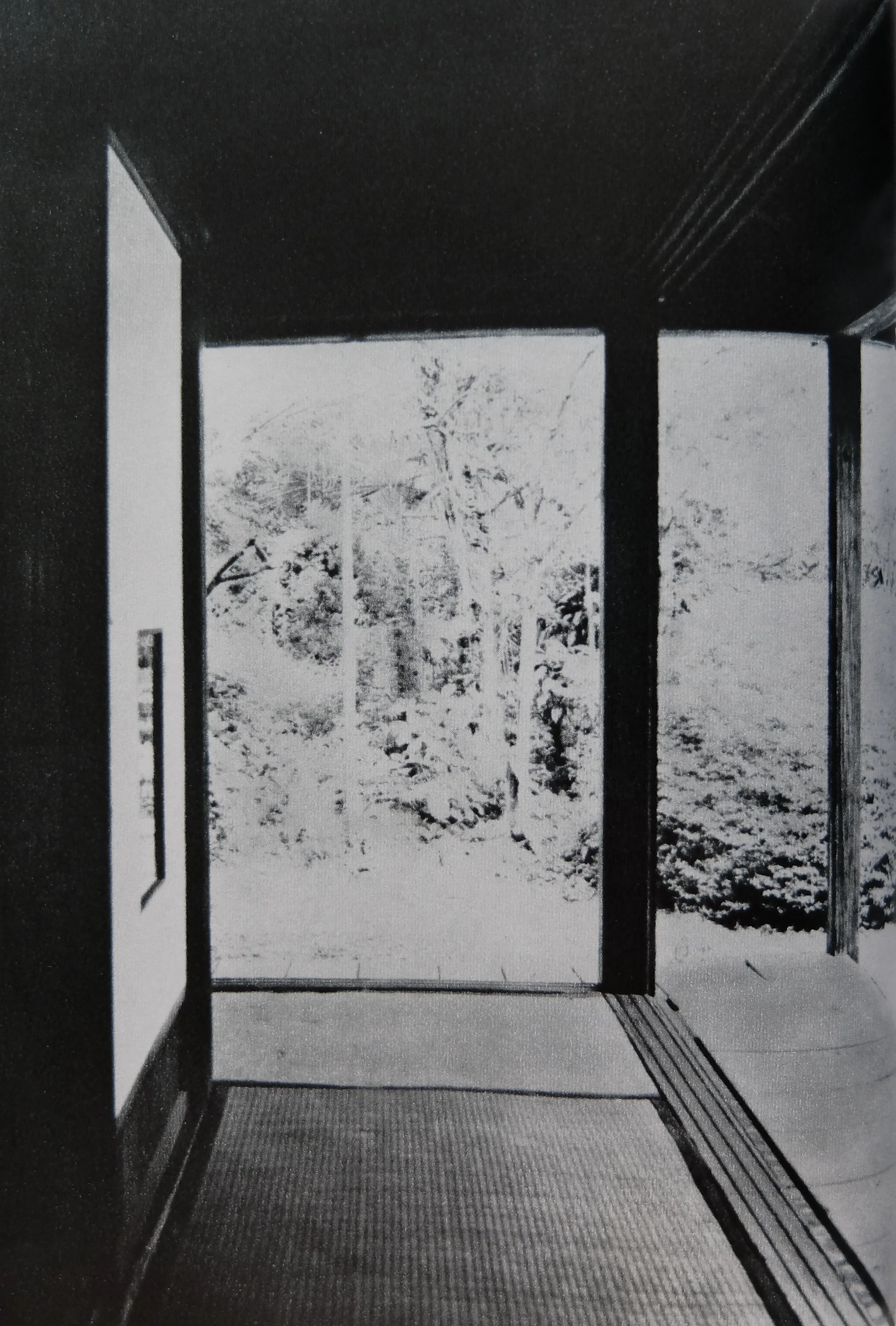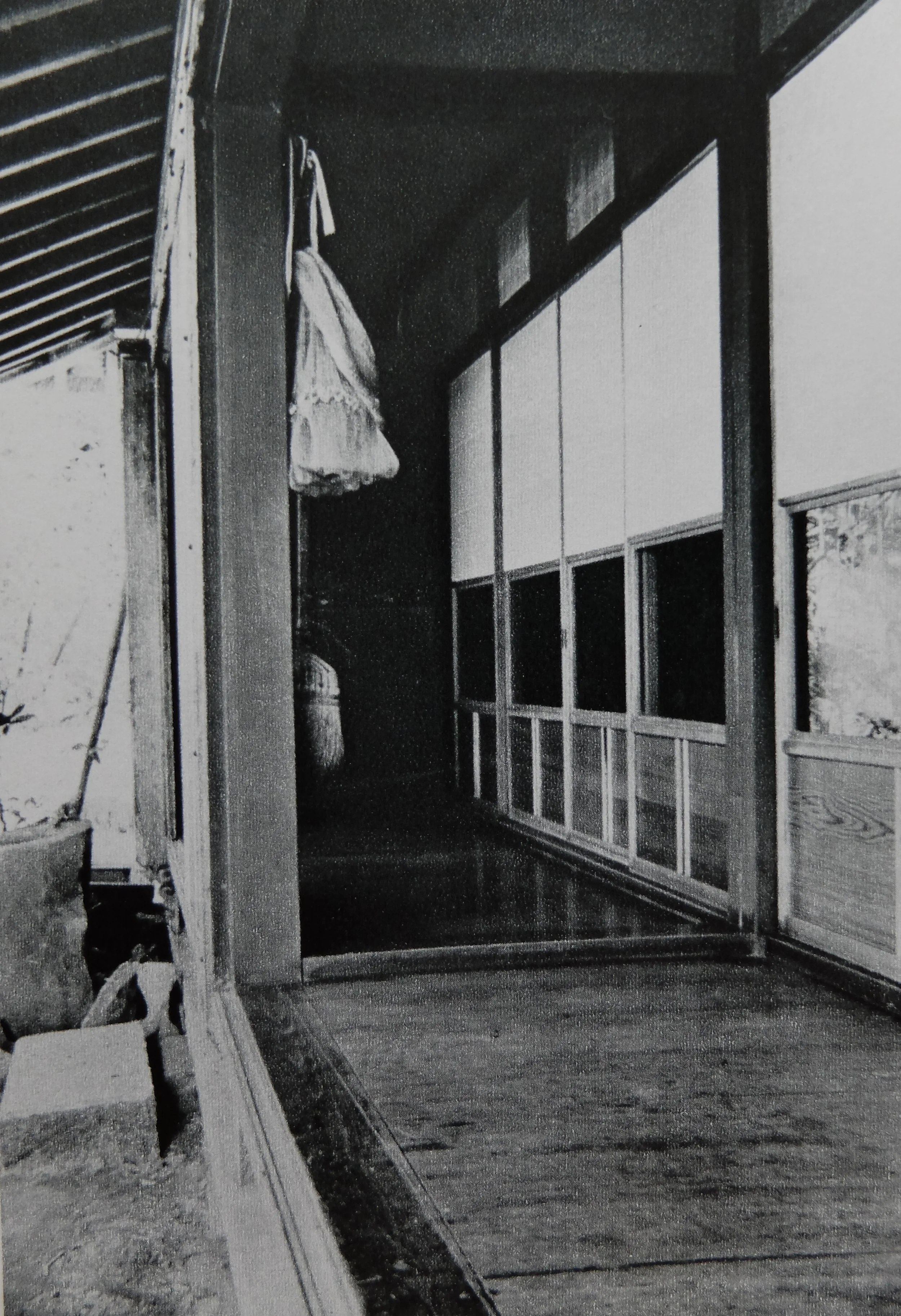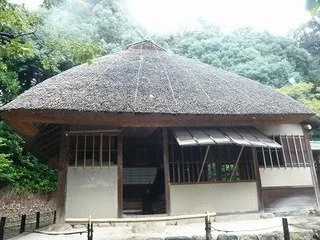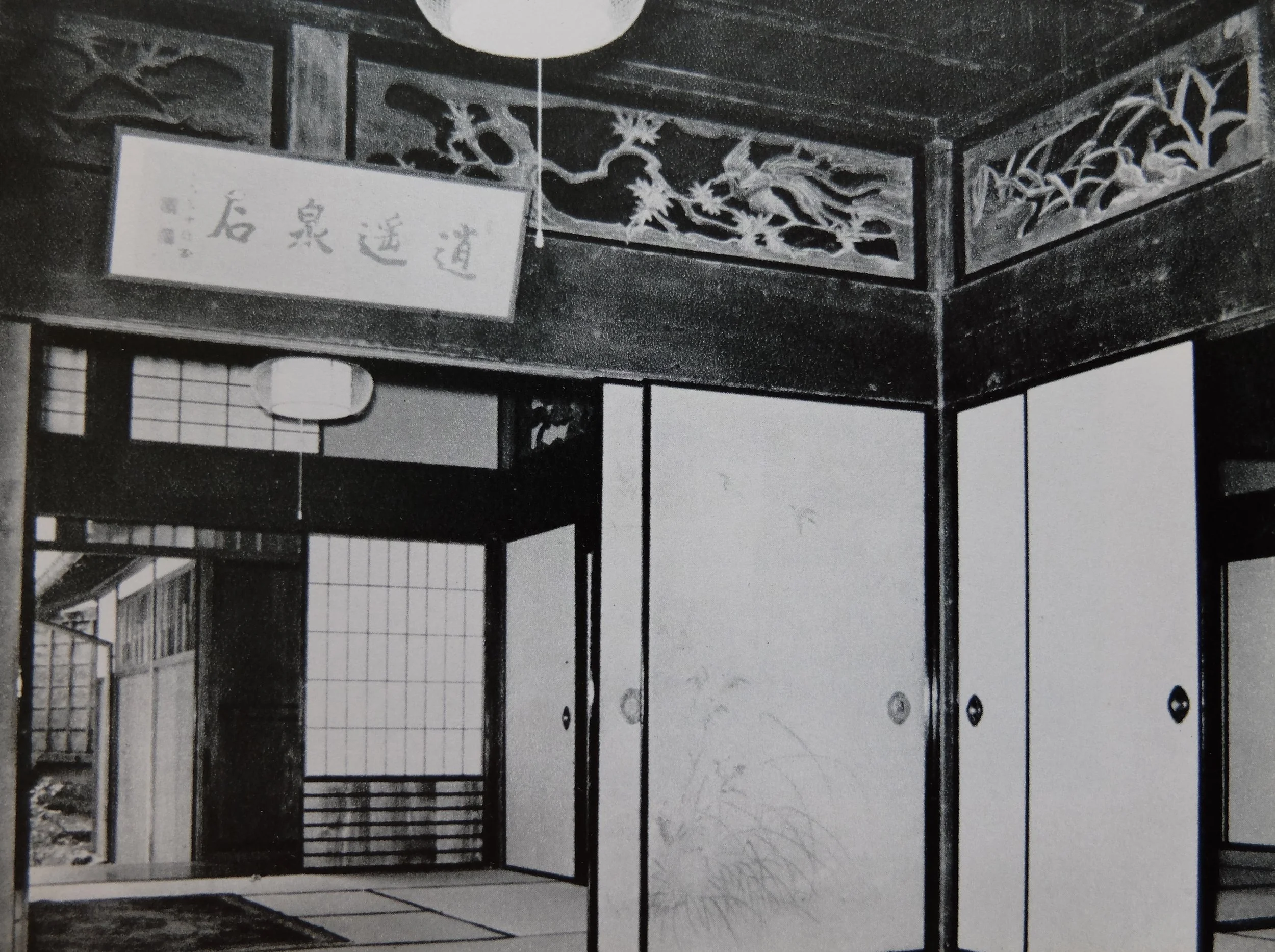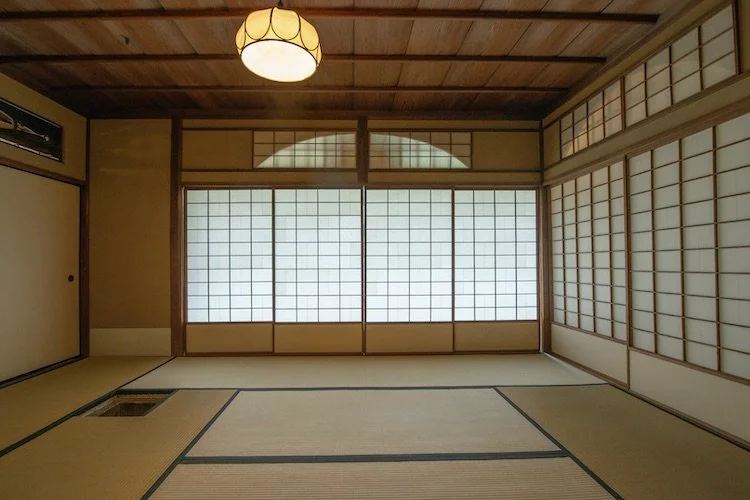In the north-east of Japan’s main island of Honshū (本州), in a part of the former Nanbu domain (Nanbu-han 南部藩) that is now in Iwate Prefecture, there is a widely distributed ‘L-plan’ (kagi-ya keishiki 鍵屋形式, lit. ‘key roof form’) style of minka called the magari-ya (曲り屋, ‘lit. ‘turning/bending roof’), in which the magari (曲り), the short leg of the ‘L’, projects out at the front of the main structure (omo-ya 主屋, lit. ‘main roof’) and houses a stable (umaya 厩); from long ago, horse breeding (basan 馬産) was encouraged in Nanbu as a matter of domain policy. Originally the stable was an ‘external stable’ (gaikyū 外厩), a separate structure to the omo-ya; but it is thought that it was incorporated into the main building for convenience in managing the horses in times of deep snow. Minka in which the omo-ya and stable are combined along a single axis (icchoku-sen 一直線) are called sugo-ya (直屋, lit. ‘straight roof’), but it is thought that the bent magari-ya plan was adopted because the sugo-ya resulted in a building that was too long and an inefficient use of the site. In the magari-ya, the stable often projects out from the south-east corner of the main building, optimising airflow and light; the façade end of the magari has a hip-and-gable (iri-moya-zukuri 入母屋造り) roof, the only one on the building. Smoke from the firepit (irori 炉) in the daidoko (だいどこ) or ‘kitchen’ located adjacent to the stable in the omo-ya warms the backs of the horses as it passes over them on its way to leaving the building via the Dutch gable (iri-moya 入母屋).
In this minka in Shizukuishi-chо̄ (雫石町), Iwate Prefecture, the roof of the main volume has been improved with a tiled ridge (kawara-mune 瓦棟); originally it would have had a thatched kure-gushi (くれぐし) ridge, as the stable volume still does. The façade has a hando-mae opening, and to its left, the wall and windows of the zashiki; this is an old arrangement.
In the western part of the modern municipality of Morioka City (Morioka-shi 盛岡市), in the vicinity of Shizukuishi (雫石), the omo-ya are built facing east, with the projecting magari part (housing the stable) located at the right of the façade (the north-east corner of the omo-ya). Shizukuishi is a town at the head of a valley (keikо̄ toshi 渓口都市) on the road to Akita (Akita Kaidо̄ 秋田街道), with Omyо̄jin (御明神) to its west, Nishiyama (西山) to its north, and the village of Gosho (御所) to its south. In the past these places together constituted what was known as Shizukuishi-gо̄ (雫石郷); gо̄ (郷) is an old territorial administrative unit representing a collection of several villages, perhaps equivalent in scale to the rural English parish. The Kitakami Plain (Kitakami Heiya 北上平野) is a basin (bonchi 盆地) with the character of a plateau (kо̄gen 高原), isolated by hills (kyūryō 丘陵), and its old customs and culture survived until relatively recently.
This large magari-ya differs from other examples in the external verandah-like construction (gai-en-jо̄ 外縁状) attached to the southern face of the stable; it is used as a work place (sagyо̄-sho 作業所) or drying place (hoshi-ba 干場). Shizukuishi-chо̄ (雫石町), Iwate Prefecture.
The layout of the Shizukuishi-gо̄ magari-ya shown below is of the ‘wrapped hiroma’ type (tori-maki hiroma-gata 取巻き広間型), centred around a 21-mat (ni-ichi-jо̄ 二一帖) ‘living room’ (joi じょい). Up (上み手) from the joi to its south, at the southern end of the omo-ya and furthest from the magari, are two south-facing rooms, wrapped around by a ‘verandah’ (en 縁): an 18-mat (juu-hachi-jо̄) ‘upper zashiki’ (uwa-zashiki 上座敷), and an ‘ante-room’ (hikae no ma 控えの間) called the shimo (下). ‘Down’ from the joi, towards the magari, is a large board-floored (ita-shiki 板敷) ‘kitchen’ (daidoko だいどこ), centred around a large firepit (irori いろり), where meals are taken and handwork (te-shigoto 手仕事) is done. There is no partition between the earth-floored utility space (doma 土間) and the raised-floor space (containing the daidoko) adjacent to it, so the state of the horses in the stable can be easily monitored. Bedrooms (shinshitsu 寝室) and other small rooms are arrayed along the west side of the omo-ya; in the past, straw (wara 藁) would be laid down in them to sleep on.
The roof valley where the main volume (omo-ya) and stable (uma-ya) meet is prone to rot, so this area is thatched to trace a gentle curve. The gable opening (hafu-guchi 破風口) of the stable facade often has an elaborate design, with carved figures and the like. Shizukuishi-chо̄ (雫石町), Iwate Prefecture.
The joi faces east, looking out over the ‘house field’ (yashiki-batake 屋敷畑); this part of the façade is known as the hando-mae (半戸前, lit. ‘half door in front’), a name that suggests that top-hung half-height shutters (han-shitomi 半蔀) were once fitted in the opening, before the more modern sliding lattice-and-paper fittings (shо̄ji 障子) were adopted. This opening is the formal entrance; there is also the horamē (ほらめえ), the everyday entrance to the doma in the kagite 鍵手 or magari. The word hora refers to the roof valley over the internal corner of the building where the two volumes of the magari-ya meet. This part of the roof is prone to rot, so it is thatched to trace a gentle curve rather than a sharp fold. The gable opening (hafu-guchi 破風口) of the stable façade is ornamented with latticework (kitsure gо̄shi 木連格子 or kitsune gо̄shi 狐格子), and the horizontal member below the opening, called the mae-tsutsumi (前包, ‘front wrap’), is carved with to-ryū-sui-sei-un (吐龍水生雲, lit. ‘vomit dragon water living cloud’) and the like, or characters (moji 文字) considered auspicious for fire prevention (hiyoke 火除け).
